In about 1610, the Venetian engraver and publisher Giacomo Franco published a collection of prints of Venice and the Venetians, under the title Habiti d’huomeni et donne venetiane con la processione della ser.ma signoria et altri particolari cioe trionfi, feste et cerimonie publiche della nobilissima citta di Venetia.
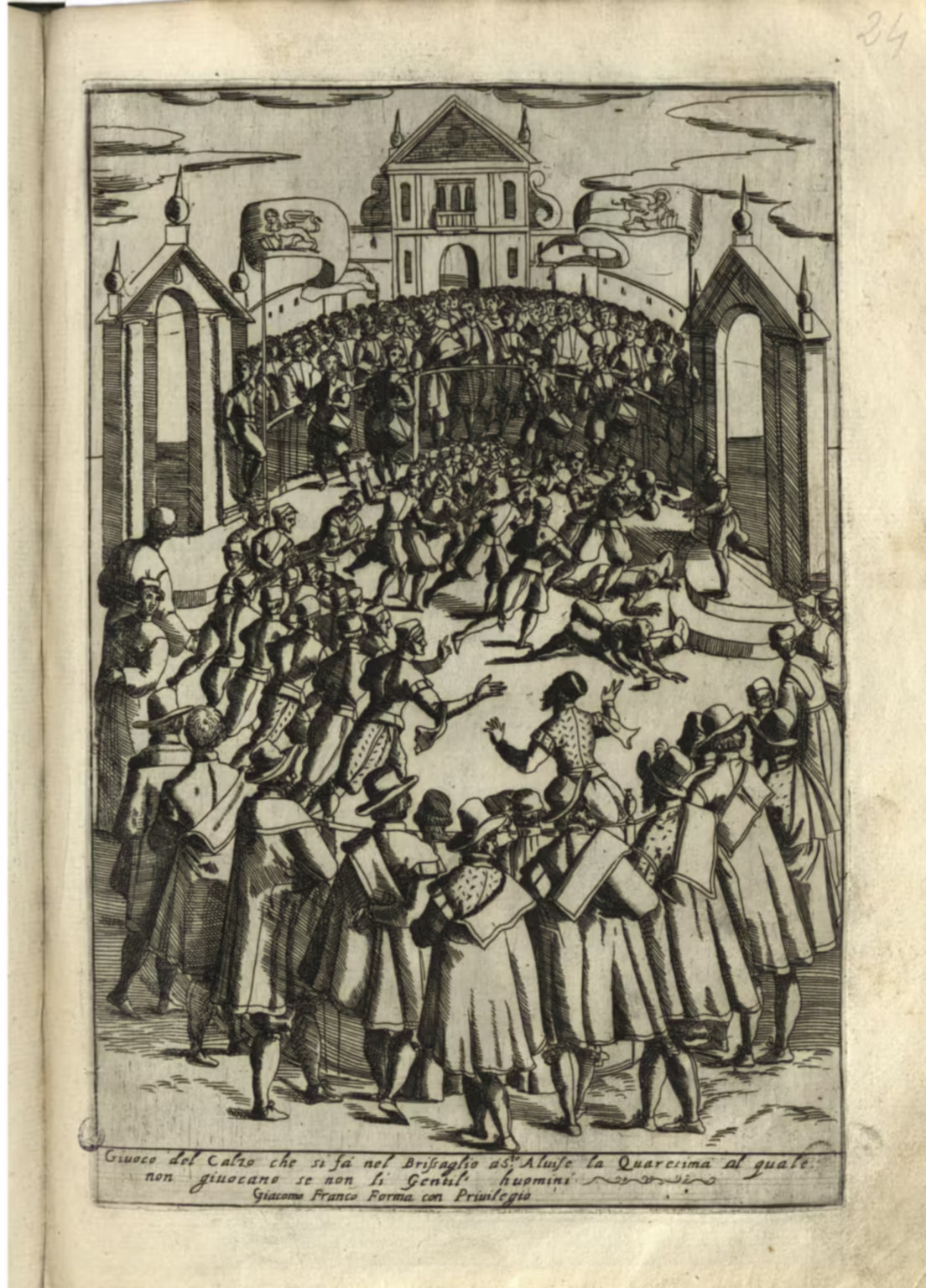
This rather longish title translates as: The Habit of the Venetian men and women with the procession of the most serene lordship and other particularities such as triumphs, feasts and public ceremonies of the most noble city of Venice.
The stated purpose of the work was to illustrate:
the fashions of the attire of this renowned City, the public spectacles, the most pompous festivals of the Serene Republic, the maritime jousts, and other royal entertainments that are usually held for great Princes …
The word habiti can both mean dresses, as in the way the Venetian men and women dressed, and ‘habits’, as in customs and ways of doing things.
The prints are a mixture of both, but with a tendency towards the latter meaning. In fact, most of the prints are of places or events, rather than of persons and their dress.
Giacomo (or Jacopo) Franco
Giacomo (or Jacopo or Iacopo) Franco was born in 1550, either in Urbino or in Venice, as a natural (illegitimate) child of the Venetian Battista Franco and a Francesca da Urbino.
His father was a painter and engraver, and Giacomo probably learned the trade from him.
Starting in 1579, Giacomo France produced numerous incisions and etchings as frontispieces and title pages for books, and longer series of prints as illustrations for popular publications, both religious and literary. He often worked on several projects at the same time.
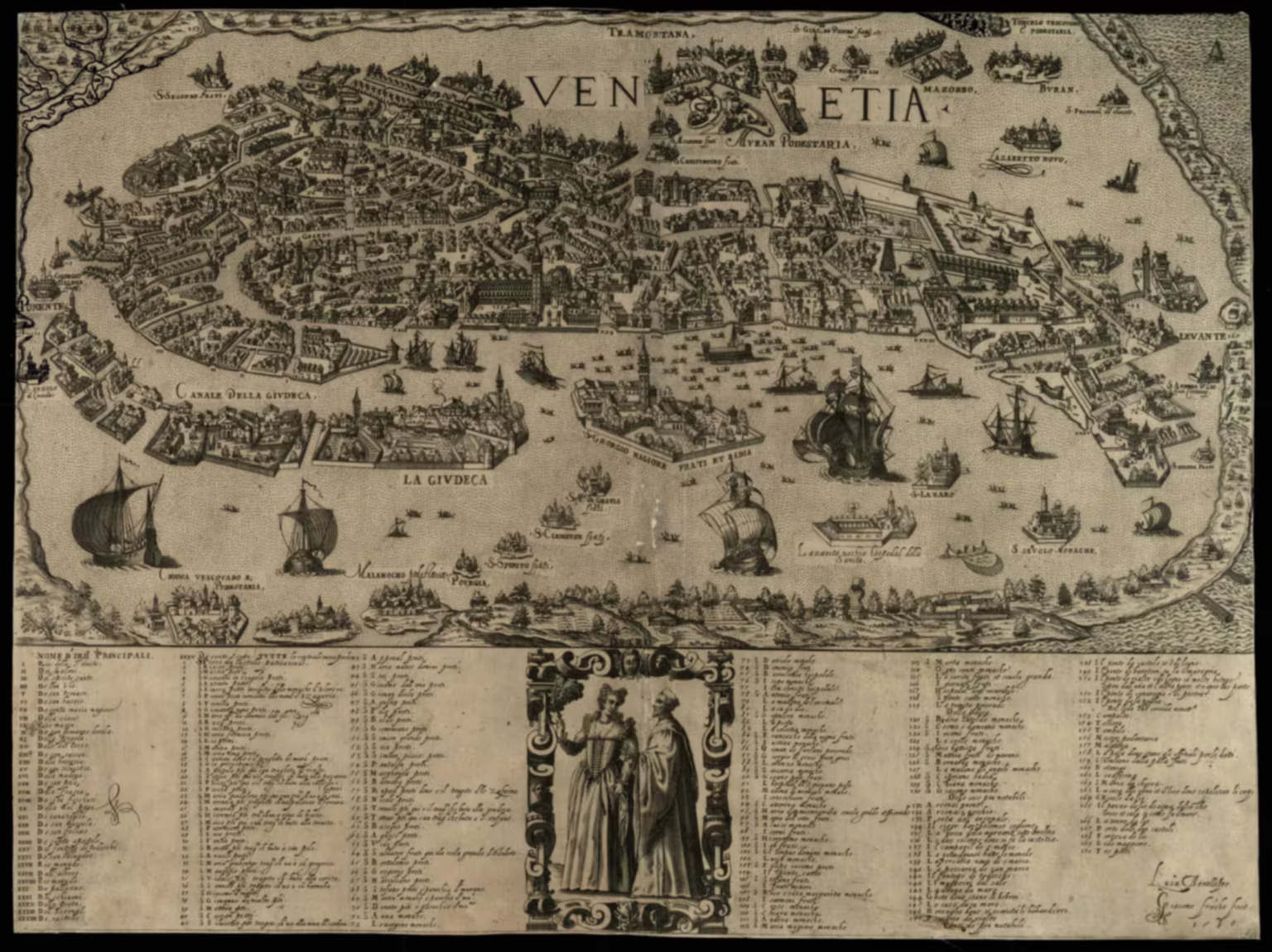
In 1595, Franco started operating as a publisher, and the first work published under his name was a collection of his own incisions. The works published by Franco normally carries the line in Frezzaria, all’insegna del Sole — in the Frezzeria, under the sign of the Sun — so his shop sign in this central Venetian road had the image of the sun.
Around the same time, it appears he ceased to produce engravings and etchings himself. Poor eye-sight might have been one of the reason for such a change.
His name doesn’t appear in the papers of the Venetian Scuola dei libreri, stampatori e ligadori — the guild of booksellers, printers and book-binders — but it does appear for the corporation of painters, for the years 1606 and 1619.
The Habiti d’huomeni et donne venetiane was probably published around 1610, which is the date on the dedication to the Duke of Mantua.
The last new work published under his name was from 1611. In 1614, two collections of previous works were published: La città di Venezia con l’origine e governo di quella and Habiti delle donne venetiane.
It is probable that Franco lost his eye-sight at some point. In a dedication of a print to a friend, he noted that he had lost eye-sight “for several years”, but that he recovered it in 1614, by divine intercession.
Still in 1614, he is mentioned in a document from the Scuola di S. Maria della Carità, where he might have sought help for the infirmity.
In his testament, dated June 16th, 1620, it is noted that he was still physically sick, but with his mental abilities intact.
He died on June 28th, 1620.
Prints
- Habiti d’huomeni et donne venetiane
— title page - In questo habito si vede il Ser.mo Doge di Venetia, nelle cerimonie et feste principali, il qual habito fuori chel corno, che è proprio ornamento…
— The Doge. - I Procuratori di S. Marcho, così detti dalla cura et amministratione che hanno dell’entrate di quell’augustiss.o Tempio vestono perpetuamente la toga…
— the Procurators of St Mark. - Questa è la porta del maraviglioso Arsenale, nel quale del continuo si fanno galere, et altri vasselli da guerra, e questa gente che si vede è la maestranza…
— The gate of the Arsenal and the craftsmen leaving. - I Capitani G.nali dell’armata Venettiana, sogliono vestire questo habito, et tale fu visto già il Ser.mo Sebastiano Veniero quando fracassò l’armata Turca…
— The Admiral of the navy. - Lega fatta tra il S.mo Pontefice Pio V, Filippo 2o Re di Spagna et la Ser.ma Rep.ca Veneta l’anno 1571. Capitani furono per Sua S.tà M. Antonio Colonna…
— Allegory of the Holy League fighting the Turks in 1571. - L’ ecc.mo Generale mette à banco le Gallere dove si fa un beliss.mo apparato di tapezzarie, et si mette fuori gran quantità di dinari d’oro et argento…
— Navy ceremonial in St Mark’s square. - Ordine che tiene la Sereniss. Republica Veneta nel dare il bastone all’Ecc.mo General di Mare
— Ceremony of handing command to the Admiral of the navy. - Questa è la bellissima Piazza di San Marco, per la quale passa il Sereniss. Principe in processione con la Signoria il giorno solenne del Corpo di Cristo…
— St Mark’s square during the procession of Corpus Domini. - Sogliono in varie sorte di barche con diversa quantità di remi spesse volte i barcaruoli di Ven.a gareggiar tra loro e tal hora anco per premij proposti… — Regata on the Grand Canal.
- Loggietta, nella quale si congregano li Eccel.mi Proc.ri al loro tribunale nel tempo del gran Consiglio, stando alla diffesa loro una parte della maestranza… — The loggia under the bell-tower.
- Il Gran Conseglio dell’eccelsa Republica Venetiana, nel quale si riducono i nobili col Ser. mi principi a creare i Magistrati, di bellissima pittura ornato
— The Greater Council in session. - Nelle occasione di processione per tutto l’anno suole la Signoria di Venetia col Doge circondare la piazza di S. Marco il che riesce…
— Procession of the doge in St Mark’s square. - Il Ser.mo Prencipe con la Signoria, il giorno di Natale ascolta Vespro in S. Georgio Magiore et il dì seguente va alla Messa in detta chiesa in contrato…
— The Christmas visit of the Doge and the Signoria to San Giorgio Maggiore. - Il Doge di Venetia con tutta la Sig.ia il giorno dell’Ascensione a sposare il mare con questa solenità la quale et per degnità et per concerto…
— The Feast of the Ascension - Le donne habitanti i lidi circostanti a Ven.a concorrono parimente a così fatta festa vogando insieme, et contendendo i premij con universal piacere…
— Regata with female rowers. - Questa è la Procuratia sopra la Piazza dirimpetto al Palagio del Serenissimo, fabbrica di modello stimato il più superbo d’Europa, inventato dal Sansovino… — The Marciana Library.
- Questa è la Real Sala del Collegio, dove ogni giorno si riduce la mattina il Serenissimo Principe con la Signoria per dare udienza ai Legati del Pontefice… — The Hall of the College where foreign dignitaries were received.
- Questo è il Palazzo del Ser.mo Prencipe, dove sono ordinati diversi Magistrati, ne’ quali sono ascoltate e decise la cause forensi di tutto il Dominio
— The Doge’s Palace. - Il Prencipe eleto, dopo l’haver fatto in Chiesa di S. M.co, nel Pergolo l’oratione al populo, entra in un palchetto con suoi Parenti et l’Amiraglio…
— The creation of a Doge with money distributed to the people. - La Ser.ma Dogaressa dal suo Palazzo ascende nel Buccintoro et accompagnata da nobiliss.ma schiera di gentildonne pomposam.te vestite…
— The dogaressa on the ceremonial ship the Bucintoro. - Feste che si sogliono fare per la città della caccia del toro, amazzar la gatta col capo raso, pigliar l’anadre, pigliar l’occa nell’acqua et altro
— Popular feast at Santa Maria Formosa with many games and entertainments. - Perché si è passato a tanto eccesso di contesa, che con i legni seguono spesso grand.mi inconvenienti la battagliola è ridotta a i pugni, la qual cosa…
— Fights with sticks on bridges as entertainment. - Il giovedi gasso per memoria di certa vittoria ottenuta dalla Rep.ca nel Friuli si fa pub.ca festa nella Piazza di S. M.co dove assiste il Doge…
— Fat Thursday at St Mark’s with games and entertainment. - Per antico essercitio del popolo fu introdotto per decreto pub.co de l’inverno si facesse per i ponti di Ven.a la battagliola combattendosi l’avantaggio…
— Fist fights on bridges as entertainment. - In questa guisa si veggono le maschere in Vinegia nel Carnovale, d’ogni qualità di persone le quali sogliono quasi tutte alle hore 23…
— Carnival scene. - Habito di gintilhumo d’estade; Habito di gentilhuomo d’inverno; Habito di mercante; Habito di artigiano
— Men’s clothing. - Intartenimento che dano ogni giorno li ciarlatani in Piazza di S. Marco al populo, d’ogni natione che mattina e sera ordinariamente vi concore
— Entertainers and snake oil salesmen in St Mark’s square. - Habito di gentildonna maritata fuori di casa; habito di novizza o sposa col ballarino; habito di gentildonna maritata per casa; Habito di vedova
— Women’s clothing. - Piaceri che prendono i Nobeli di Venetia nel tempo dell’invernata nell’uccellare nelle lagune intorno alla città nelle loro fisolere, et altre sorte…
— Venetian noblemen hunting birds in the lagoon during the winter. - La Dogaressa moglie del Doge la quale porta in capo un berettino più picciolo del corno del Doge, porta parim.te al collo una collana d’oro…
— The dress of the wife of the doge. - Le feste o balli che la Sereniss. Repub. suol fare di gentildonne, di richiss. gioie adornate, per honorare i Principi che a Venegia talor capitano
— Grand feasts and balls. - A questo modo vano le novizze in gondola per visitar le loro parenti ne’ monasterij accompagnate da gran n.o di gondole
— Unmarried women in gondolas. - Ritorno del Buccintoro dopo fatta la cerimonia del sposare il mare, qual’è accompagnato da galere, bregantini et quantità grande di gondole…
— The return of the Bucintoro after the Ascension celebration. - Giuoco del calzo che si fa nel Brissaglio a S.to Alvise la Quaresima, al quale non giuocano se non li gentil’huomeni
— Game of Calcio at Sant’Alvise. - Rotta datta da Cristiani a l’armata Turchesca alli 7 Ottobre 1571 a Cuzolari, scoglio 8 miglia discosto da Lepanto: durò l’asalto dalle 17 fino le 21 ora…
— The Battle of Lepanto in 1571. - Miraculosa victoria a Deo Christianis contra Turcas Tributa
— Victory over the Turks. - In questa maniera la state ne’ gran caldi si va’ ai freschi per li canali della città la sera fino a meza notte con musiche di voci, e diversi istromenti…
— Evening outings in gondola with music and song, on summer evenings. - Il nobiliss.o Teatro deto Il Mondo fato fare dalli 40 gentilhomeni eletti da sua Ser.ta nell’entrata della Ser.ma Dogaressa Moresina Grimani
— Theatrical boat to celebrate the Dogaressa. - Abito delle cortegiane prencipale
— The dress of courtesans. - Le cortegiane si fanno conciare a diversi modi la testa
— The hair-do of courtesans.
About the numbering
The numbering of the prints is mine, and fairly random, i.e., more or less the order in which I’ve found them.
Such prints were often sold separately, or as loose sheets in a folder. In some cases, there’s a title page or an index page — for example, the Arti di Gaetano Zompini and the Gran Teatro di Venezia by Domenico Lovisa — but I don’t think this collection ever had an index.
Consequently, different copies of the collection of prints have varying sets of prints, as it is easy to both remove, add and change the order of the sheets in the folder.
Gallery
The prints below are from the most complete collection I have found online.
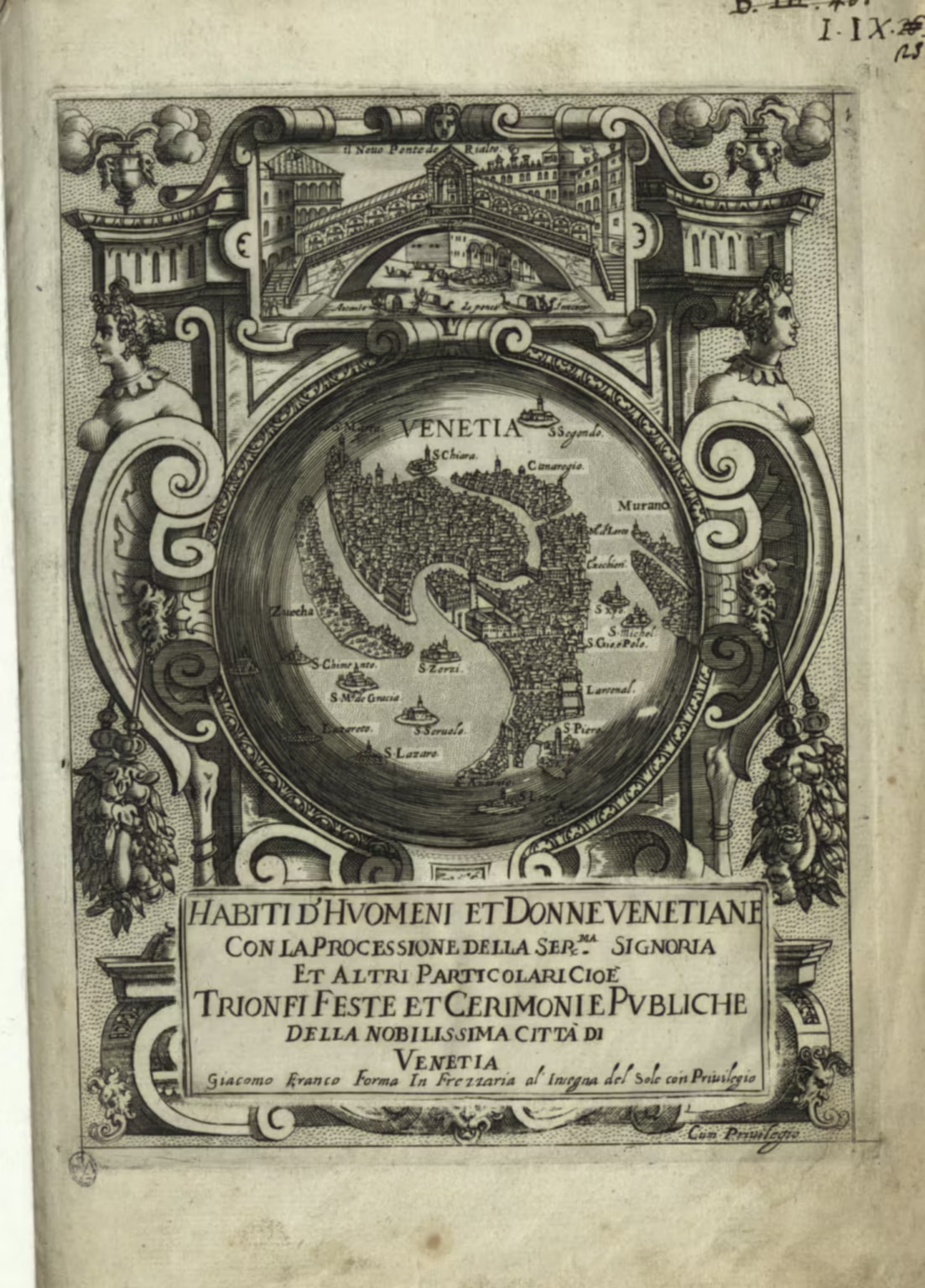
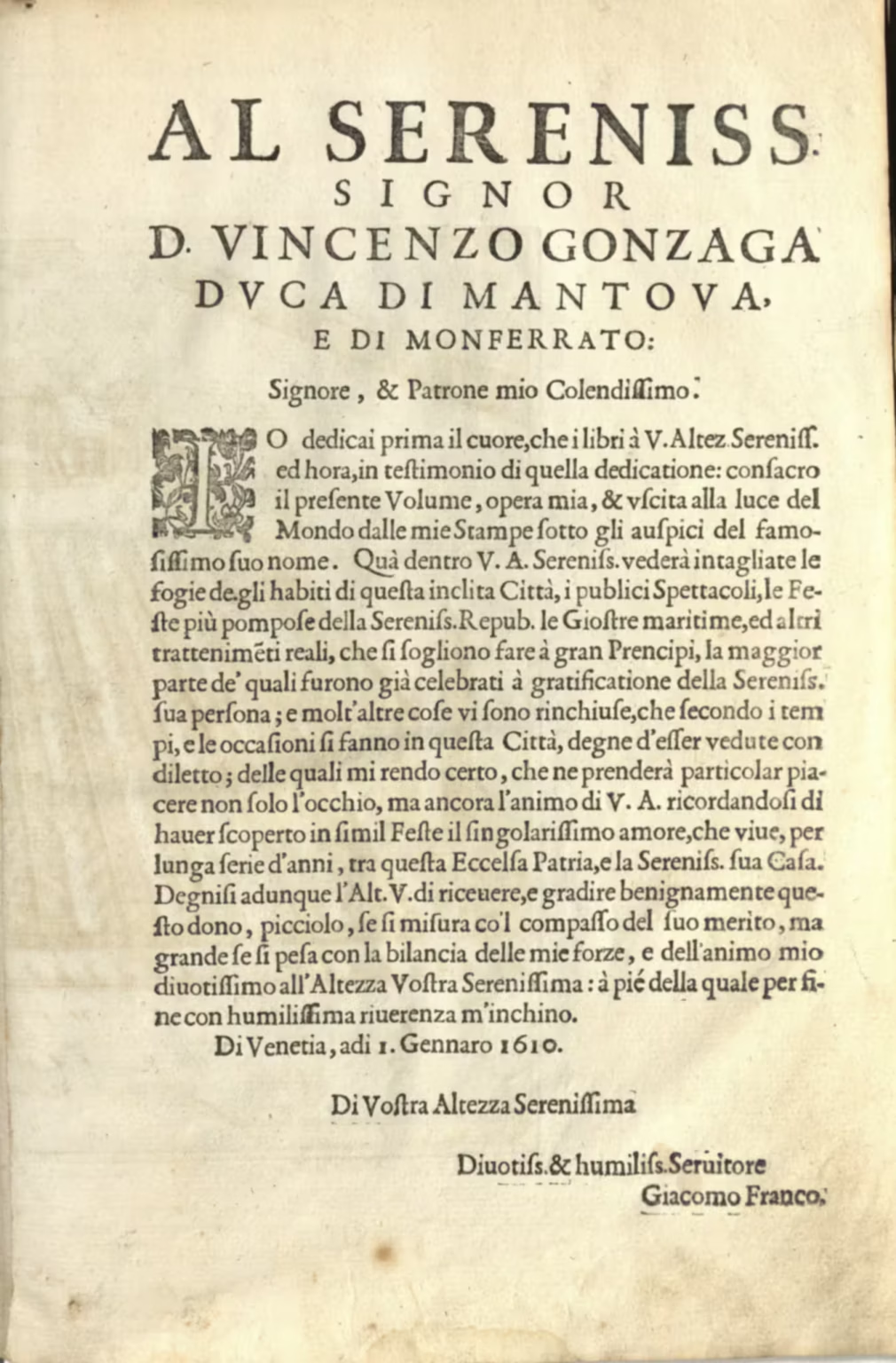
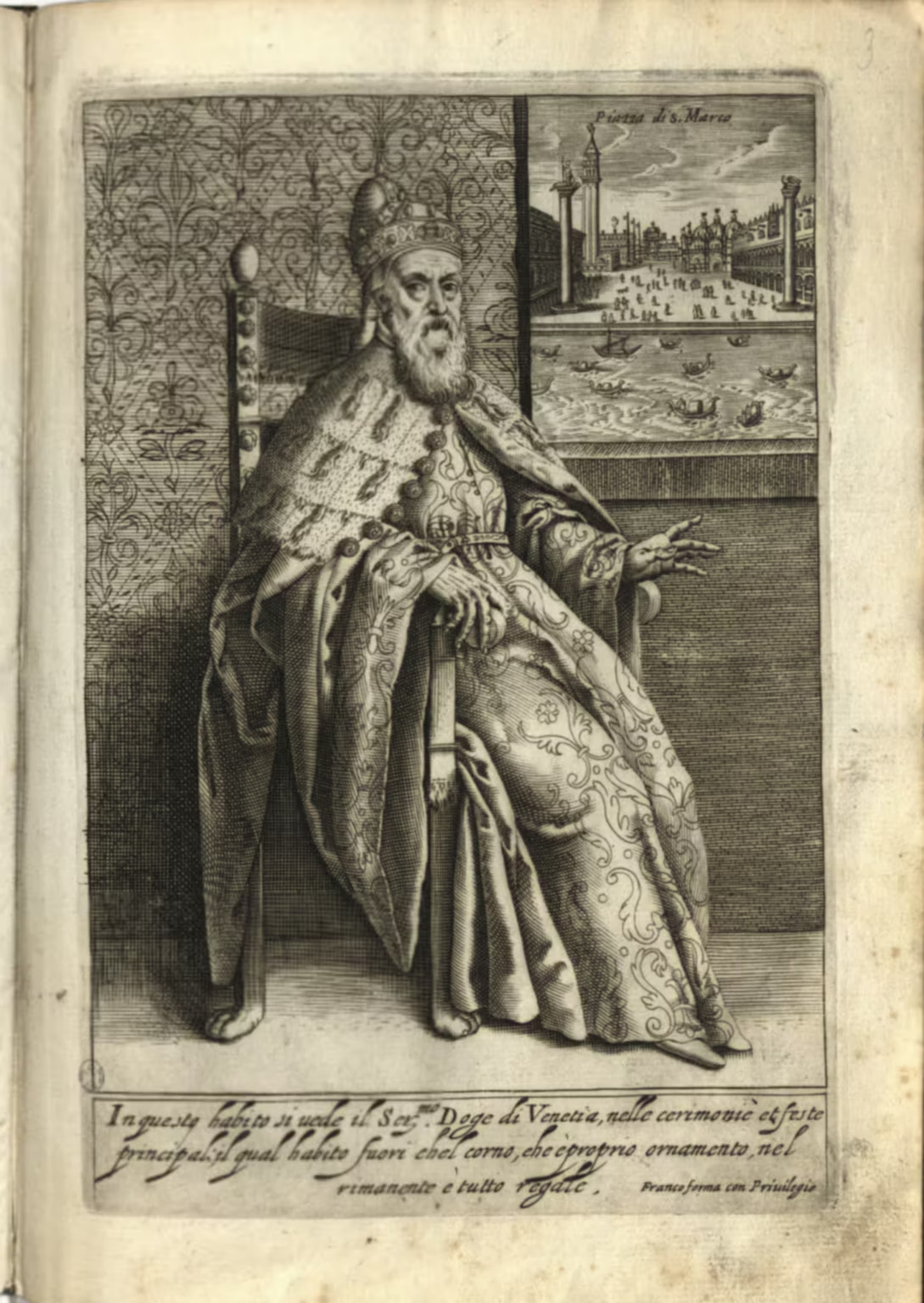
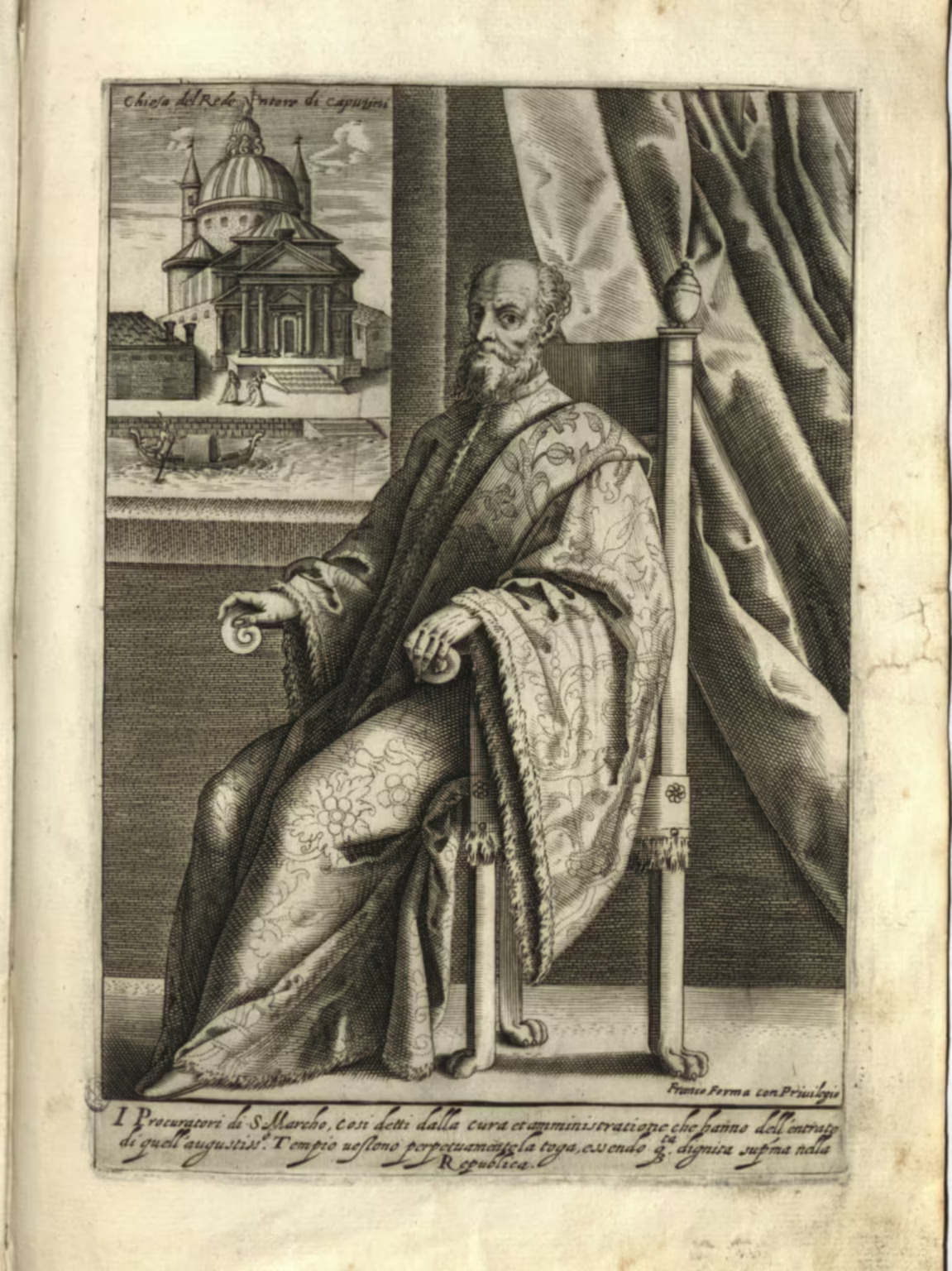
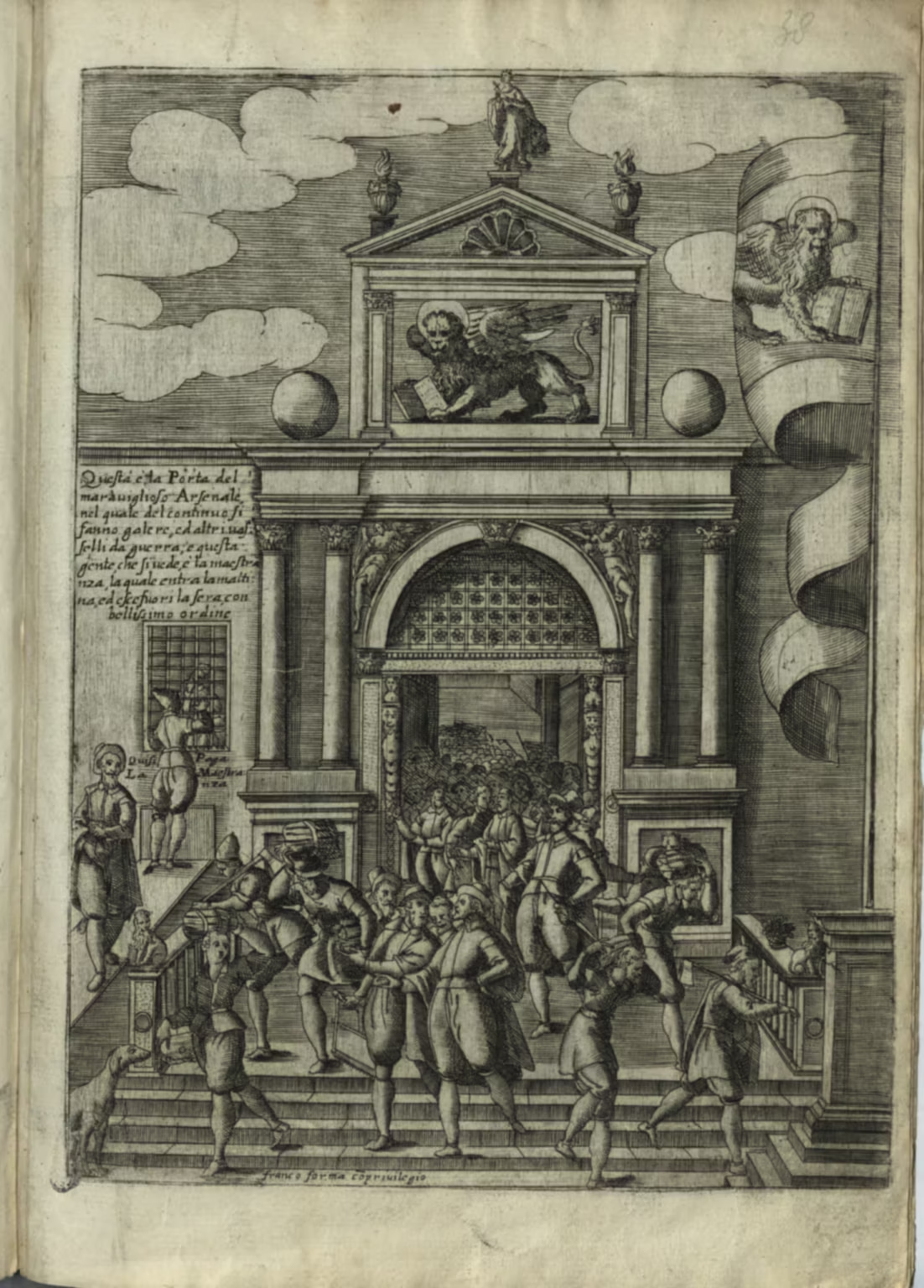
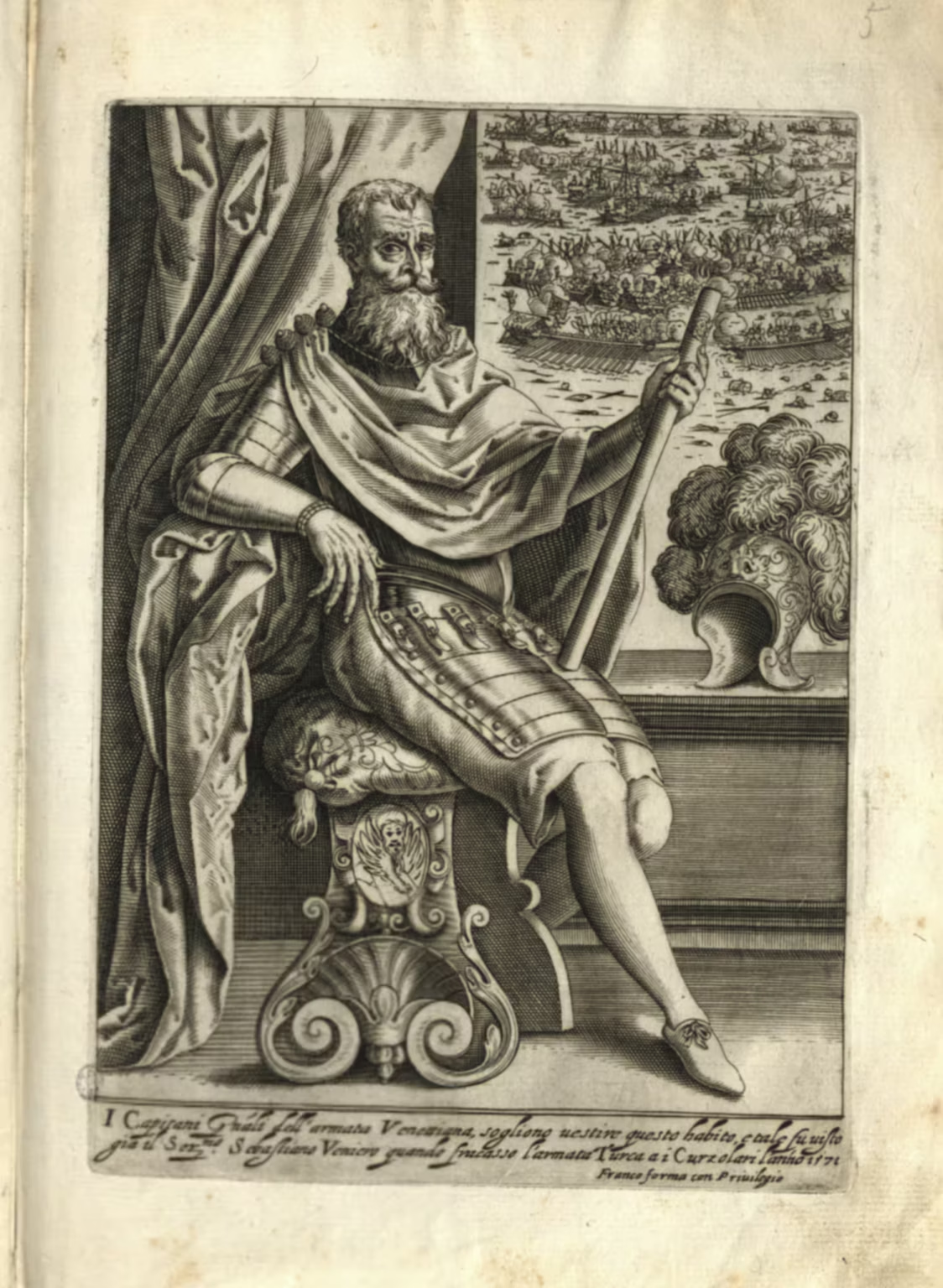
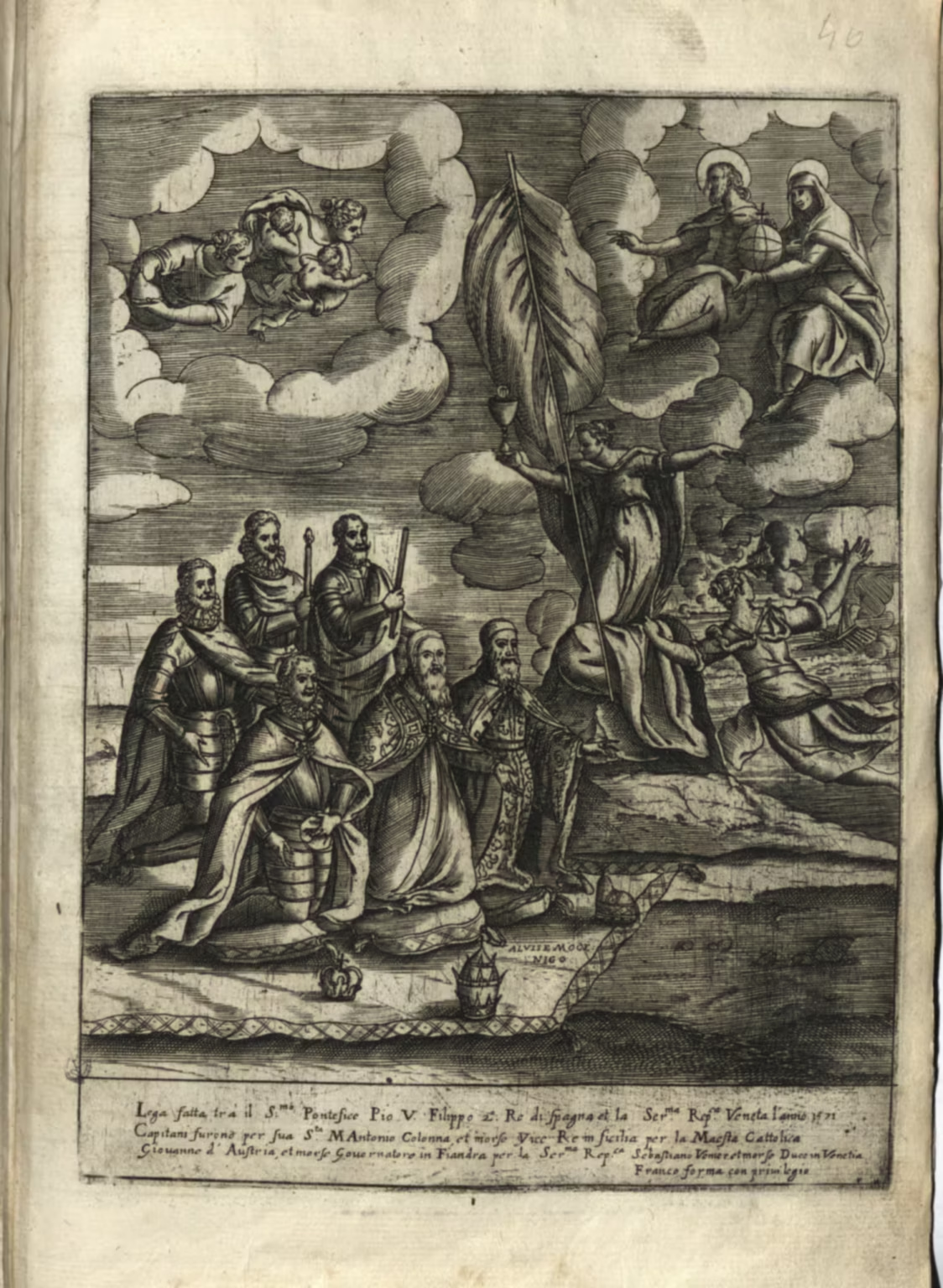
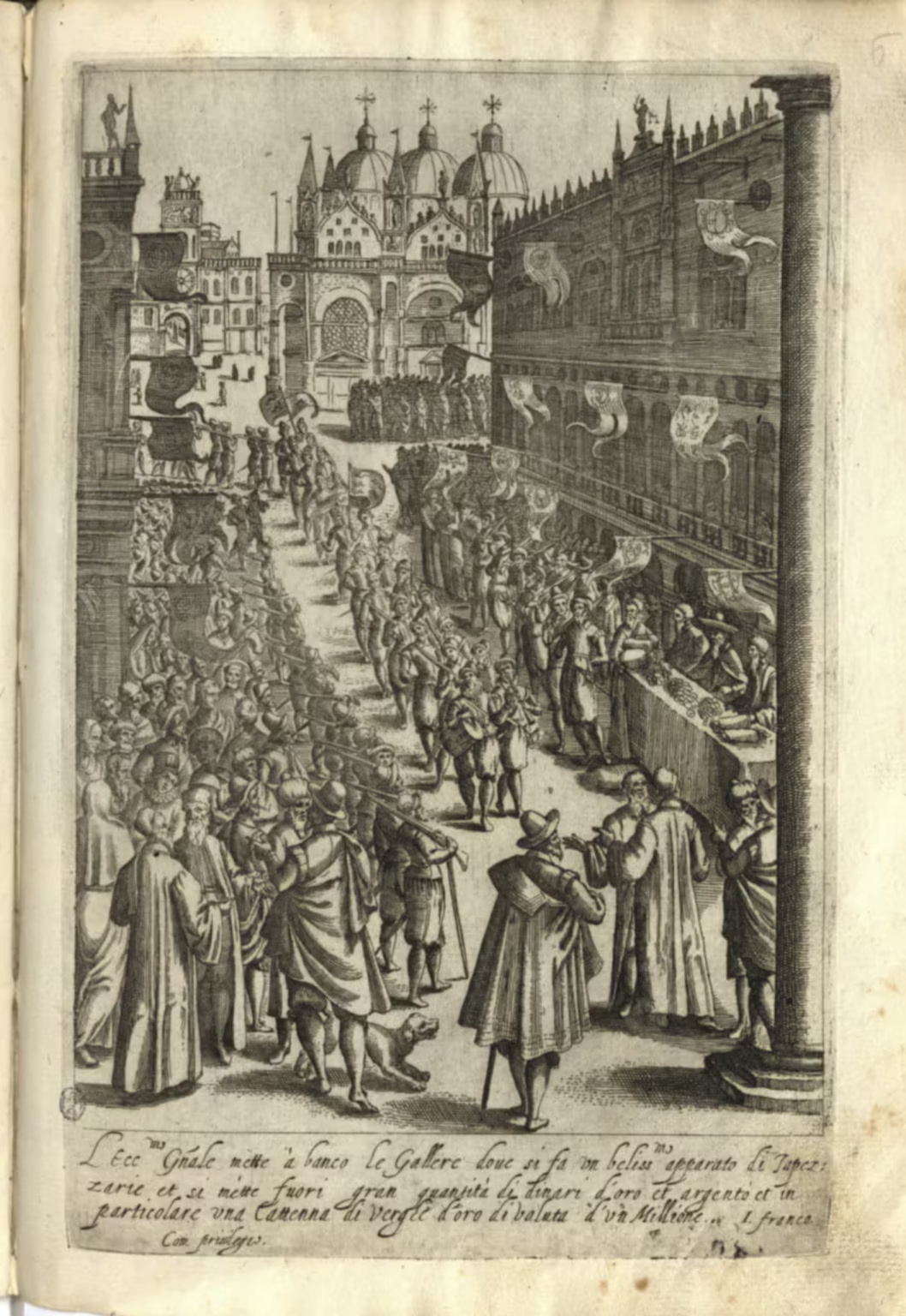
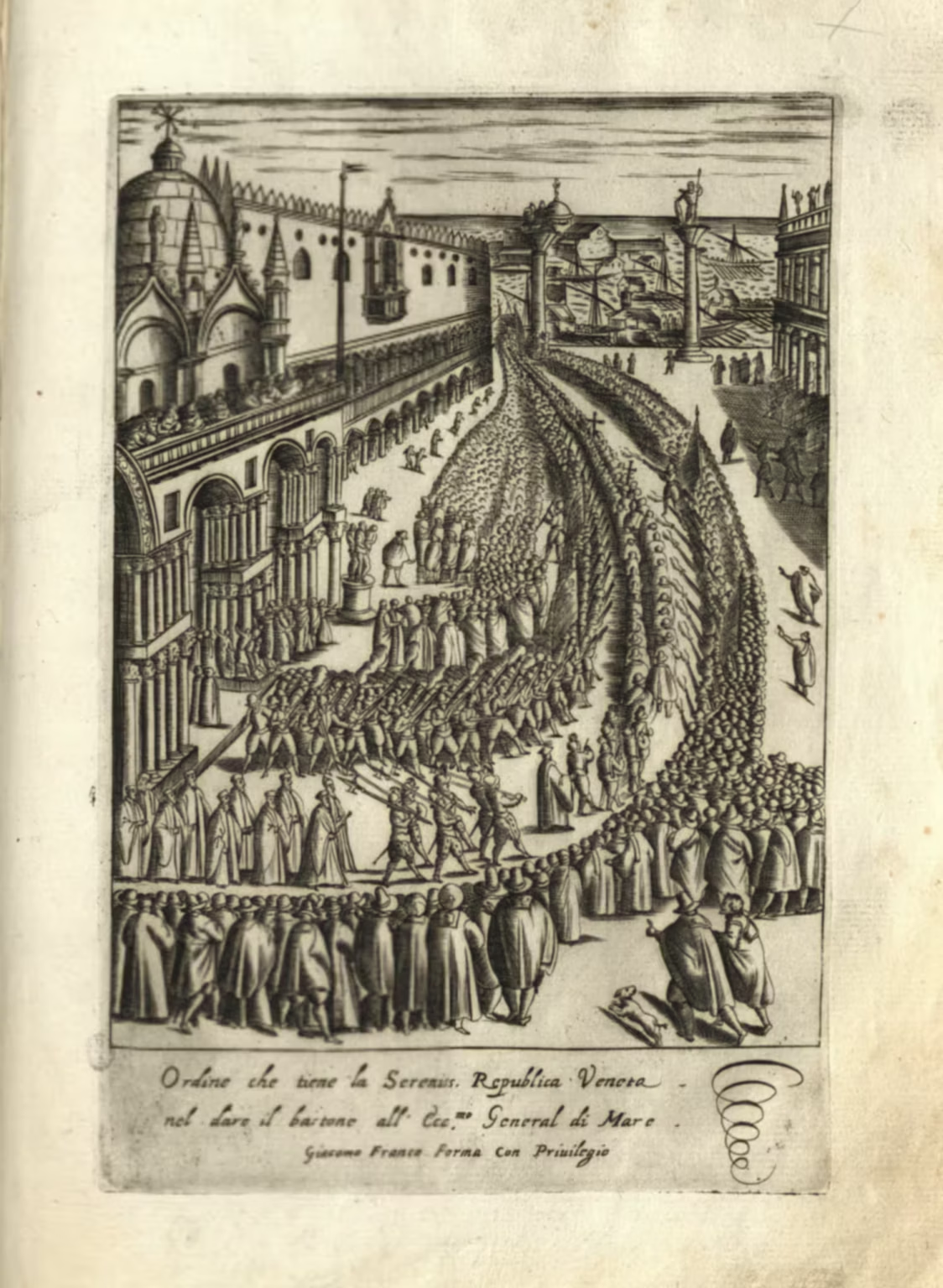
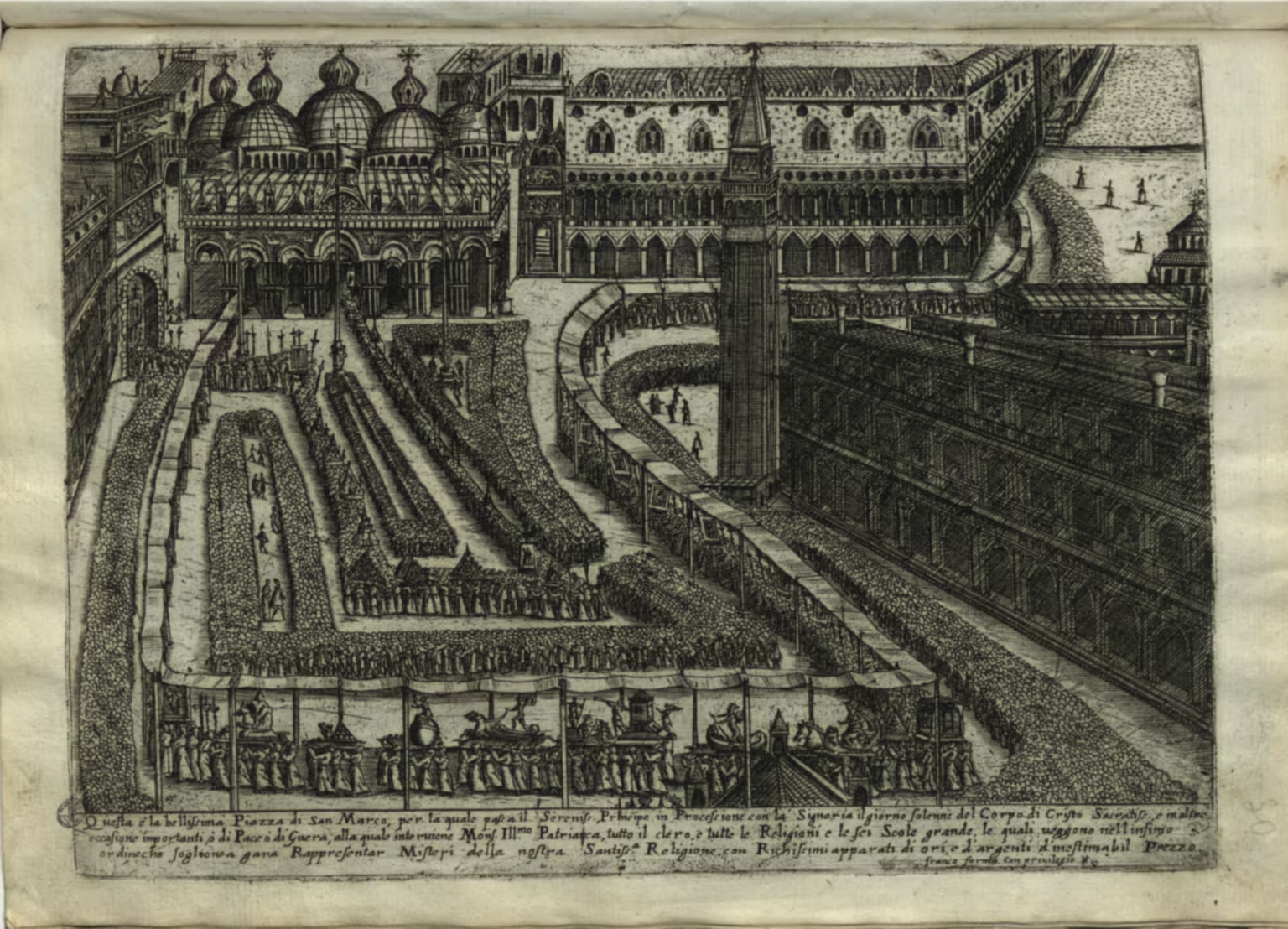
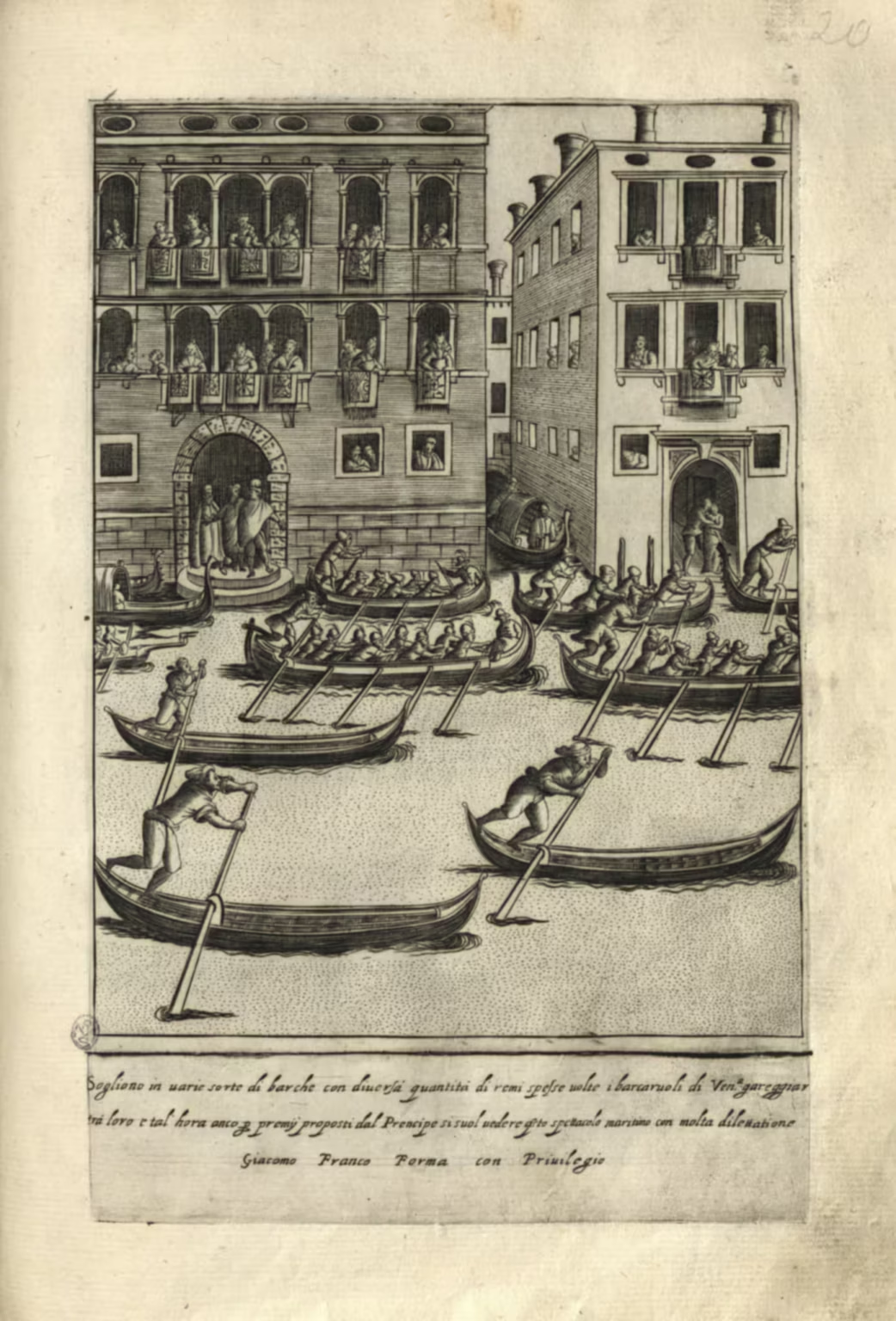
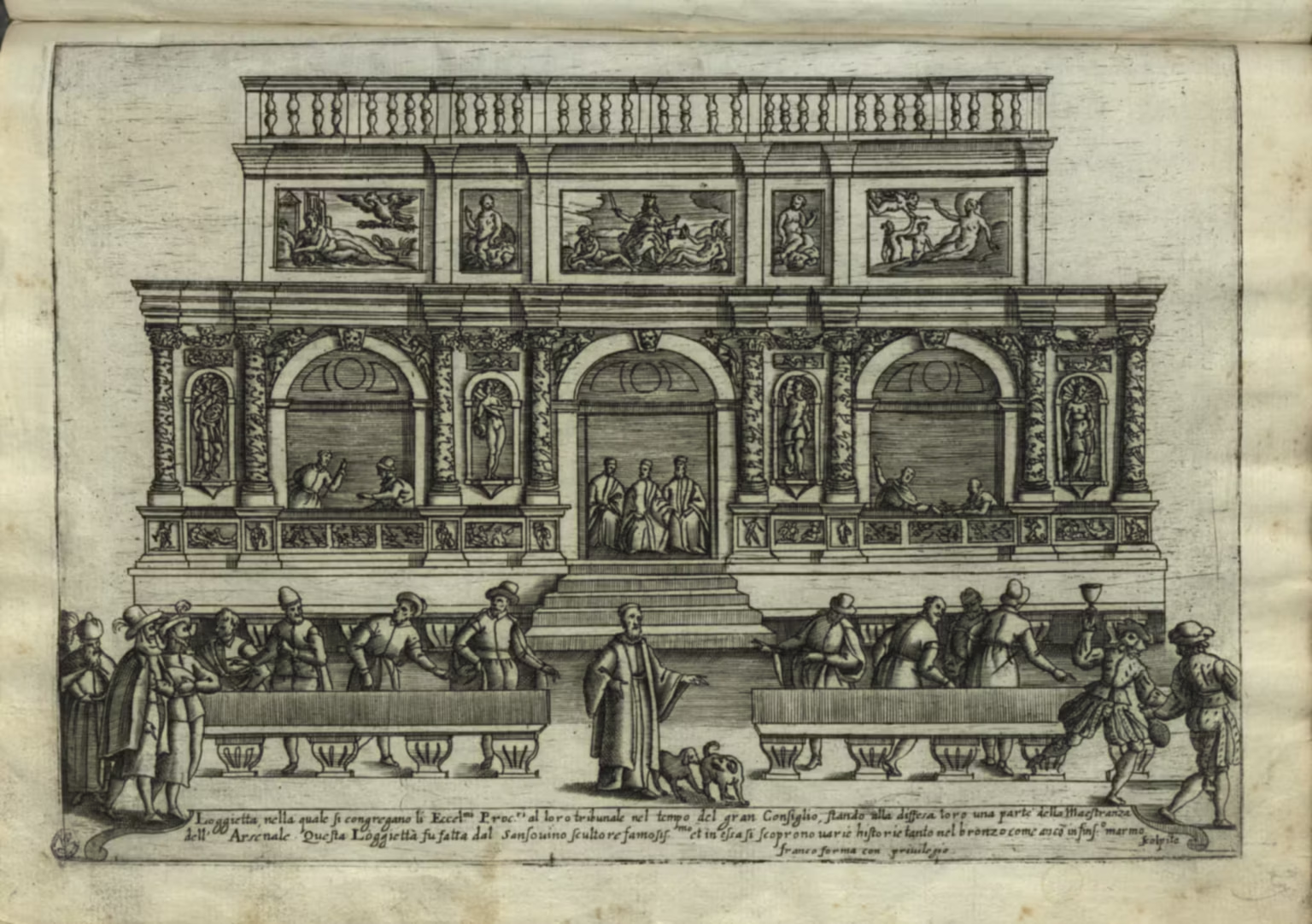
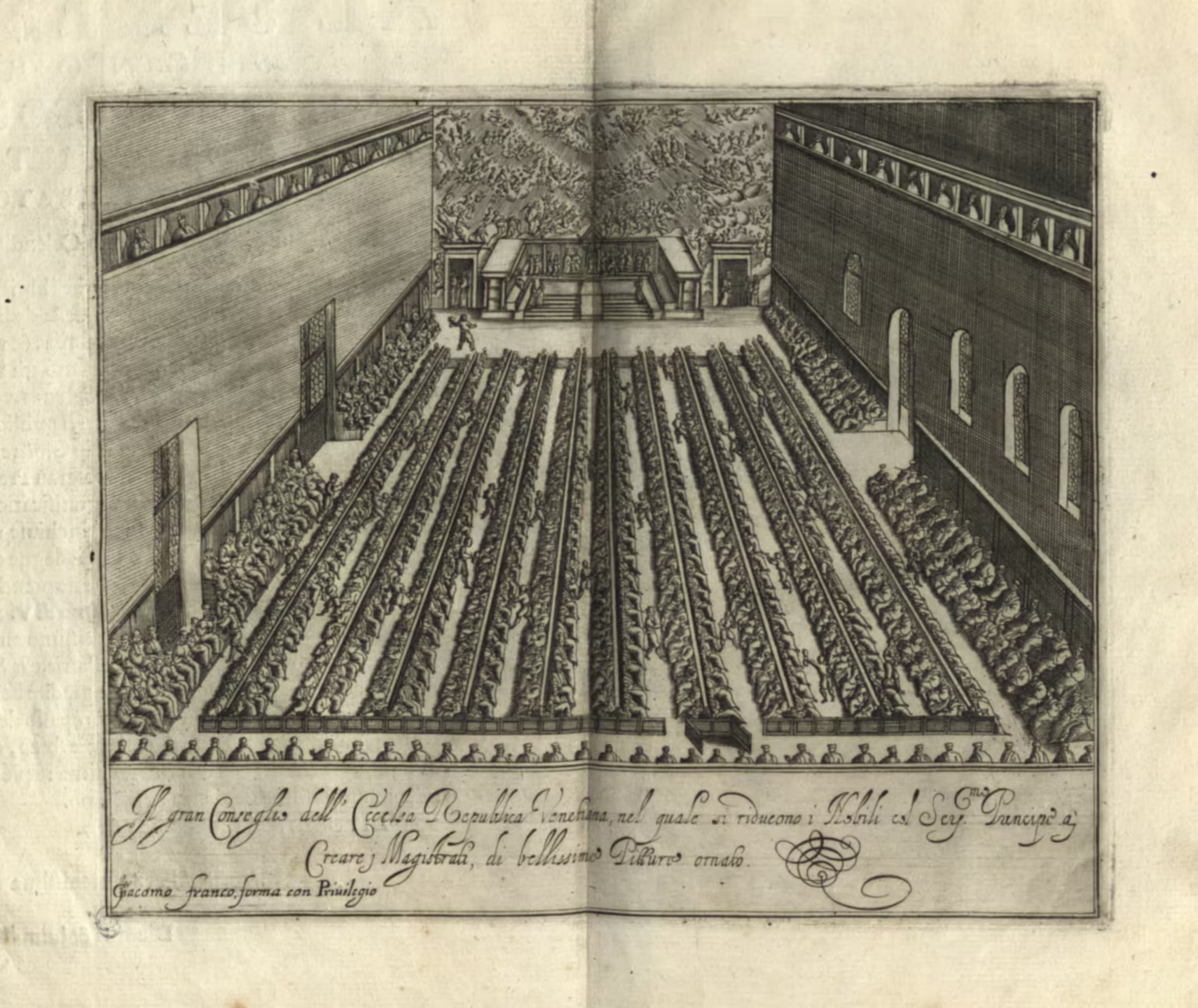
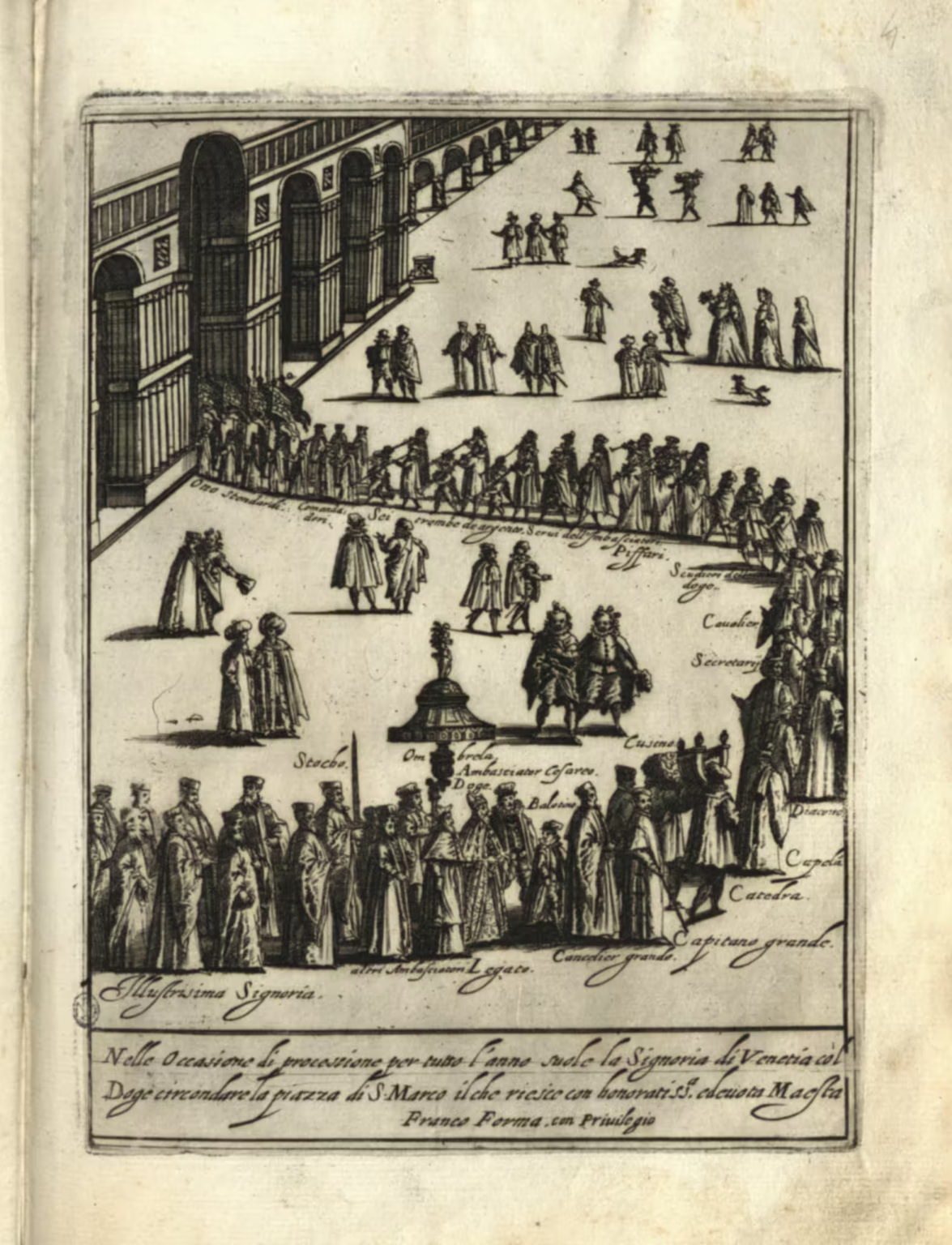
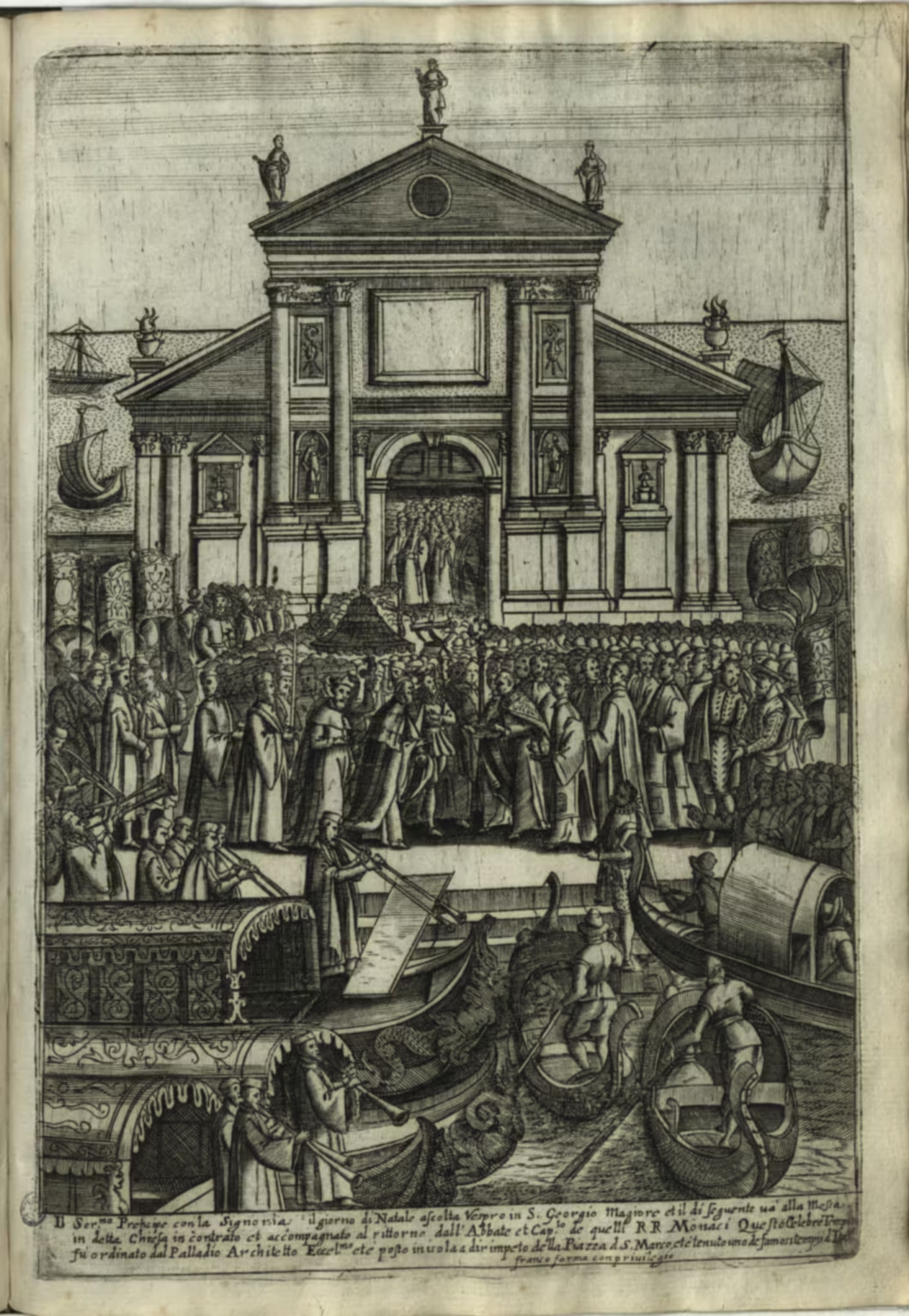
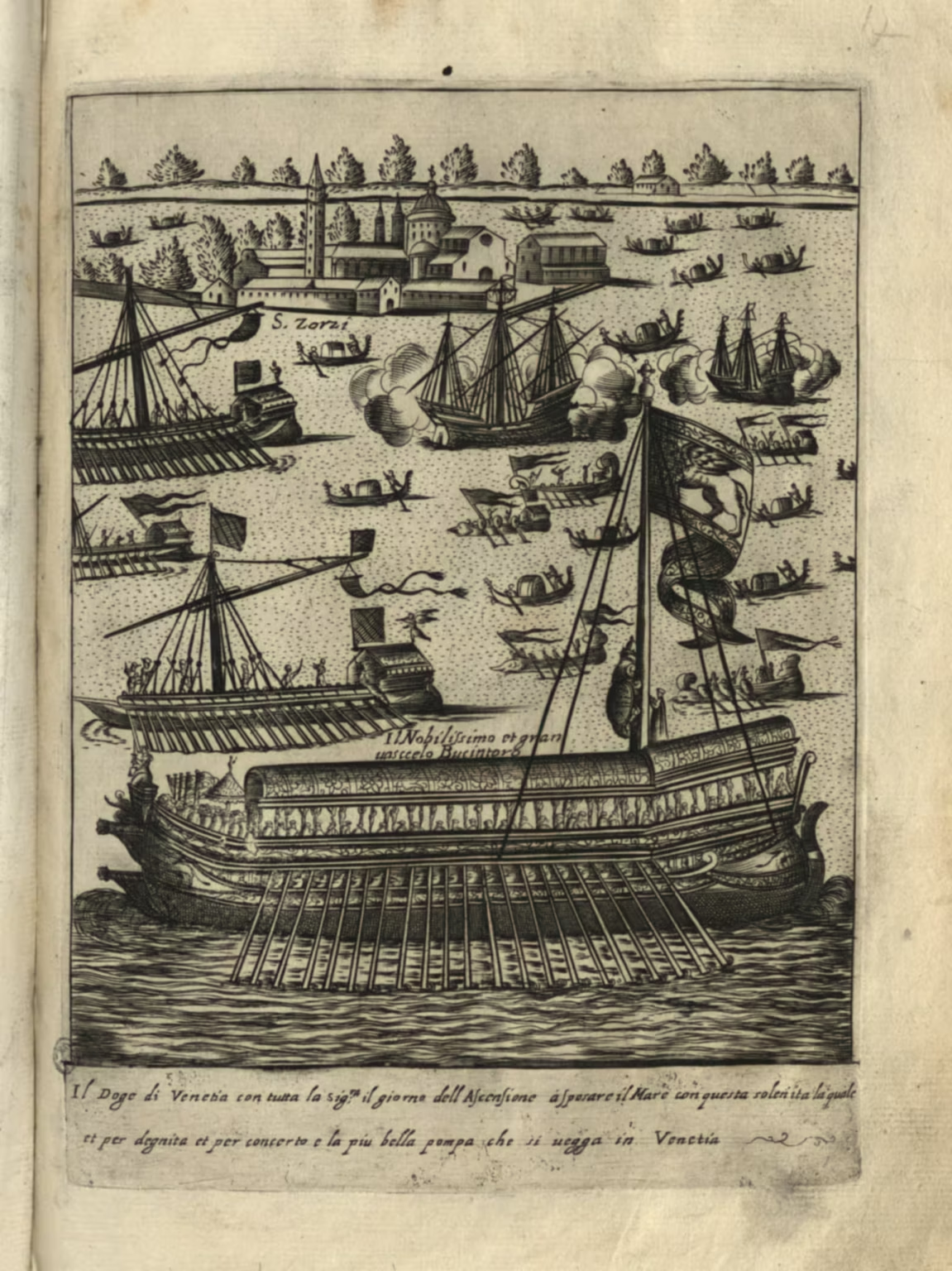
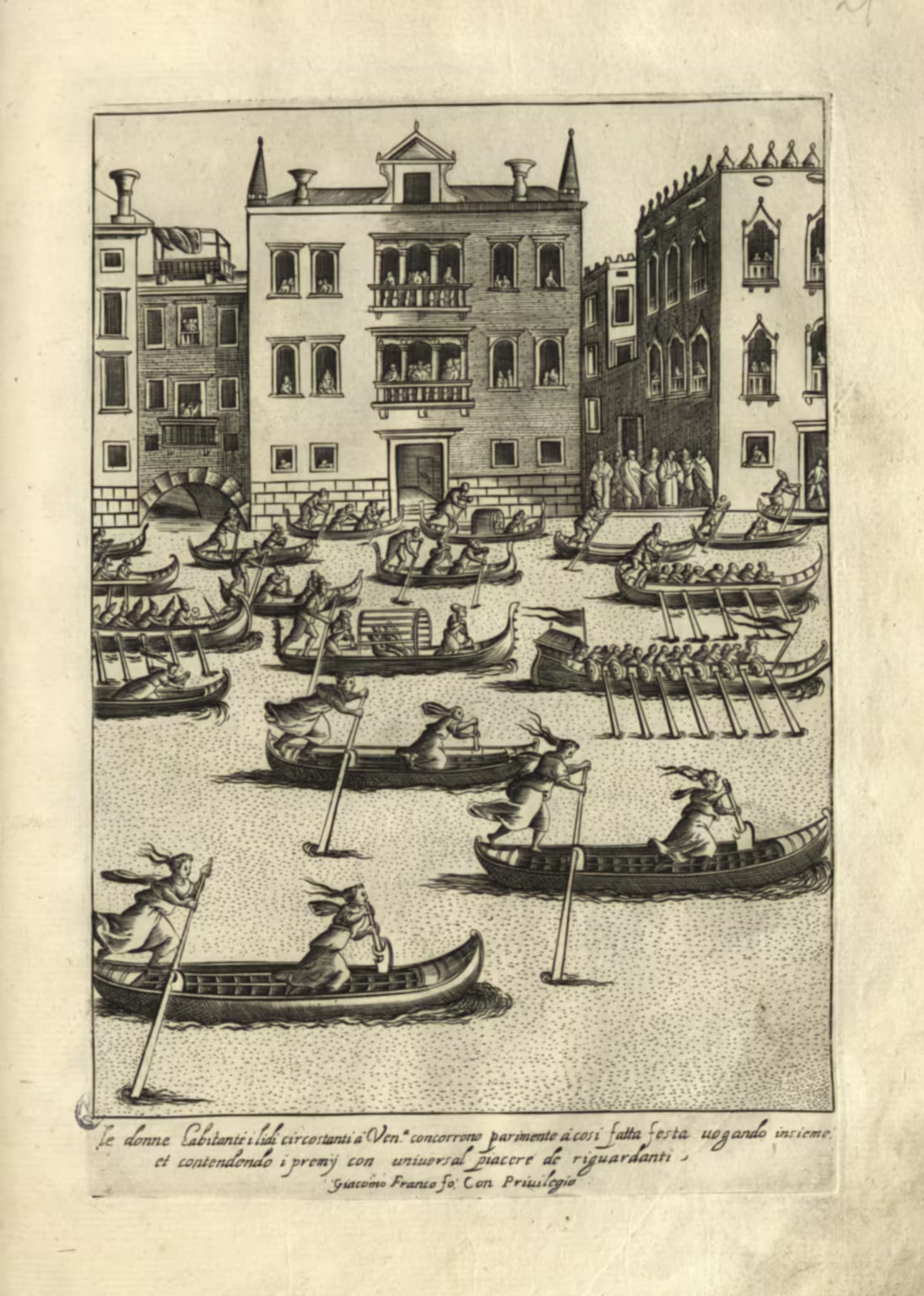
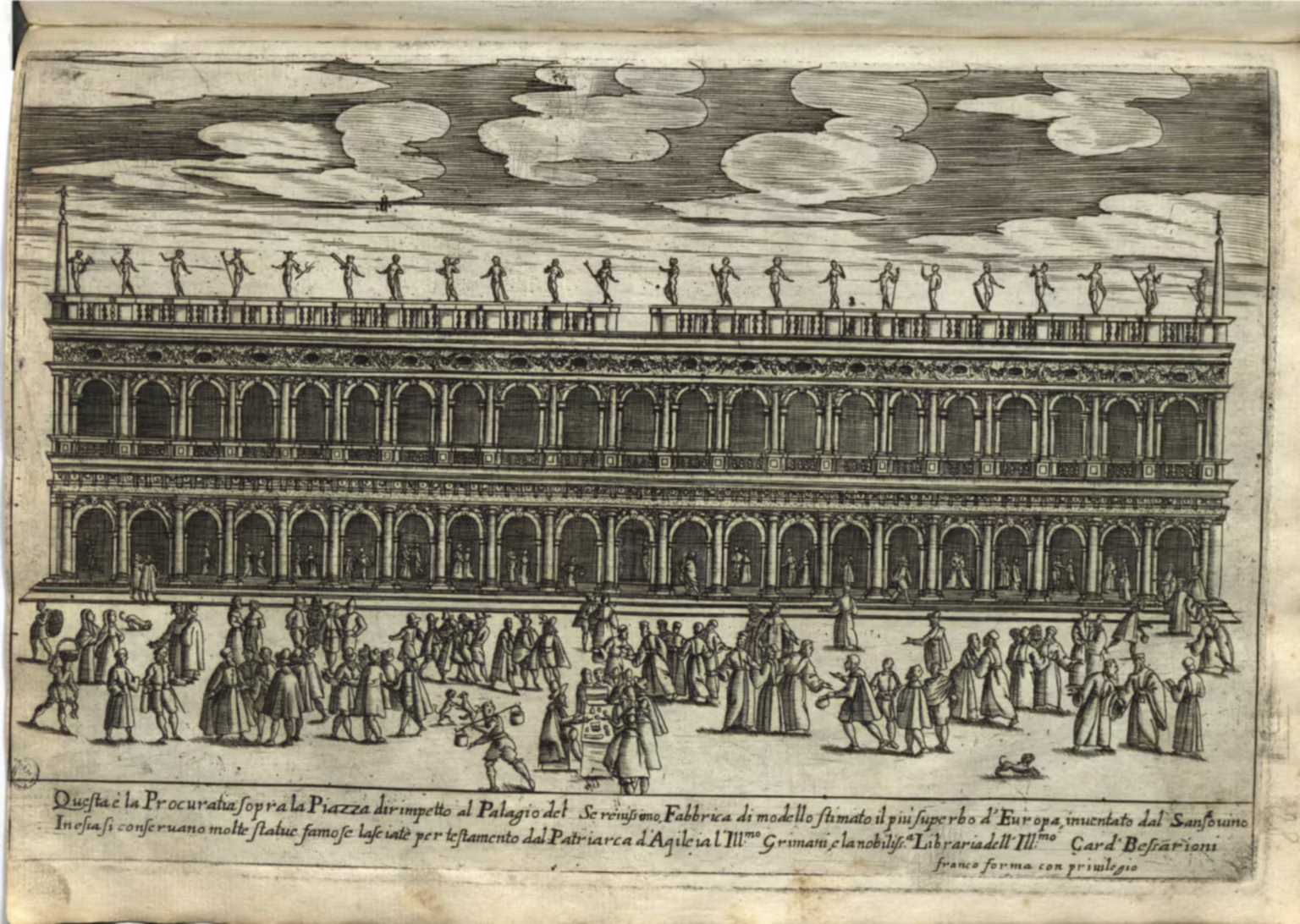
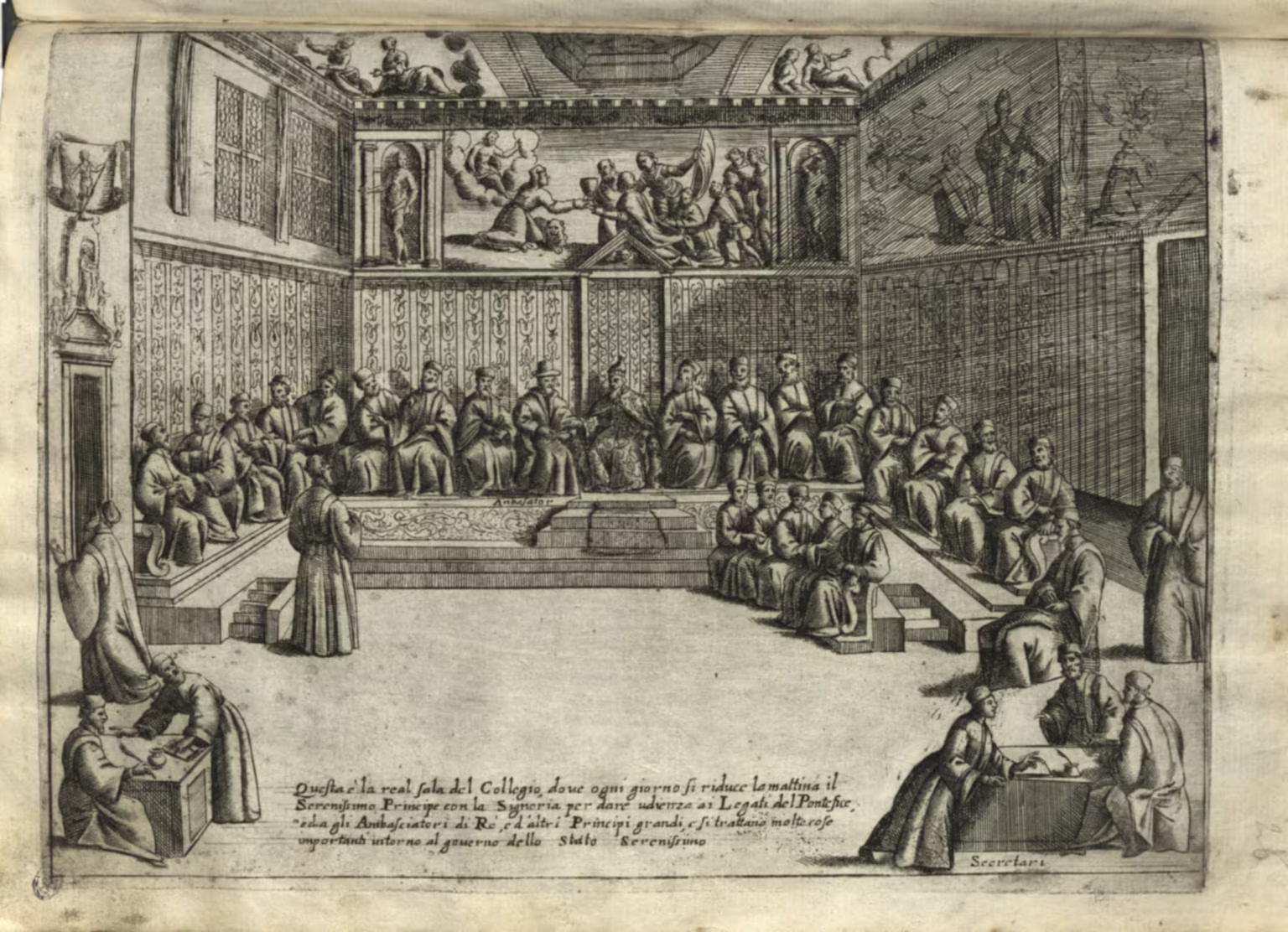
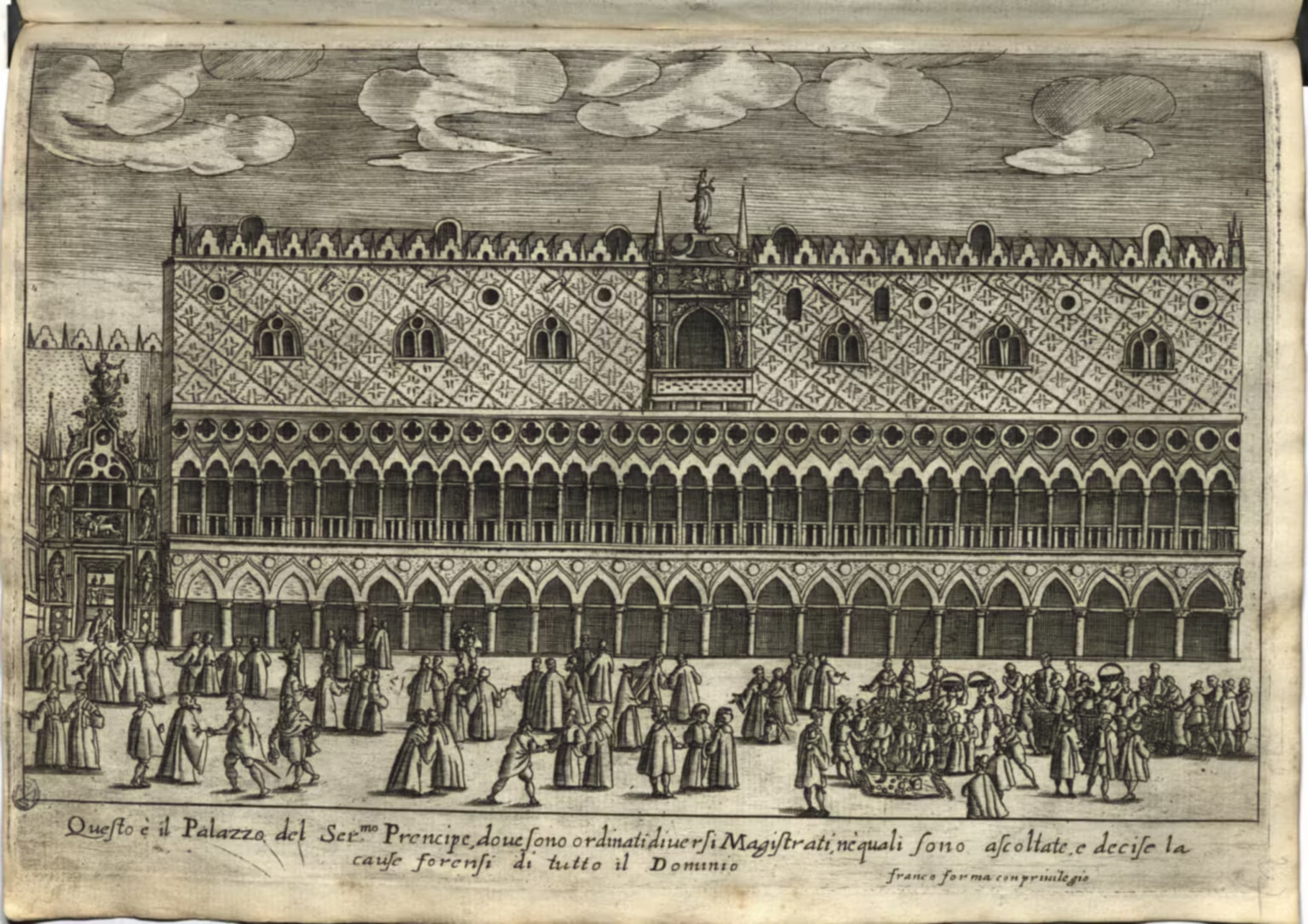
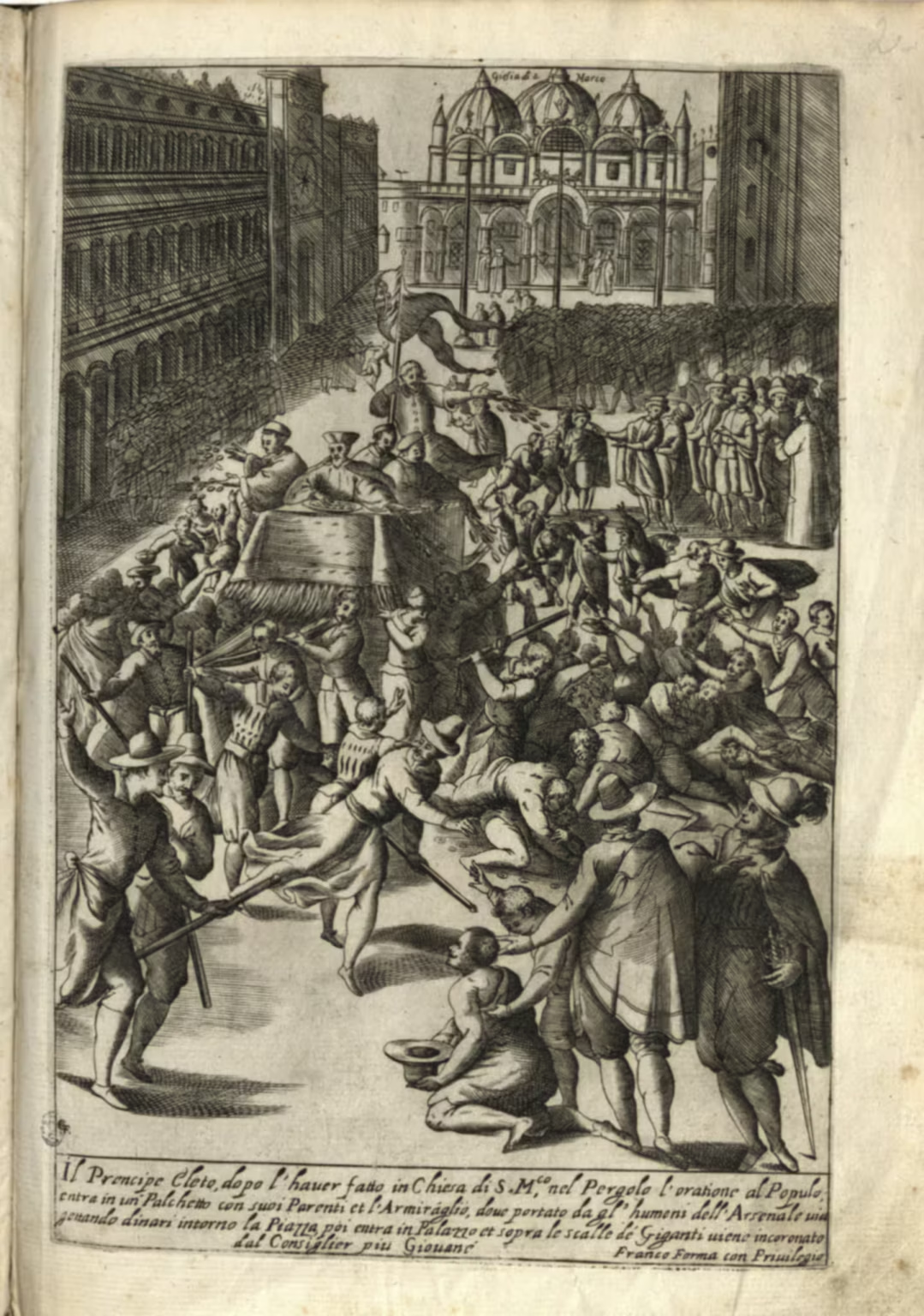
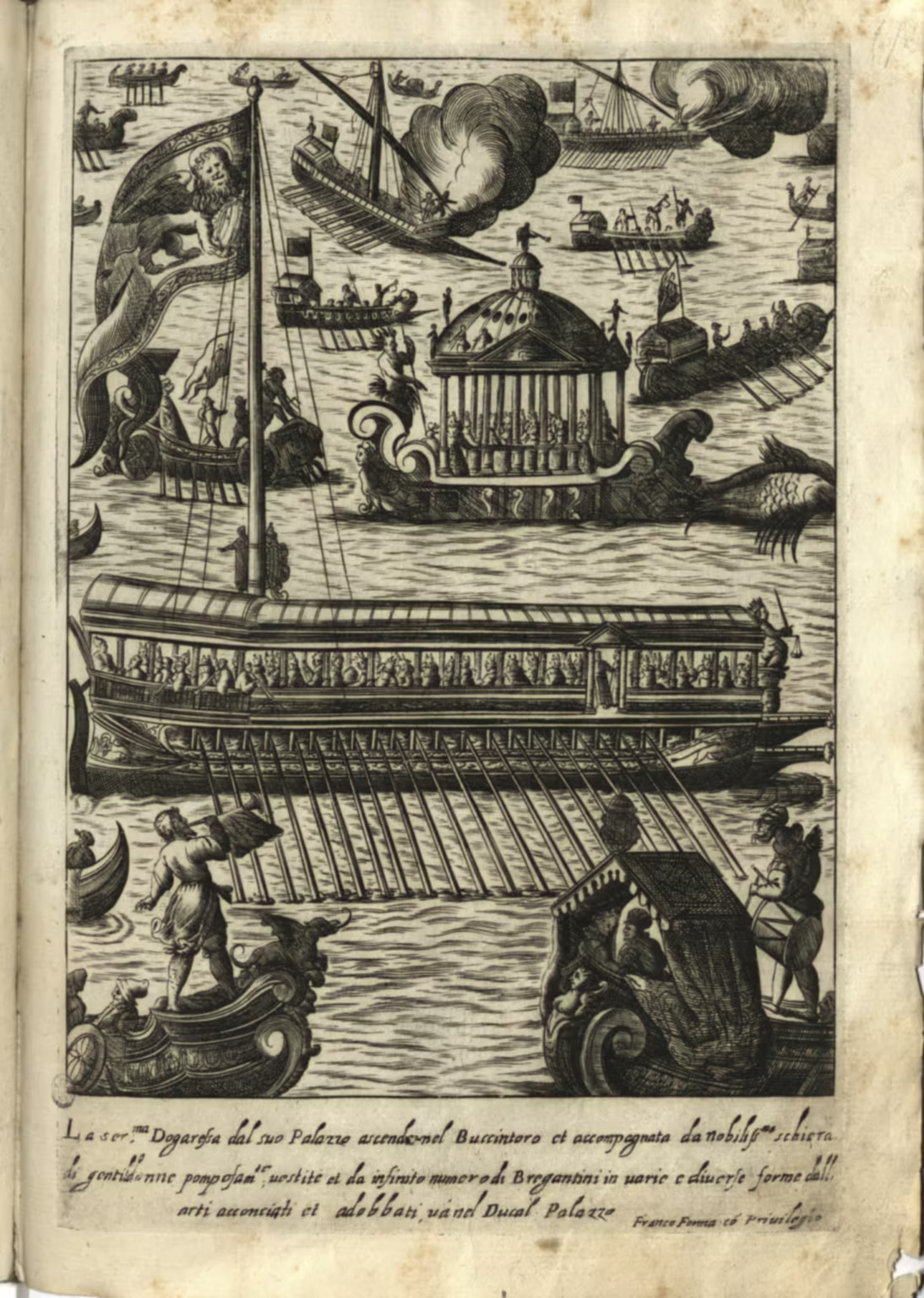
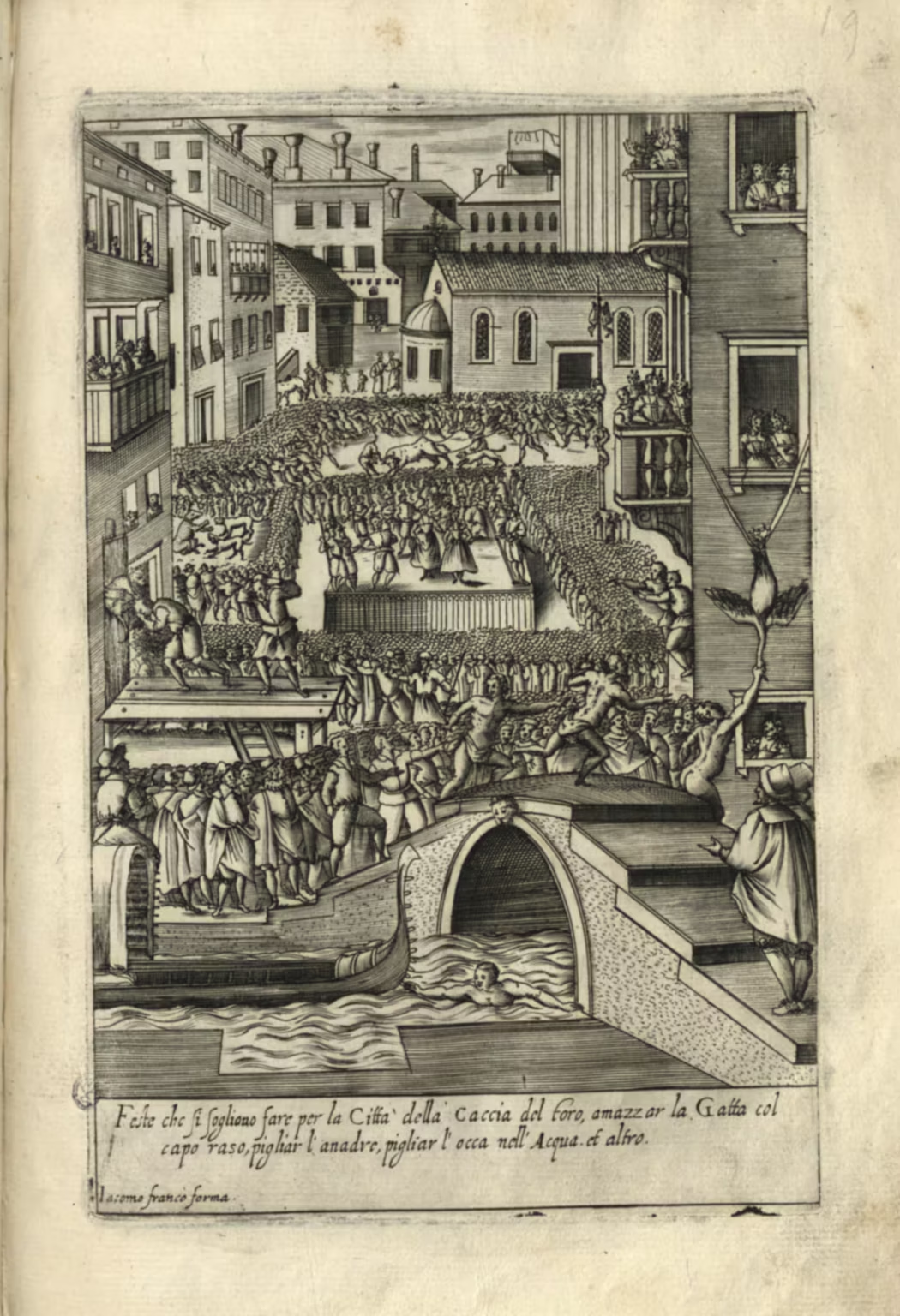
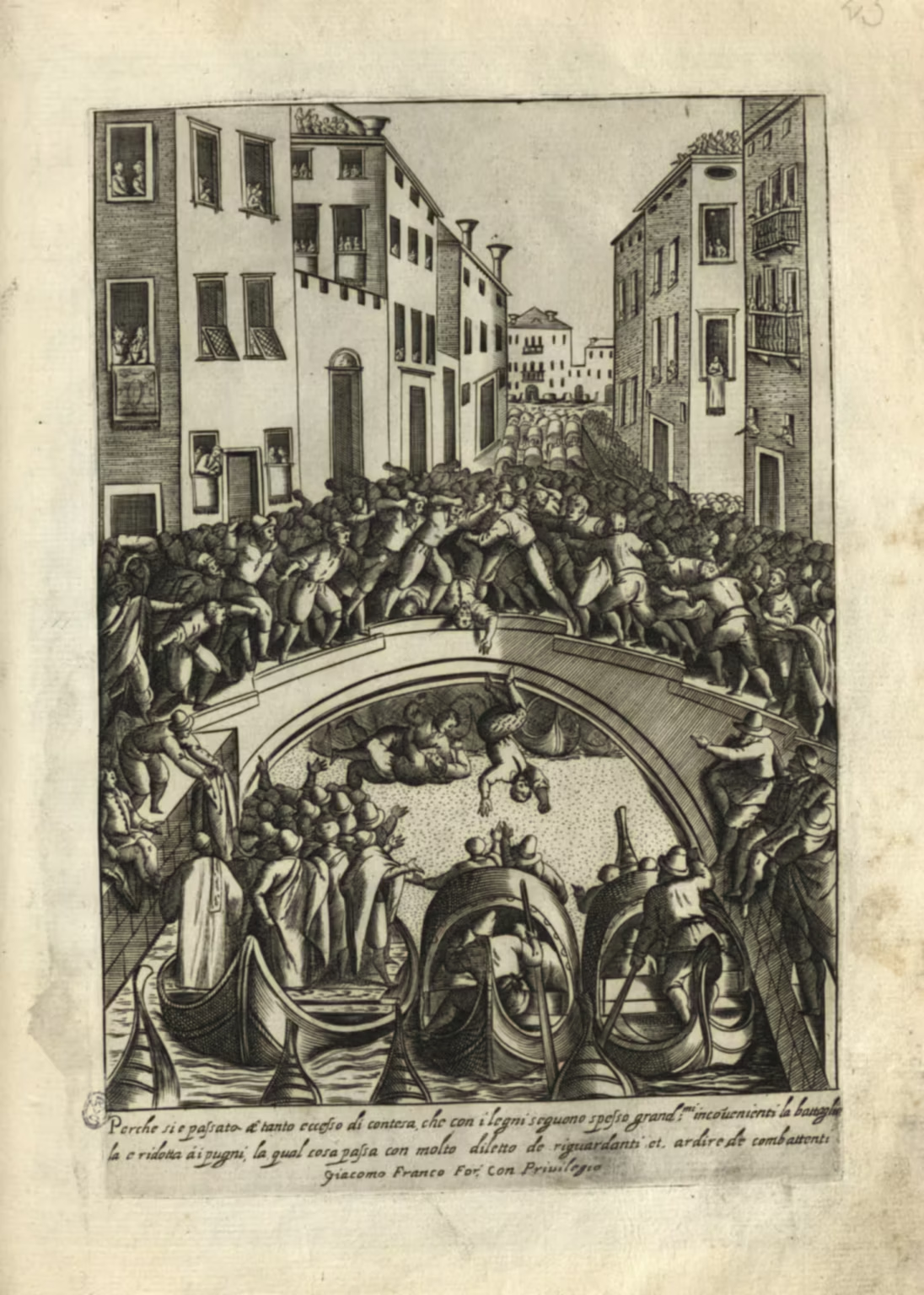
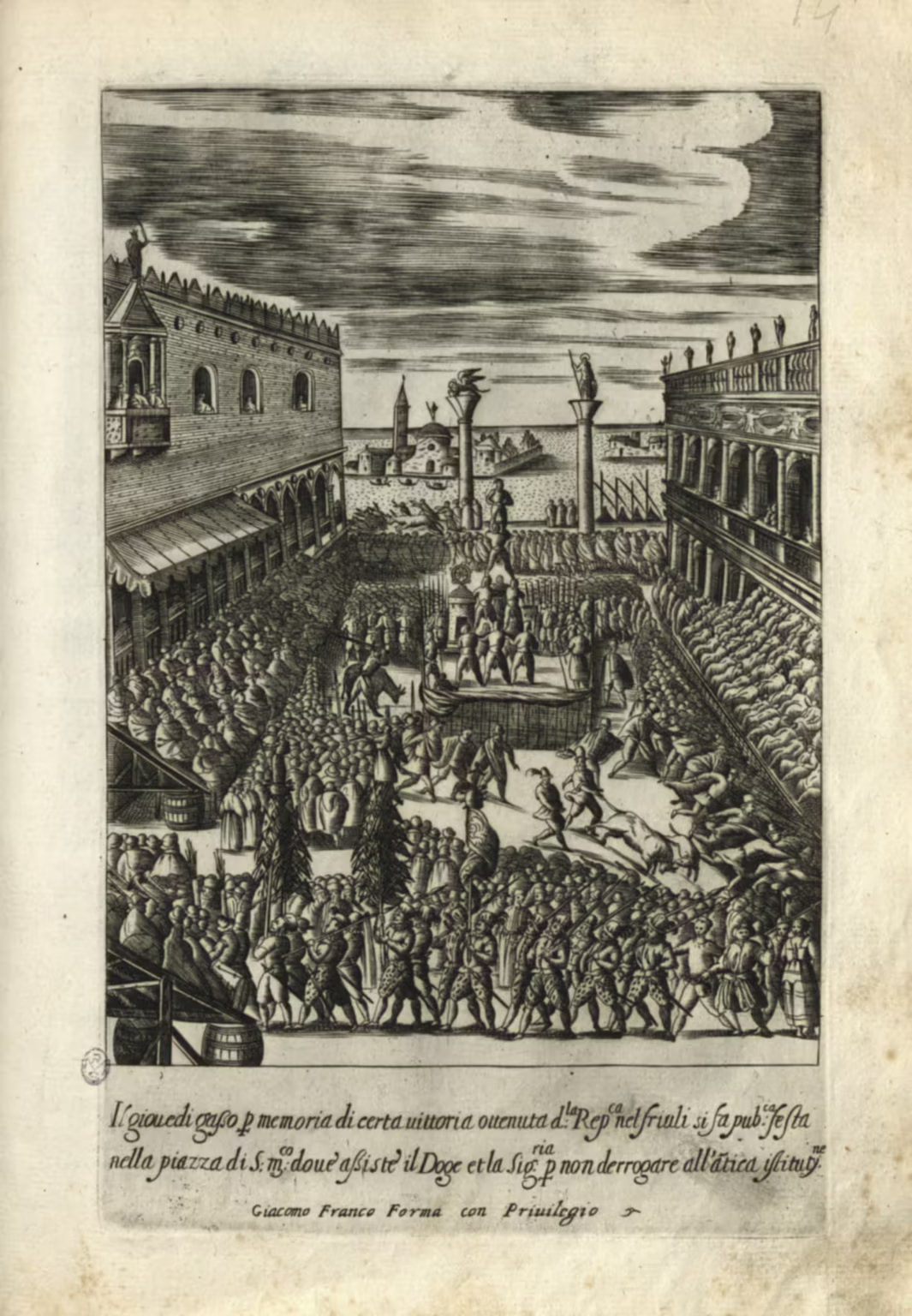
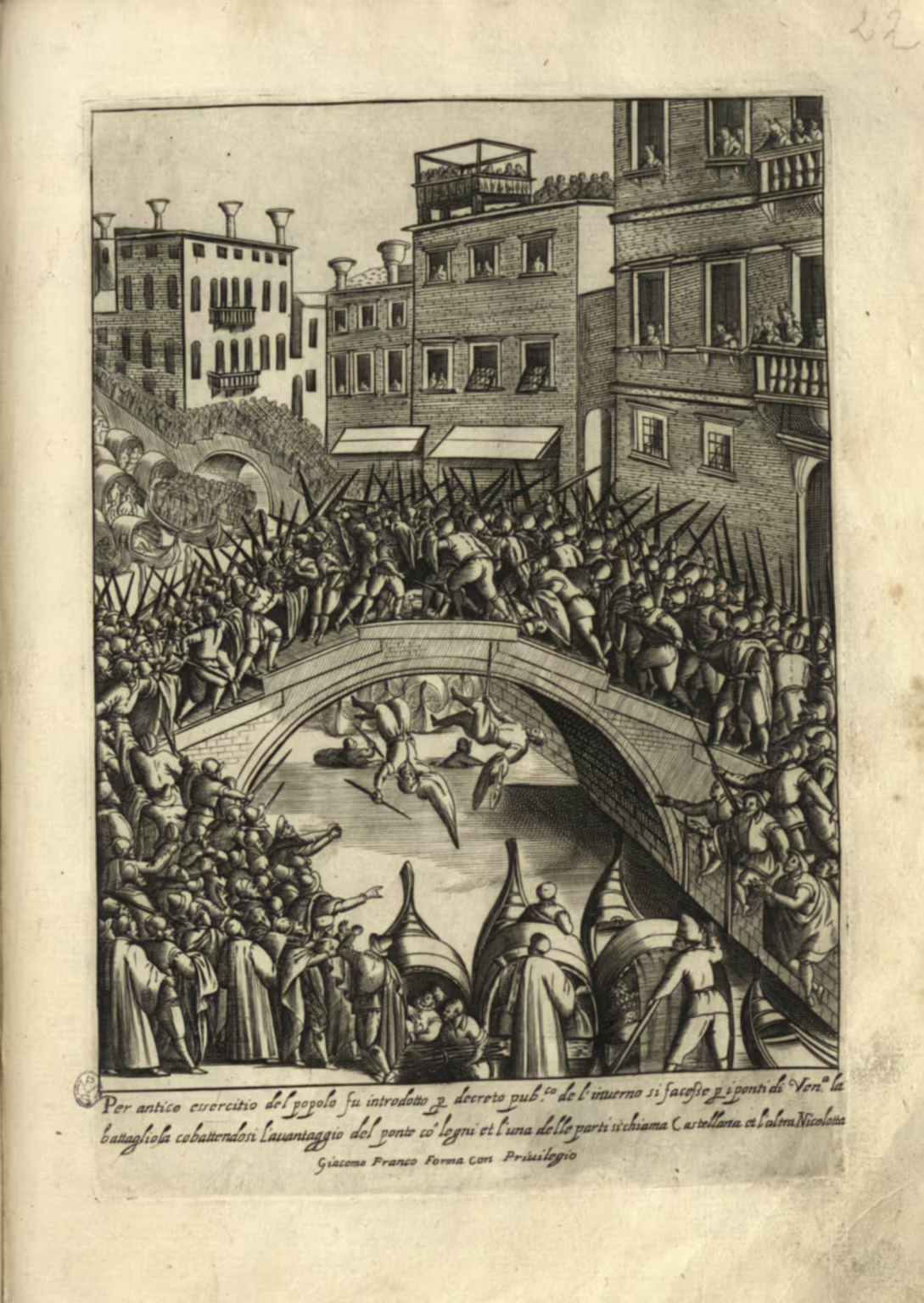
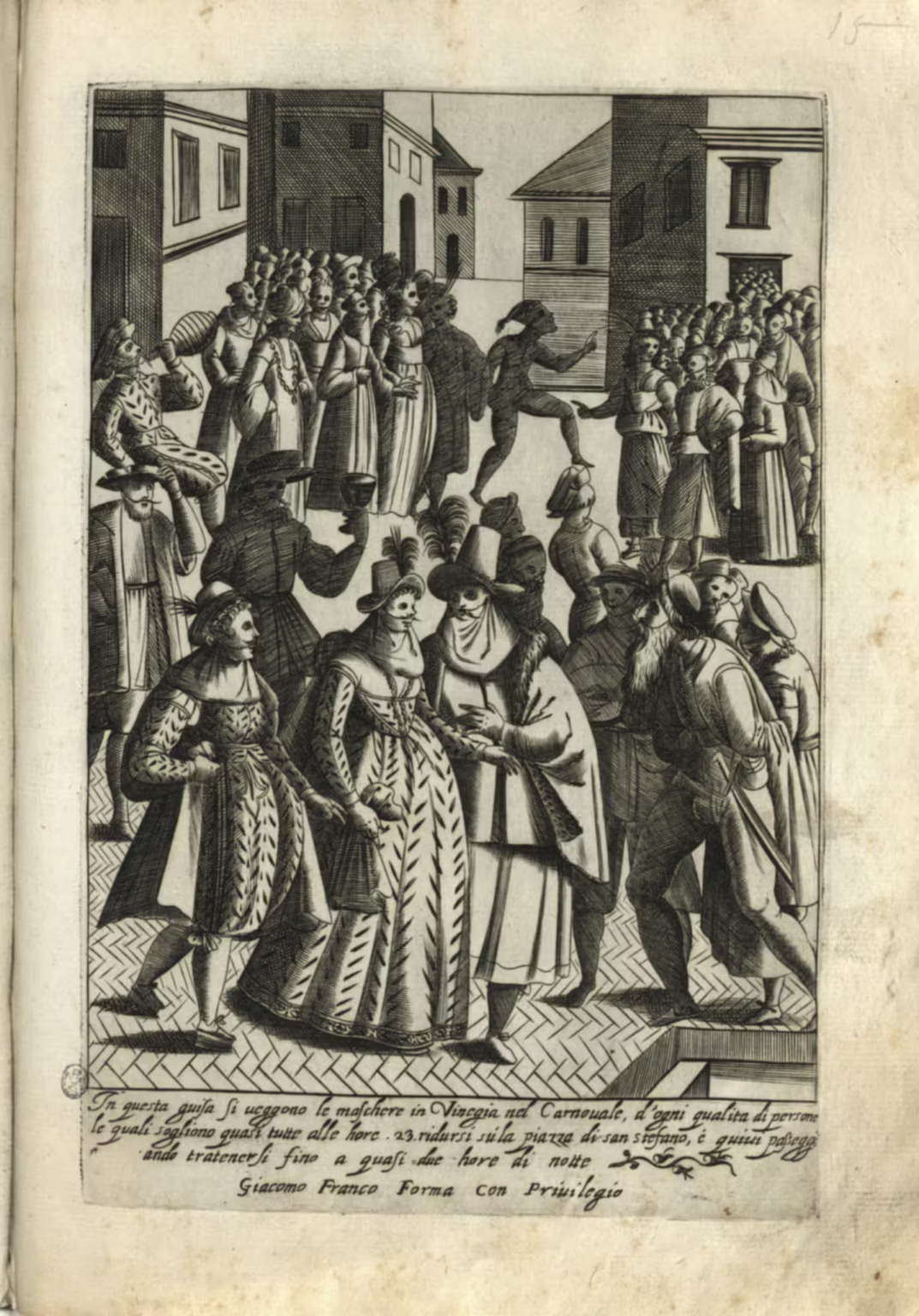
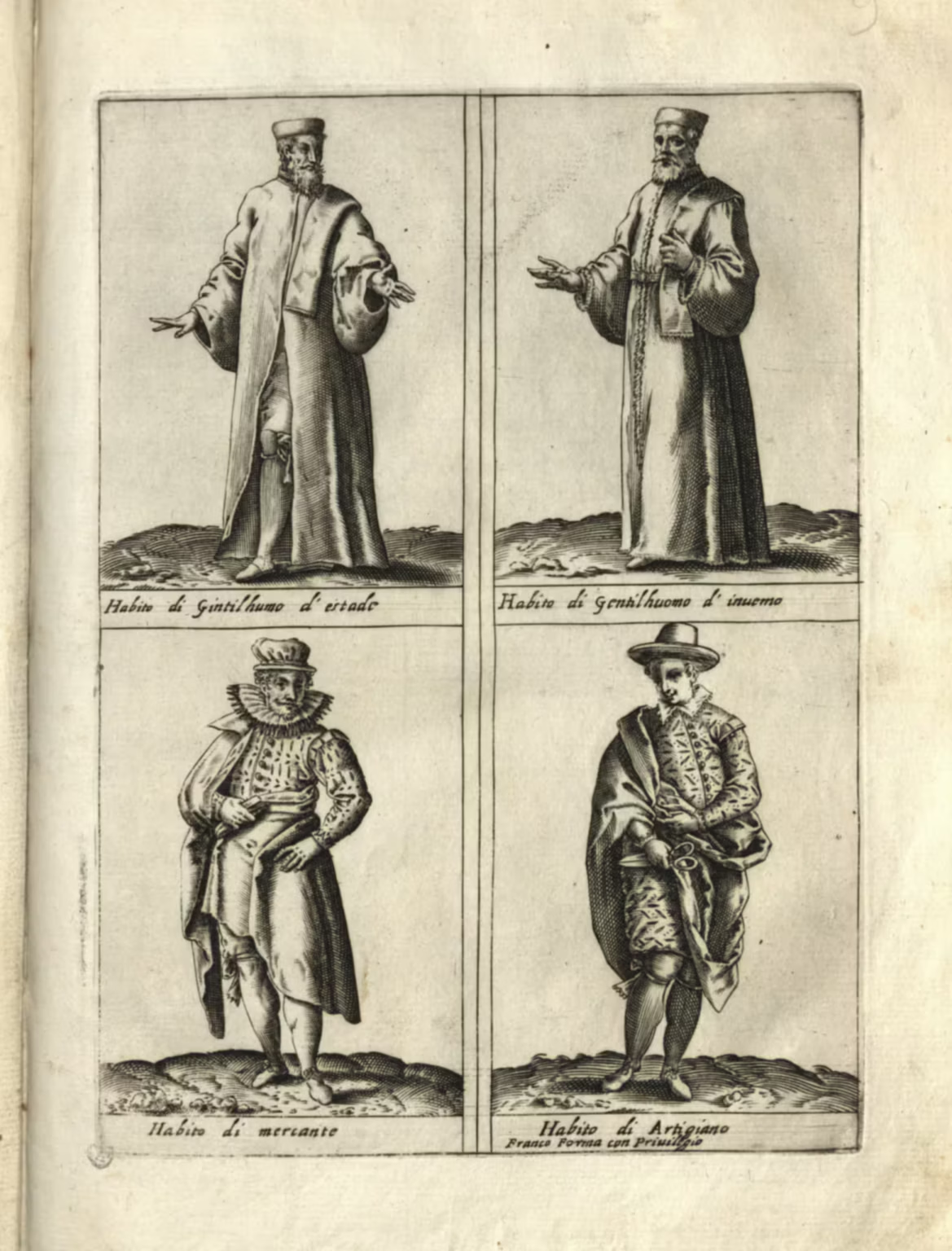
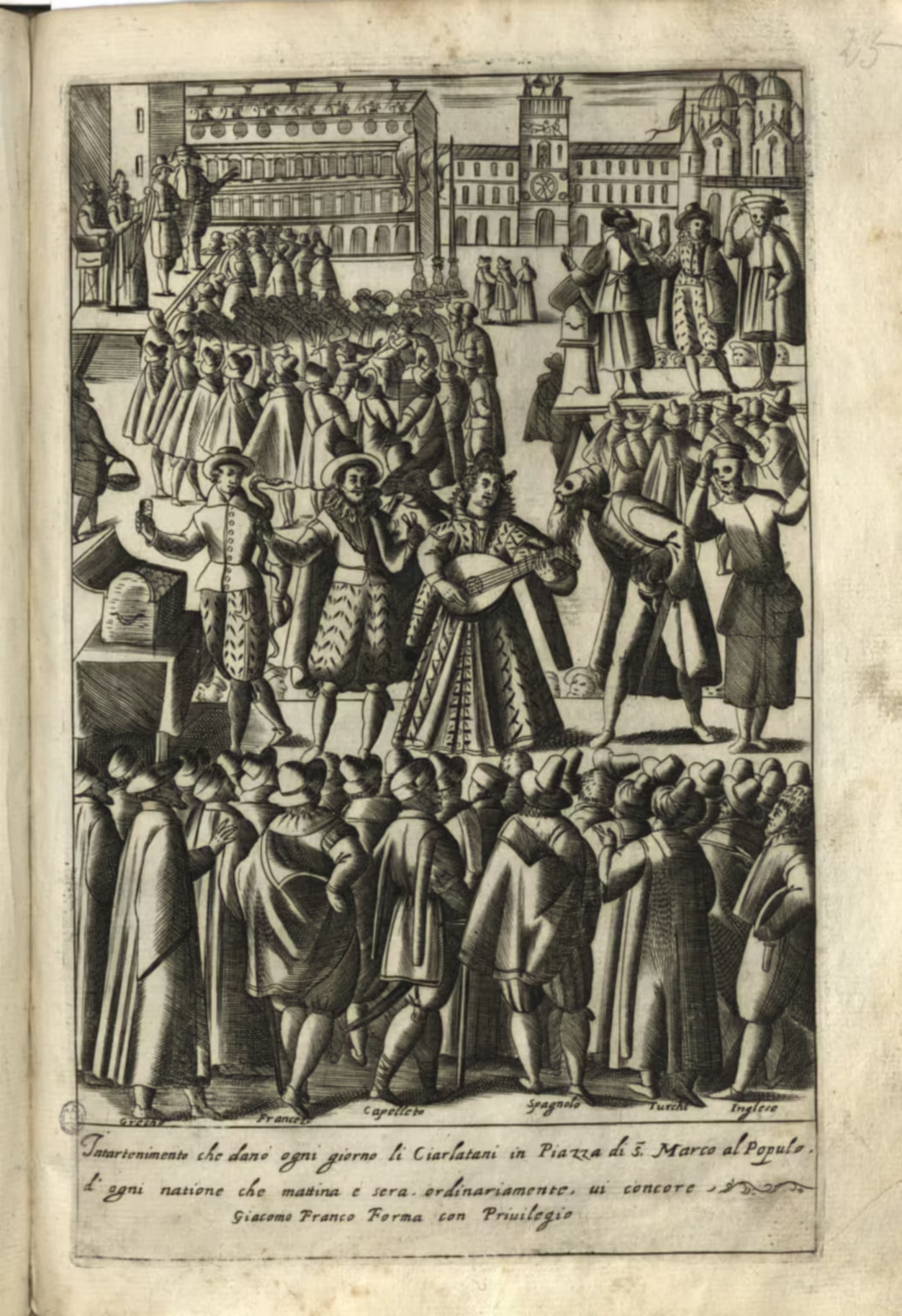
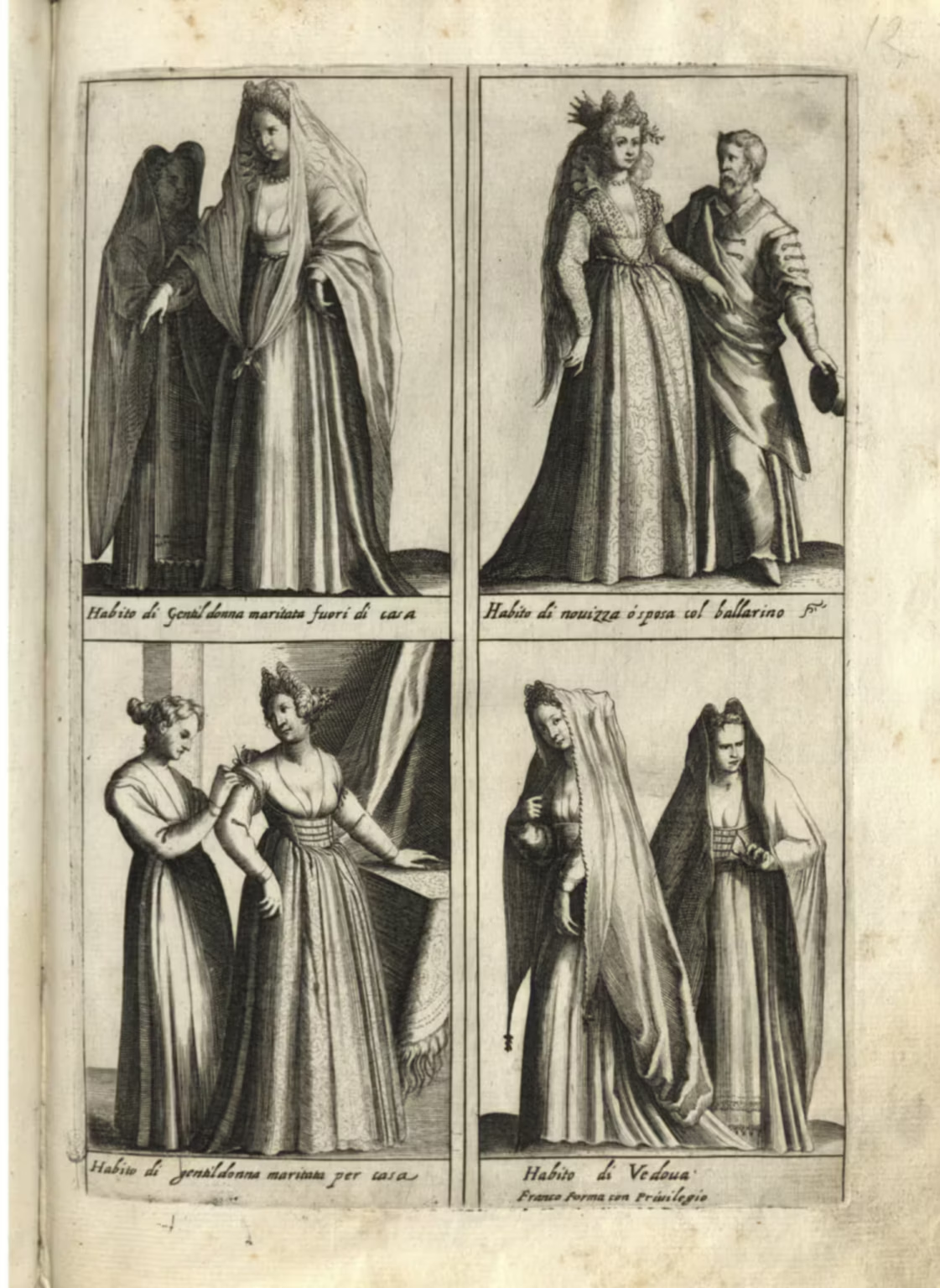
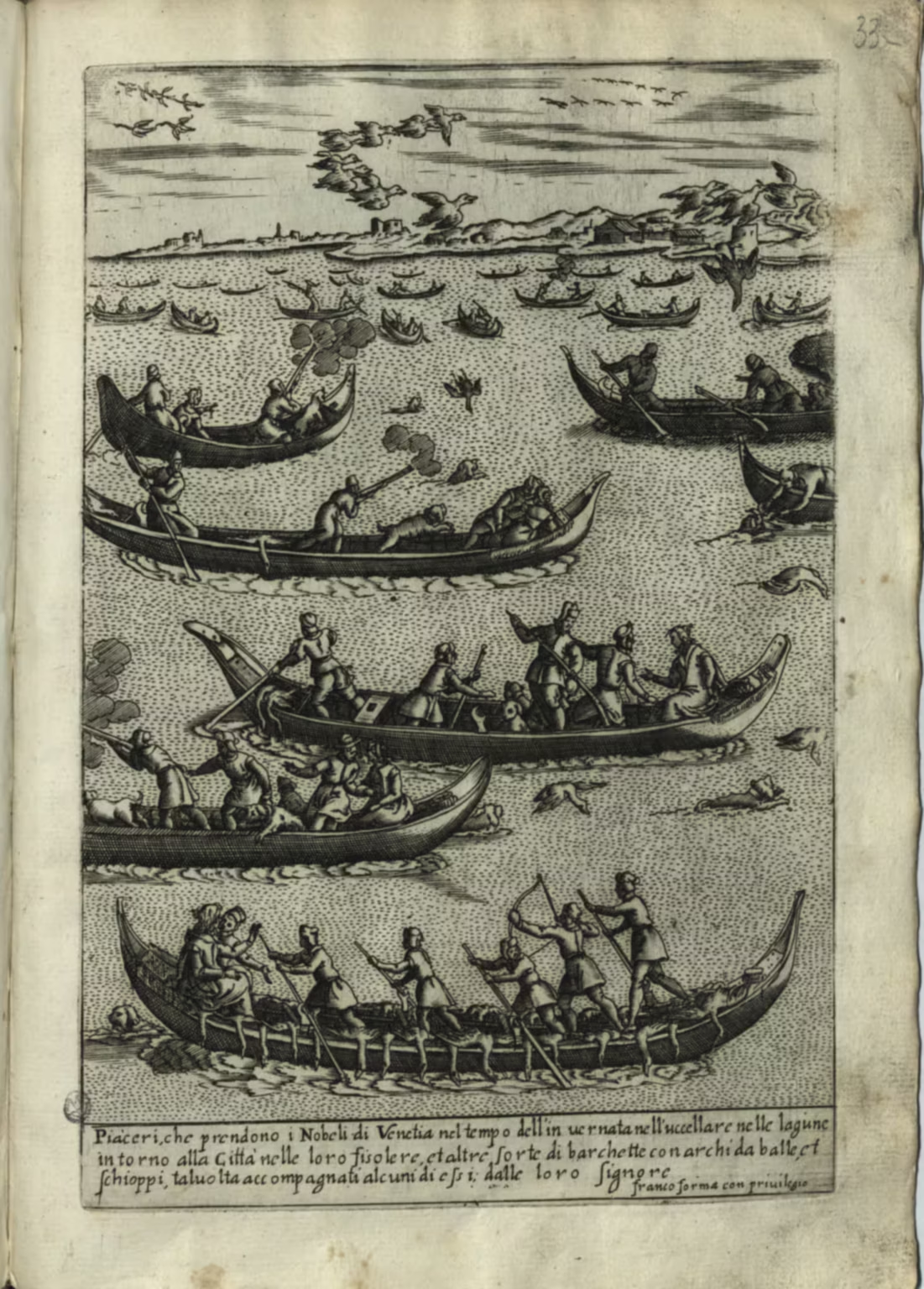
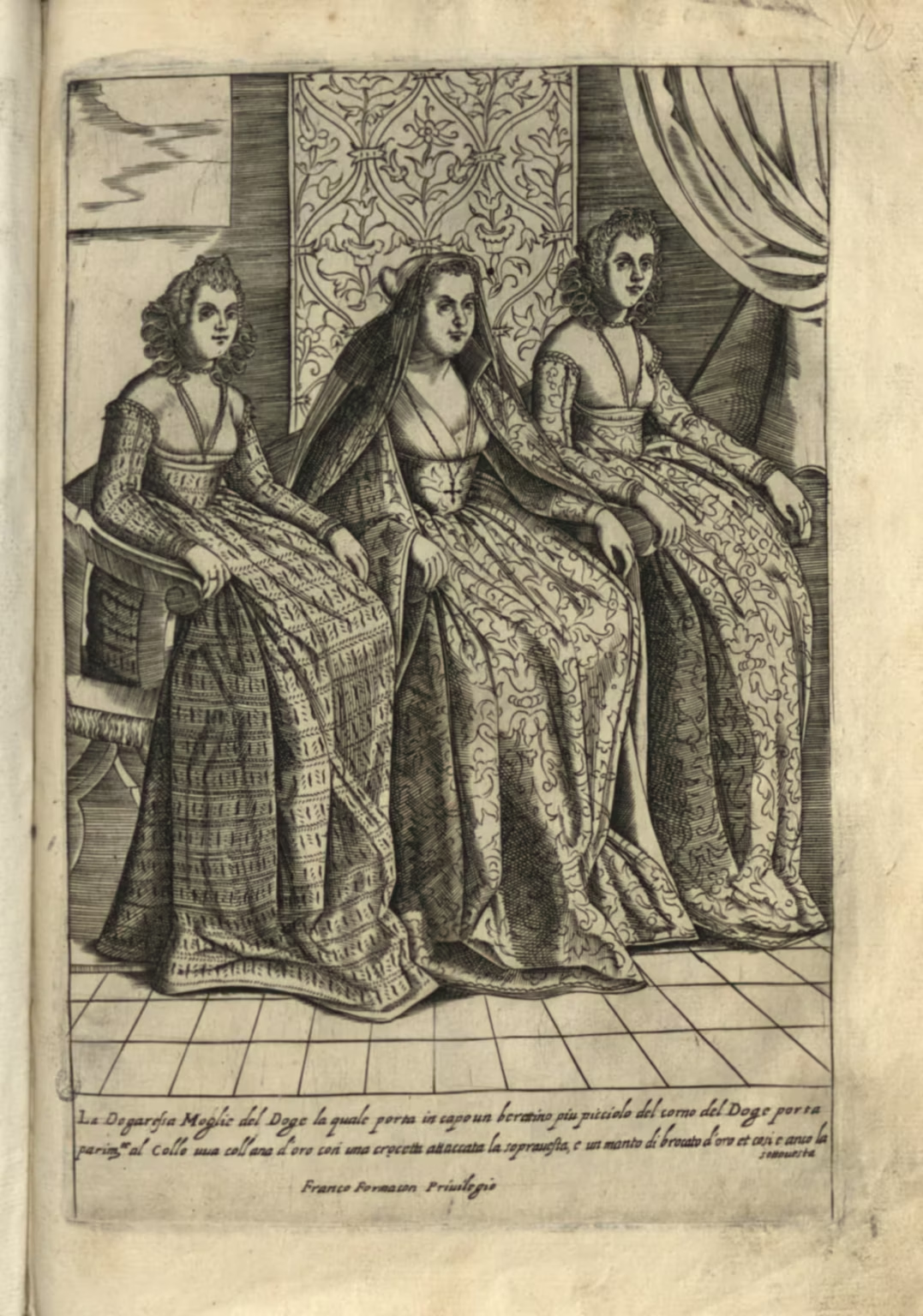
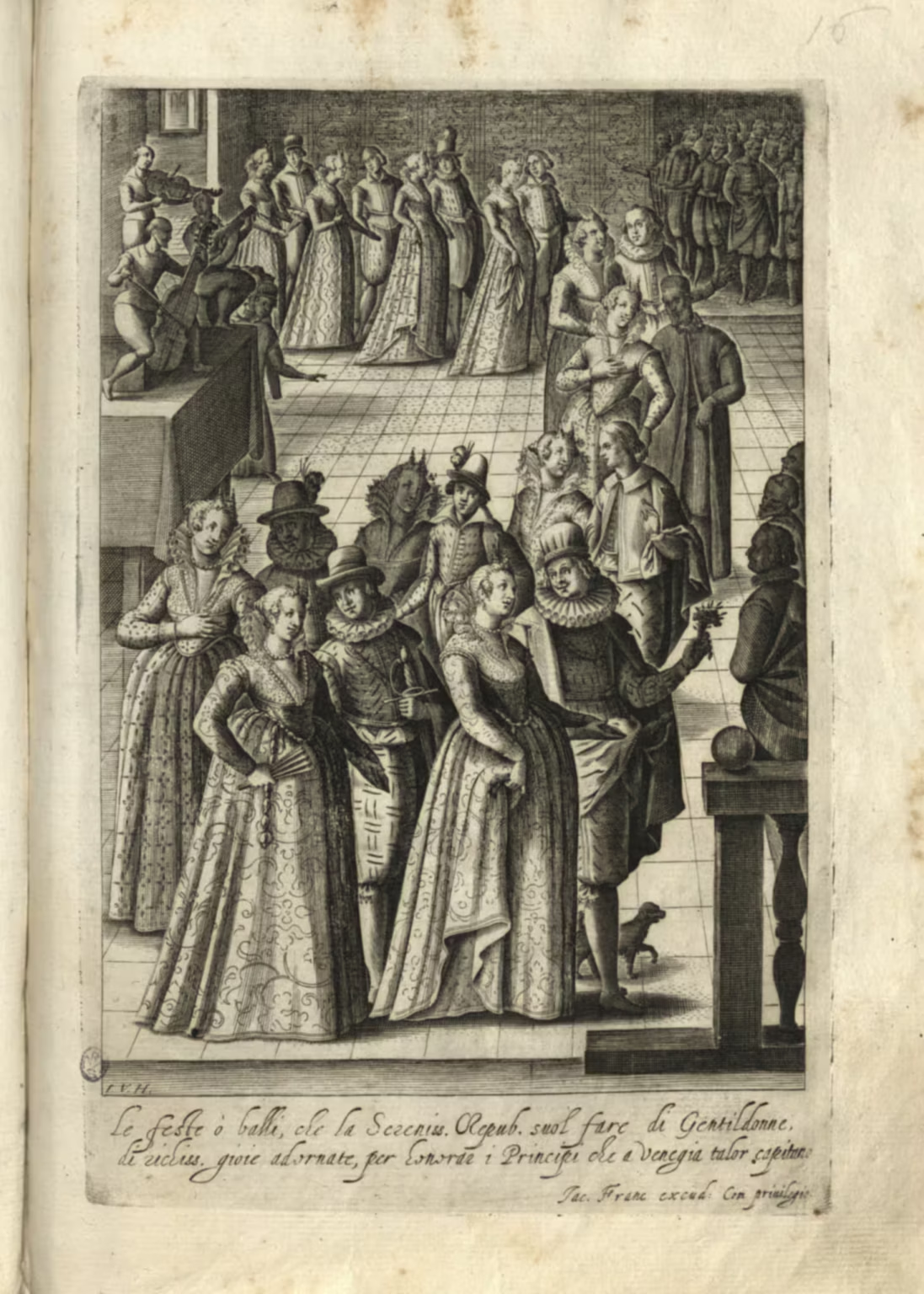
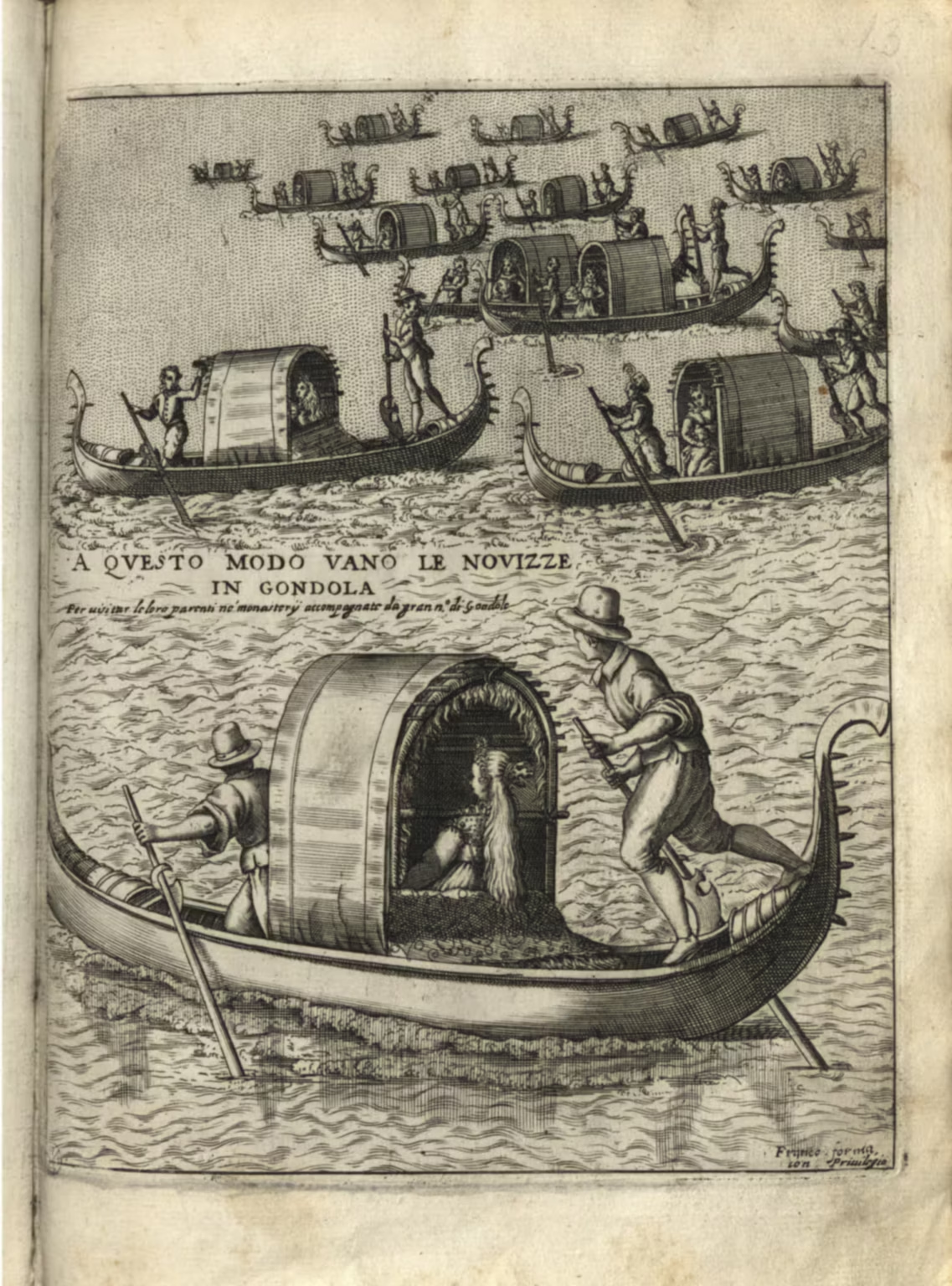
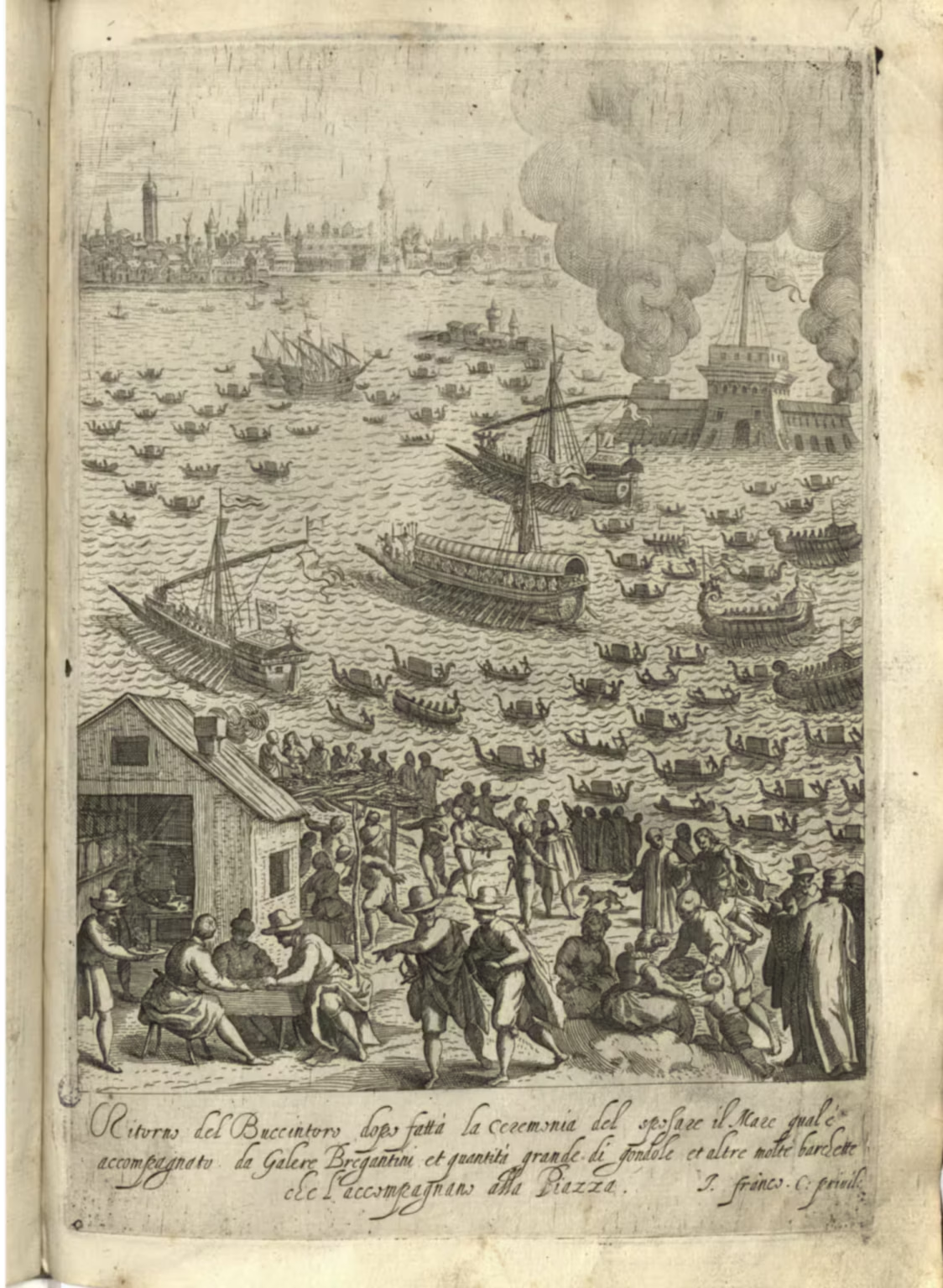

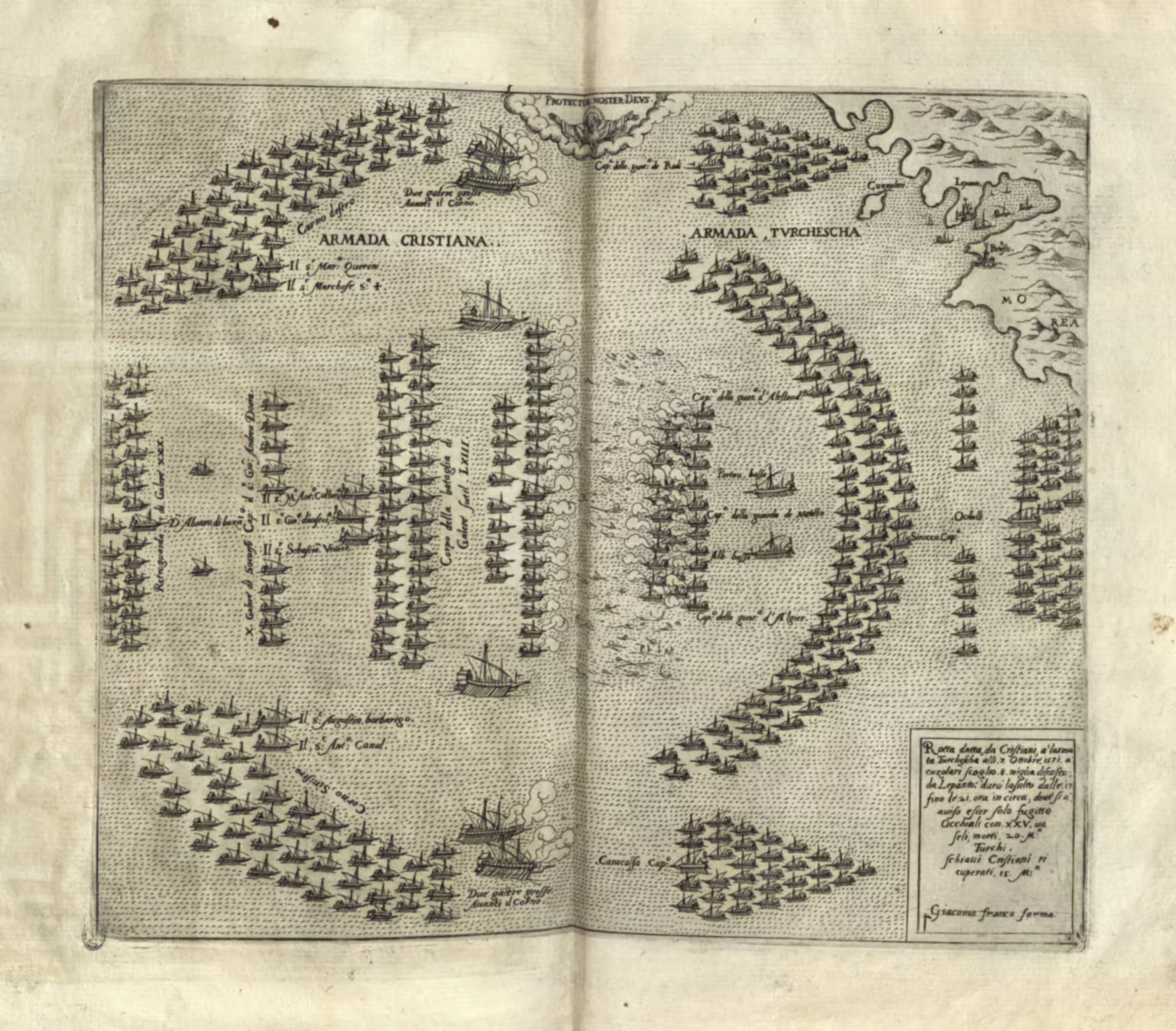
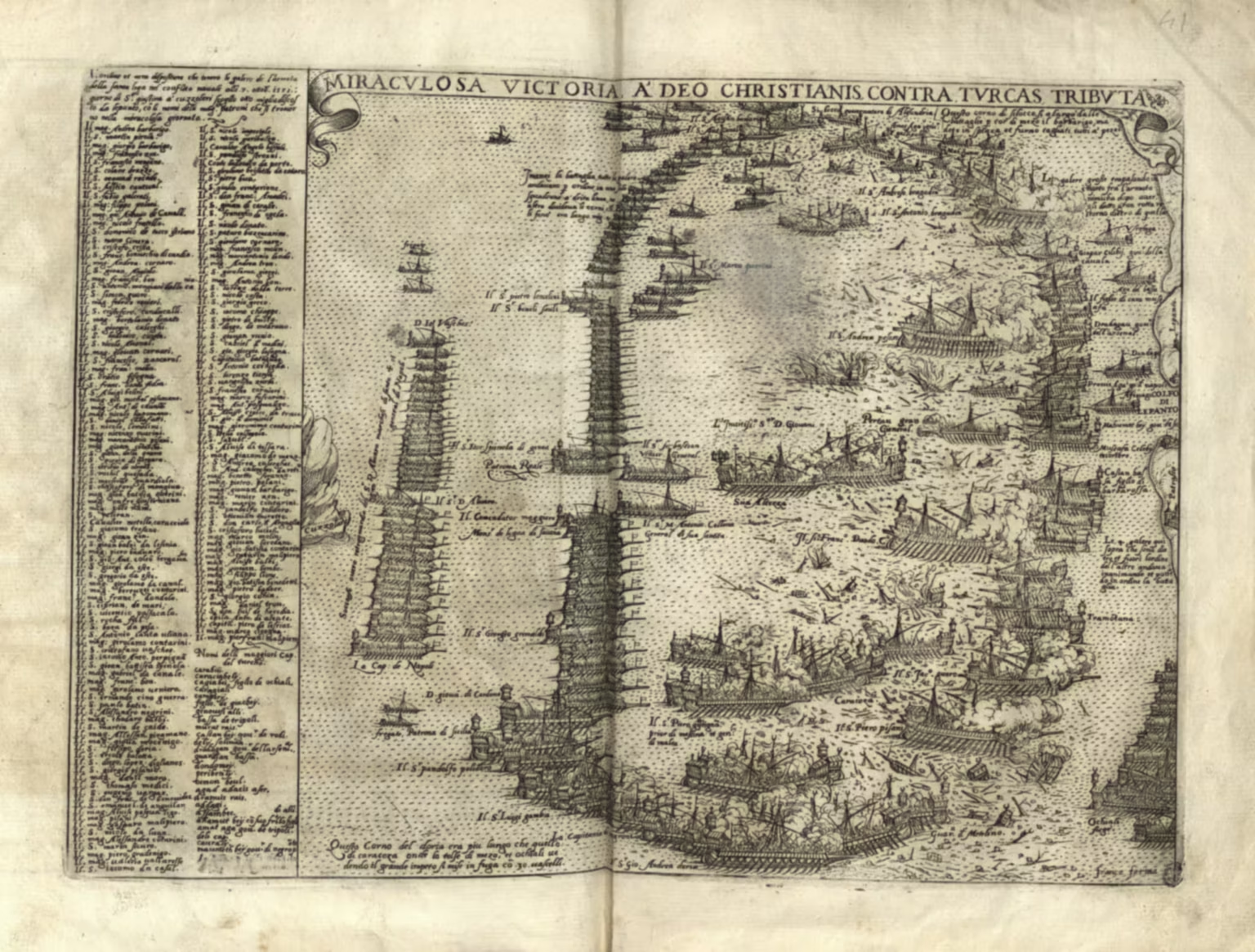
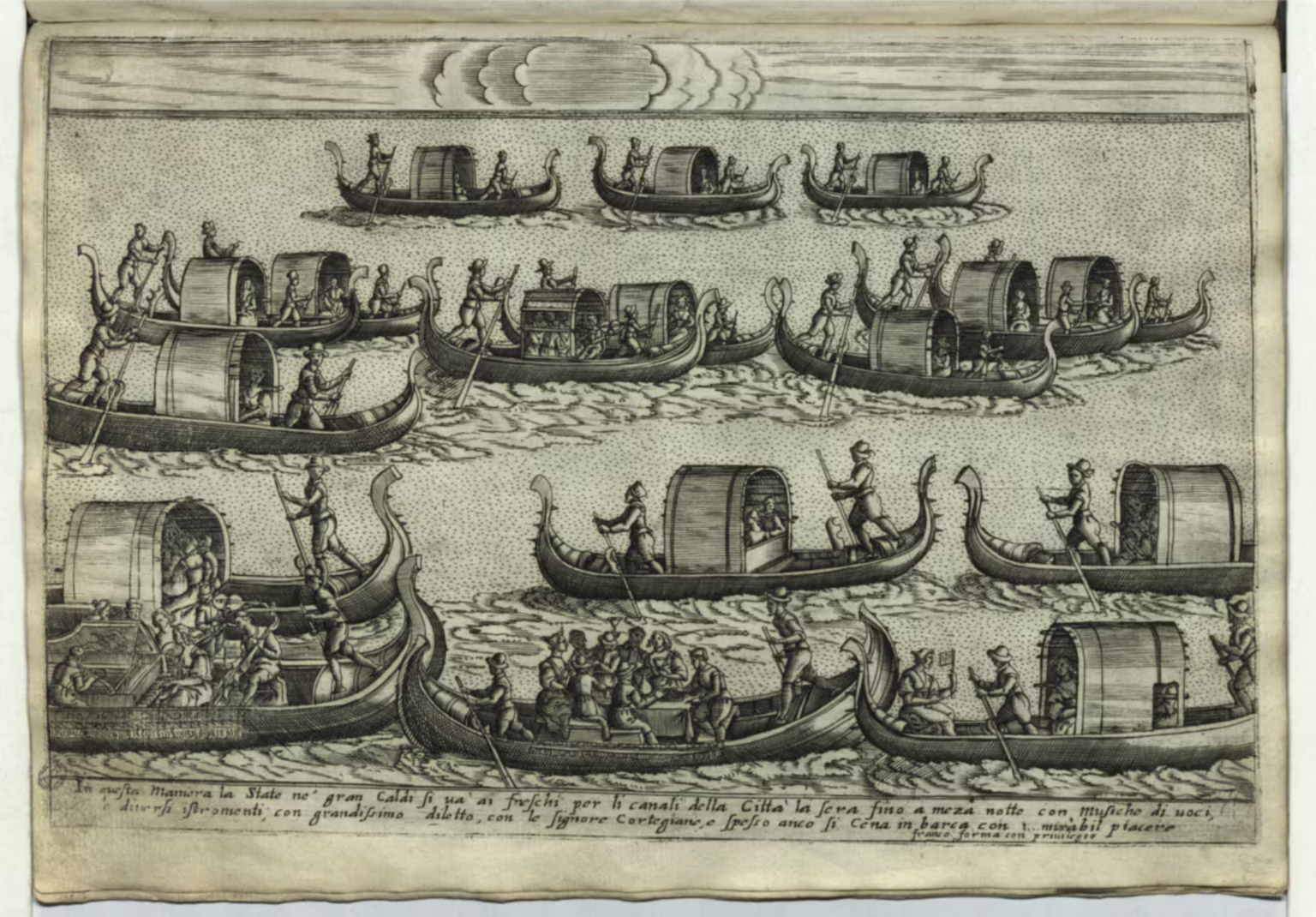
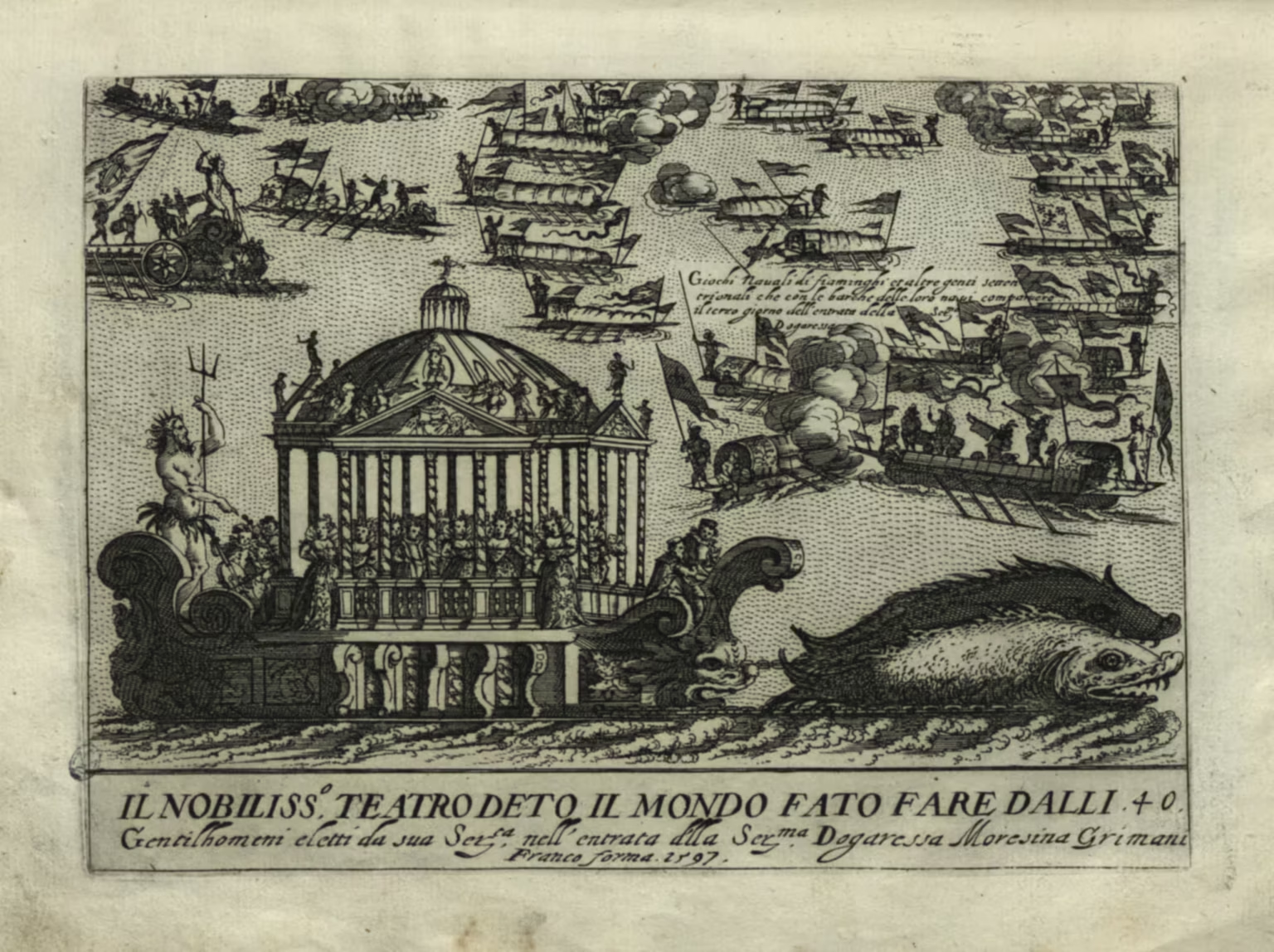
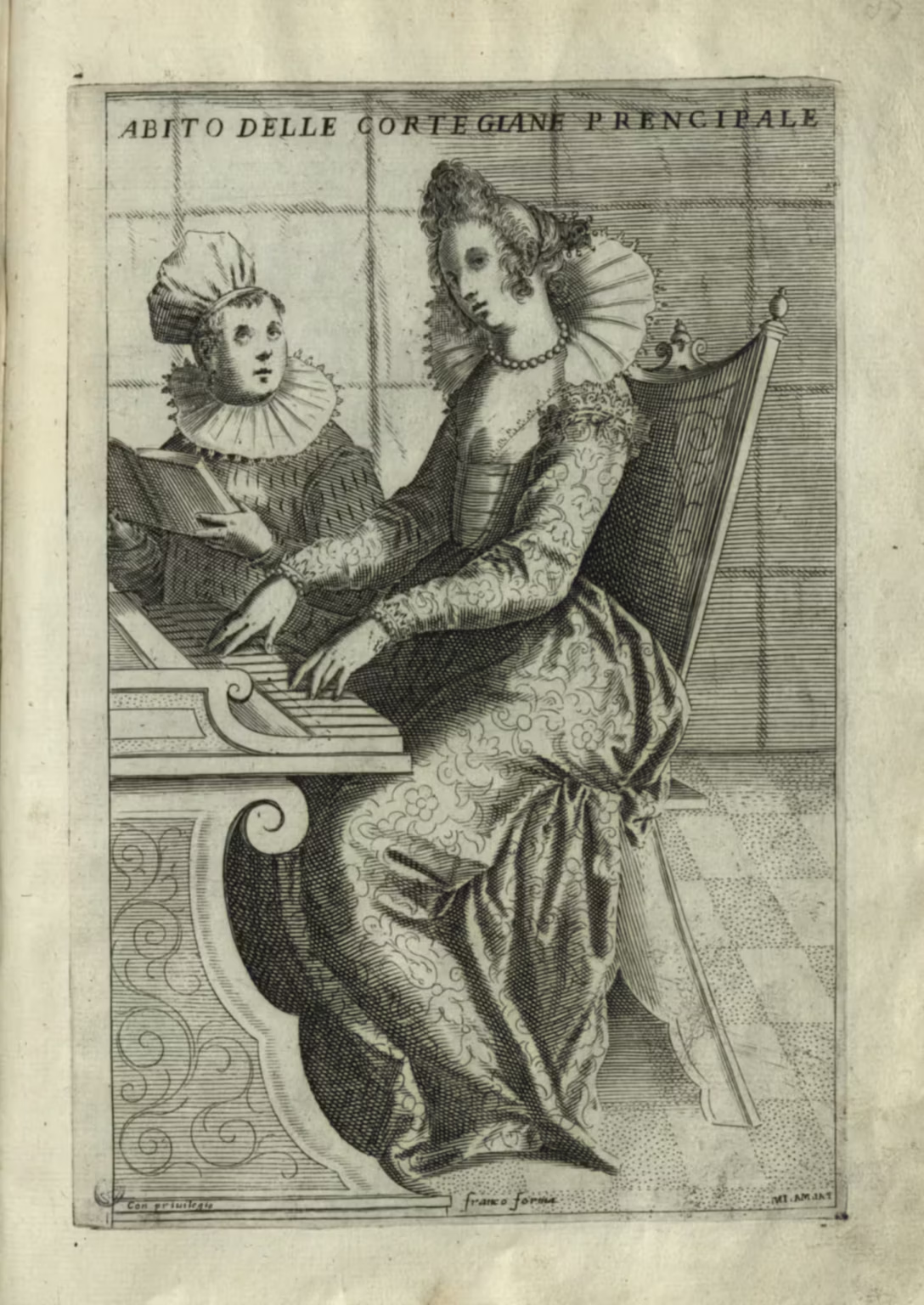
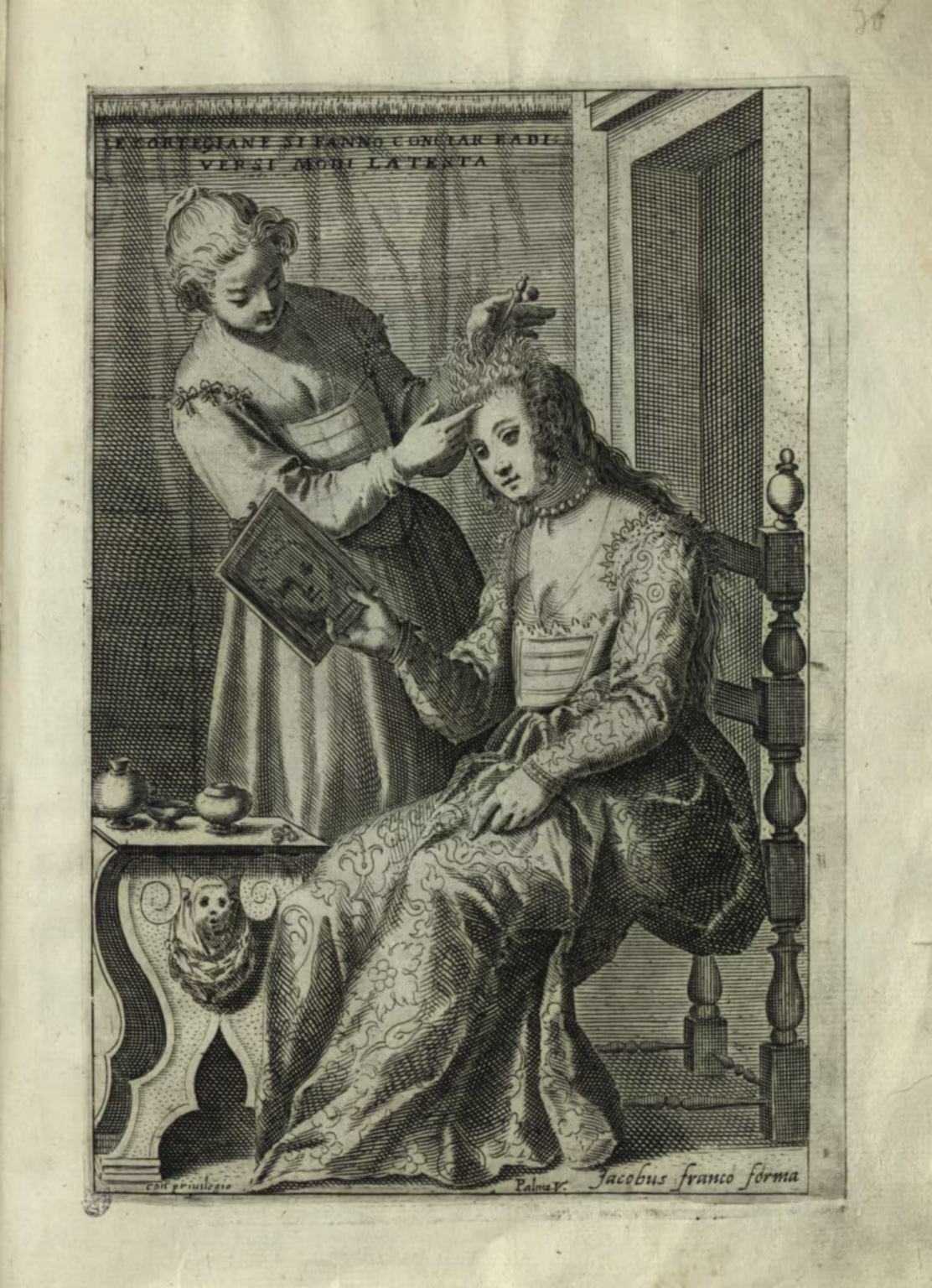
The Bibliothèque nationale de France has a partial collection:
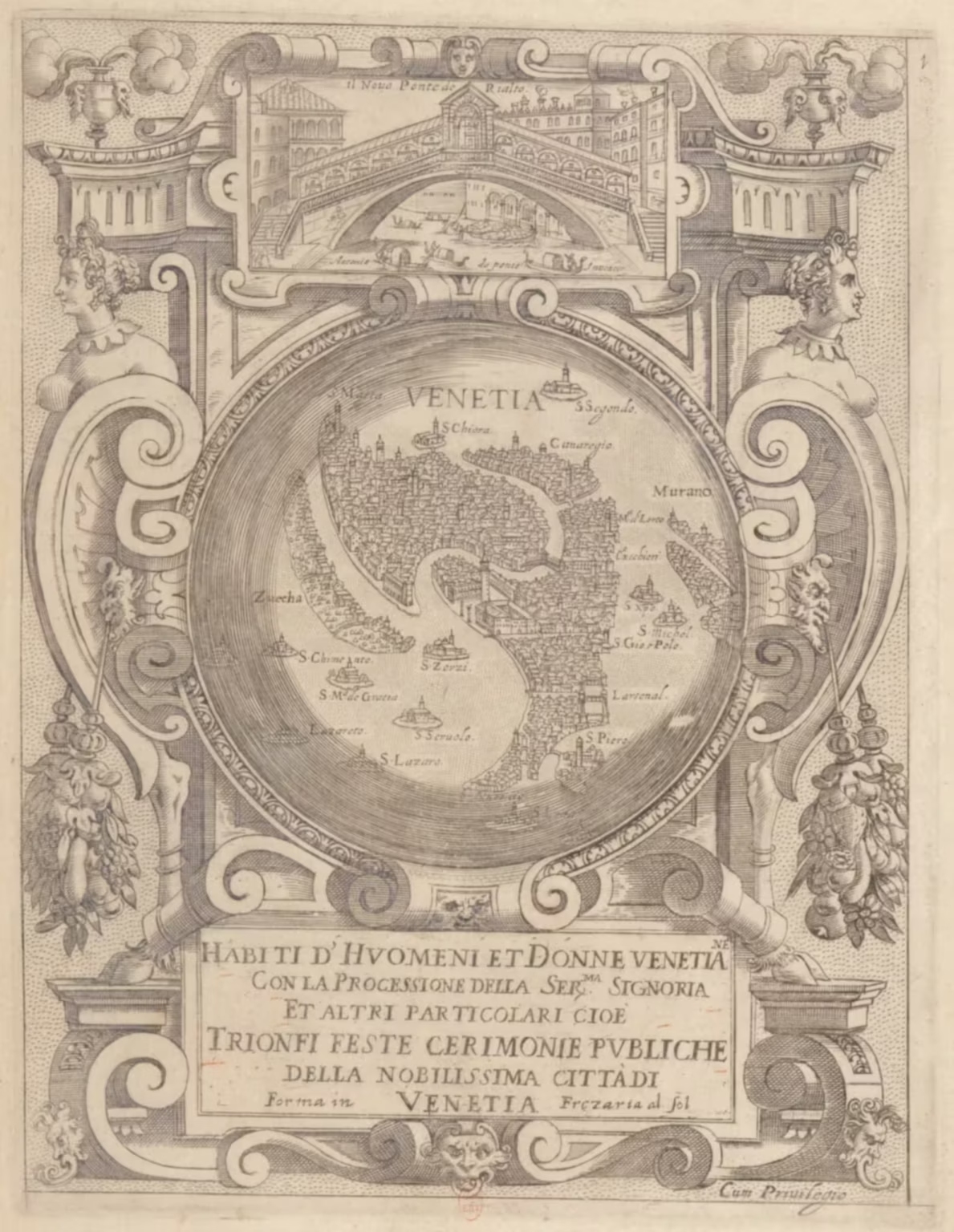
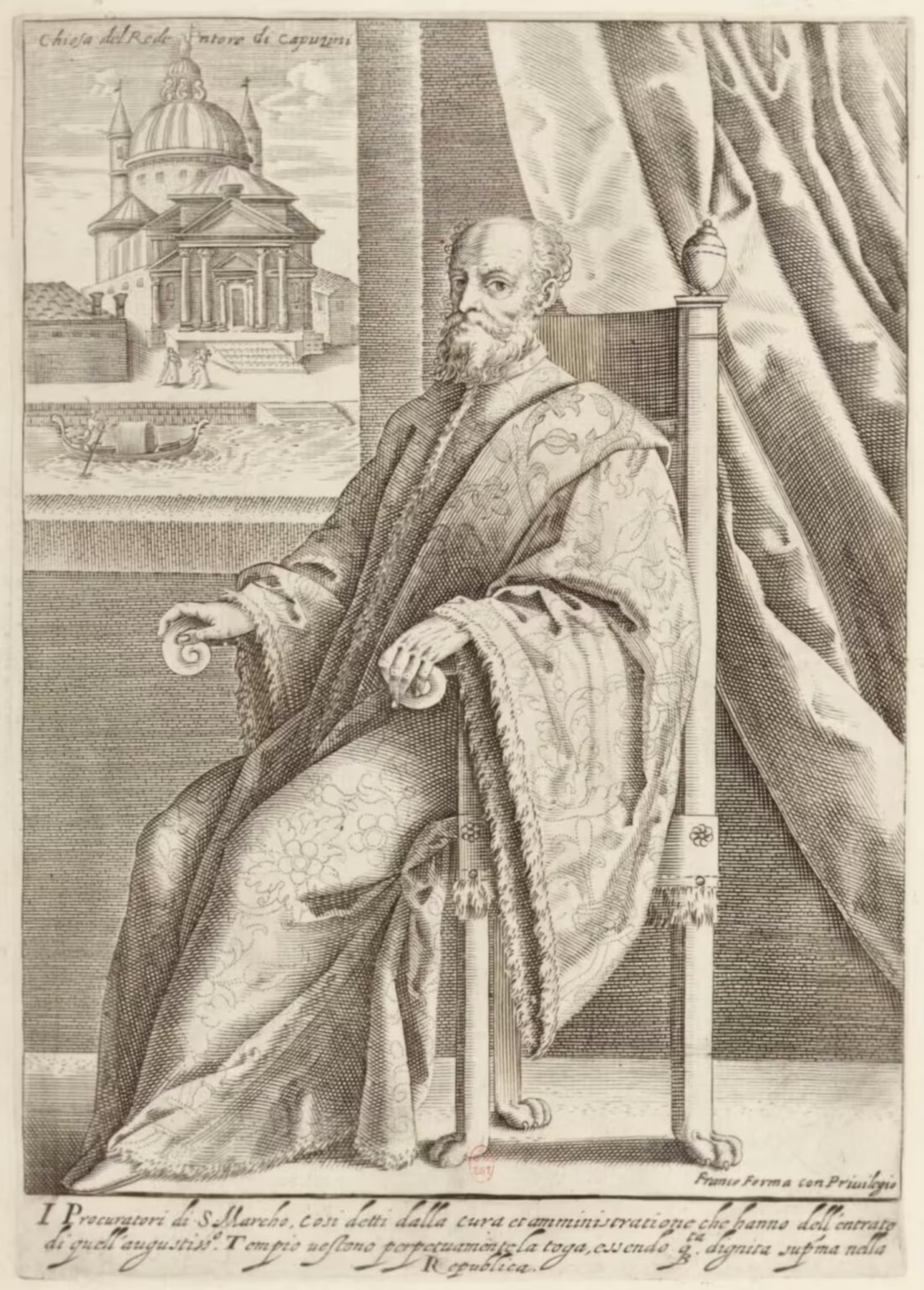
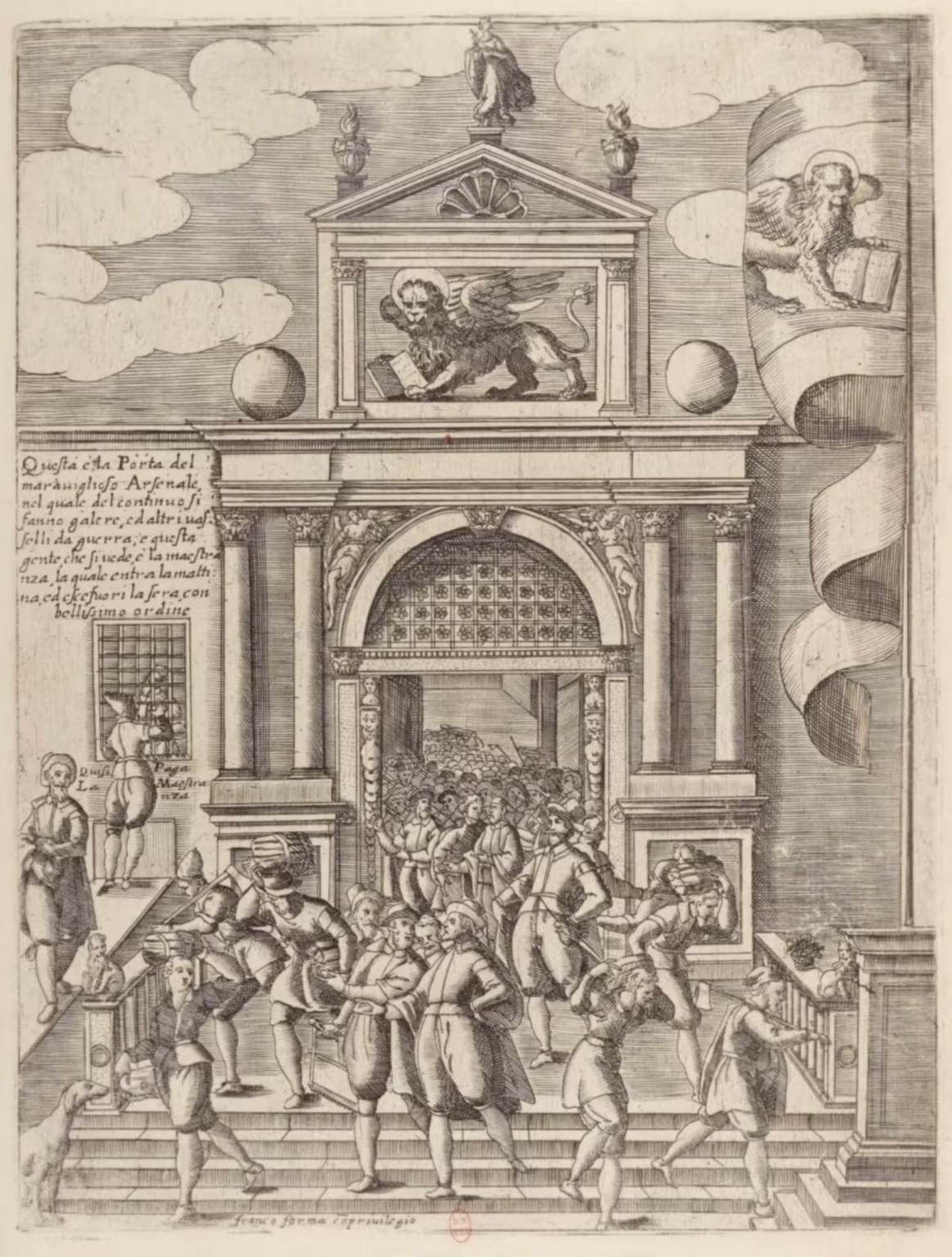
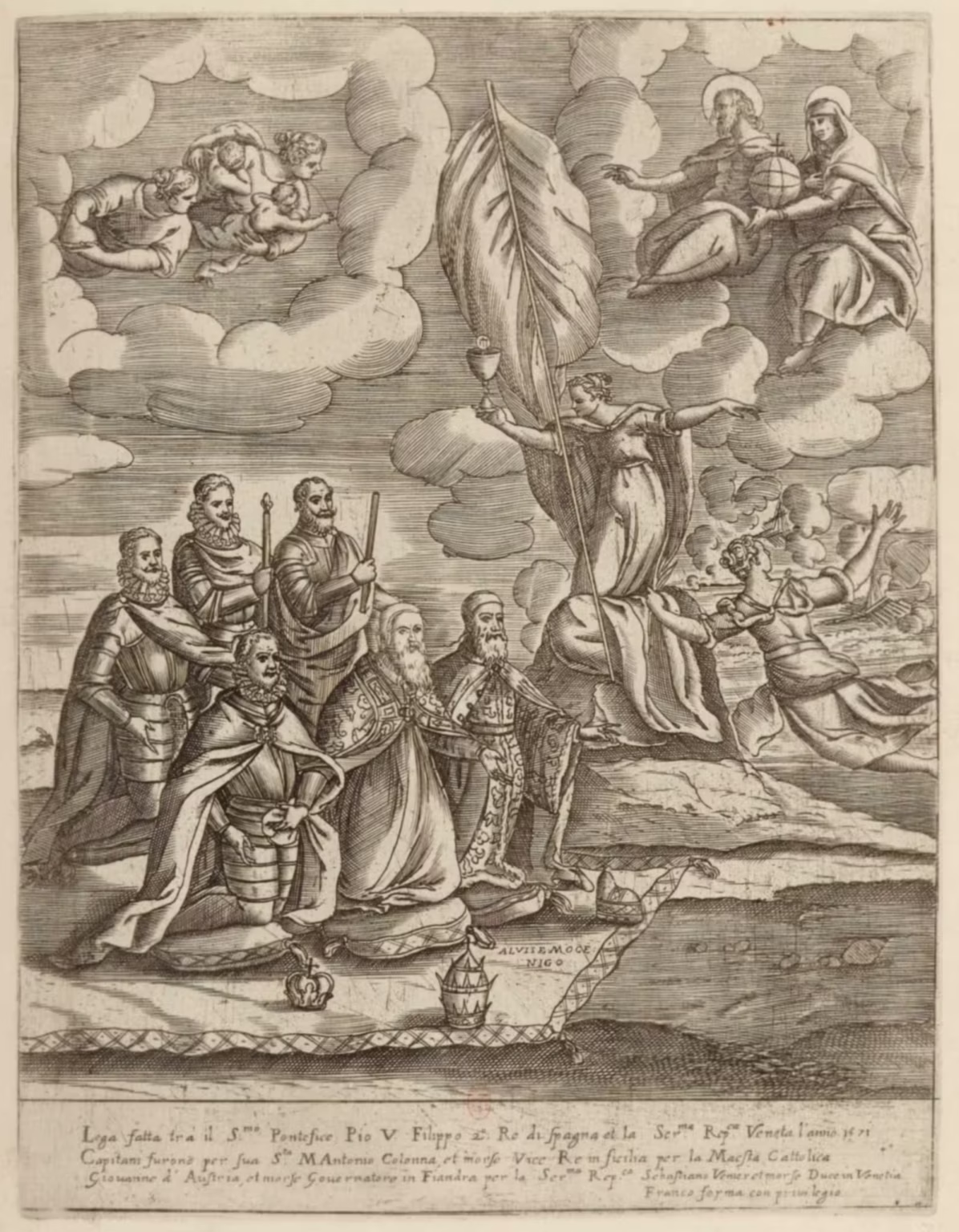
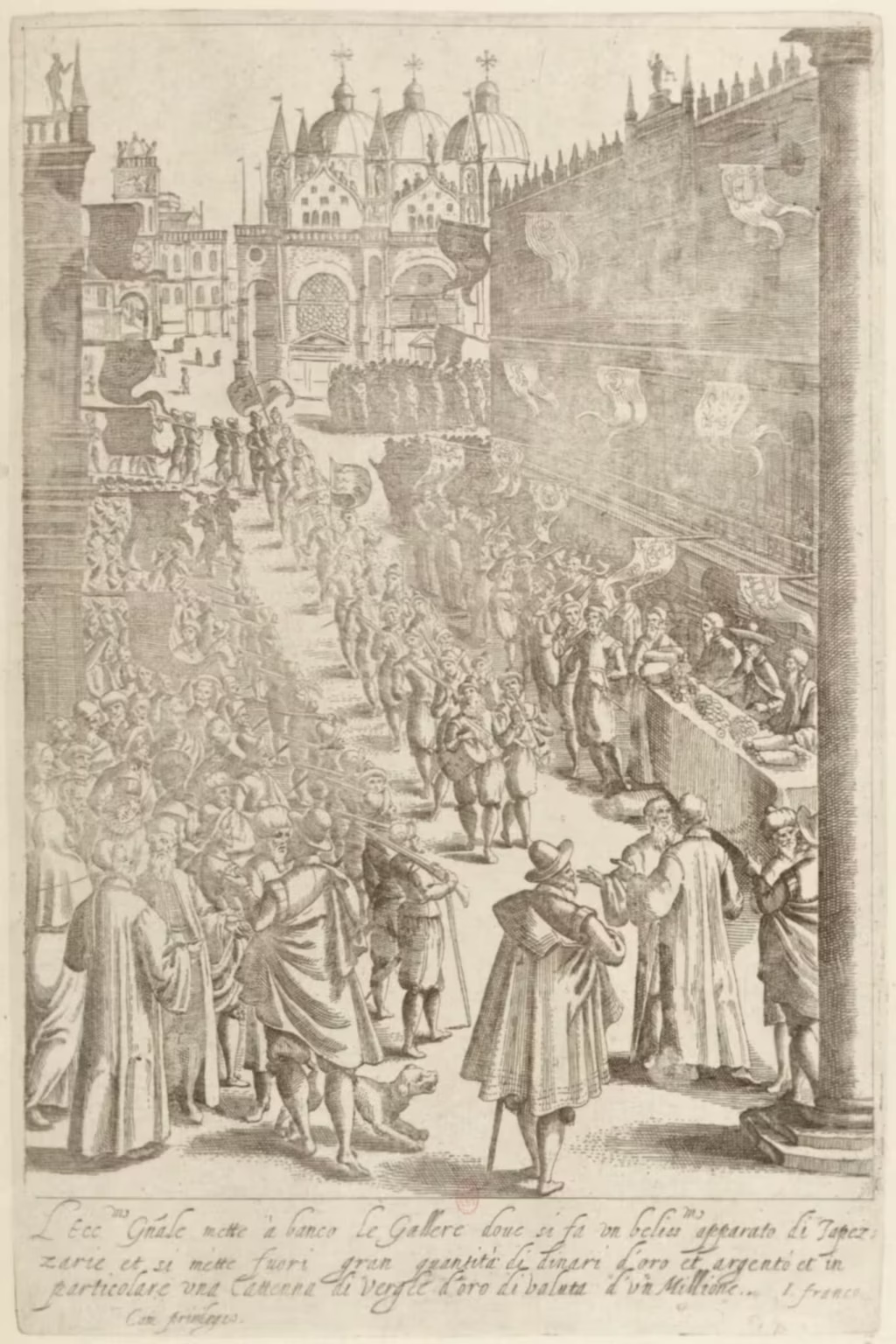
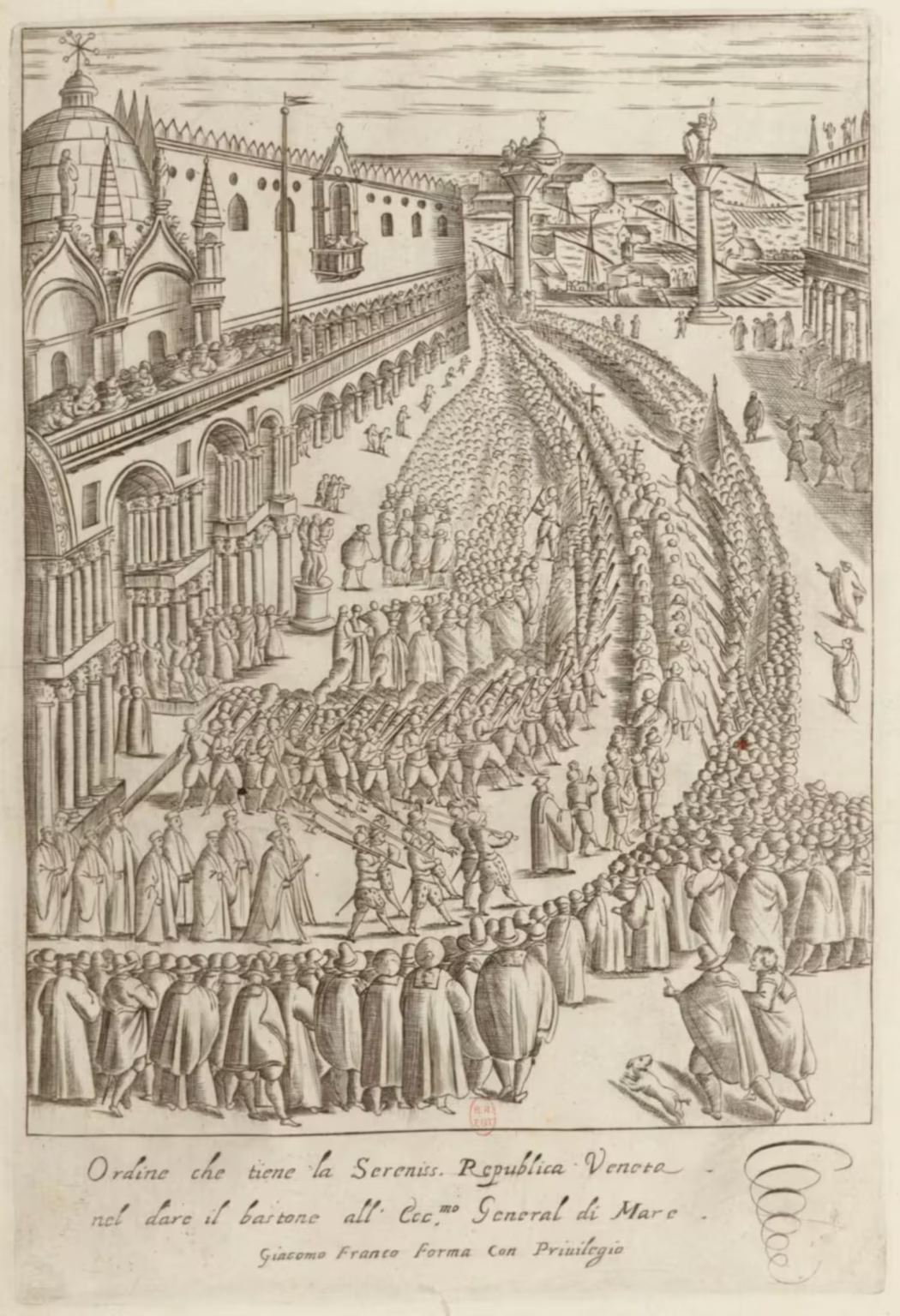
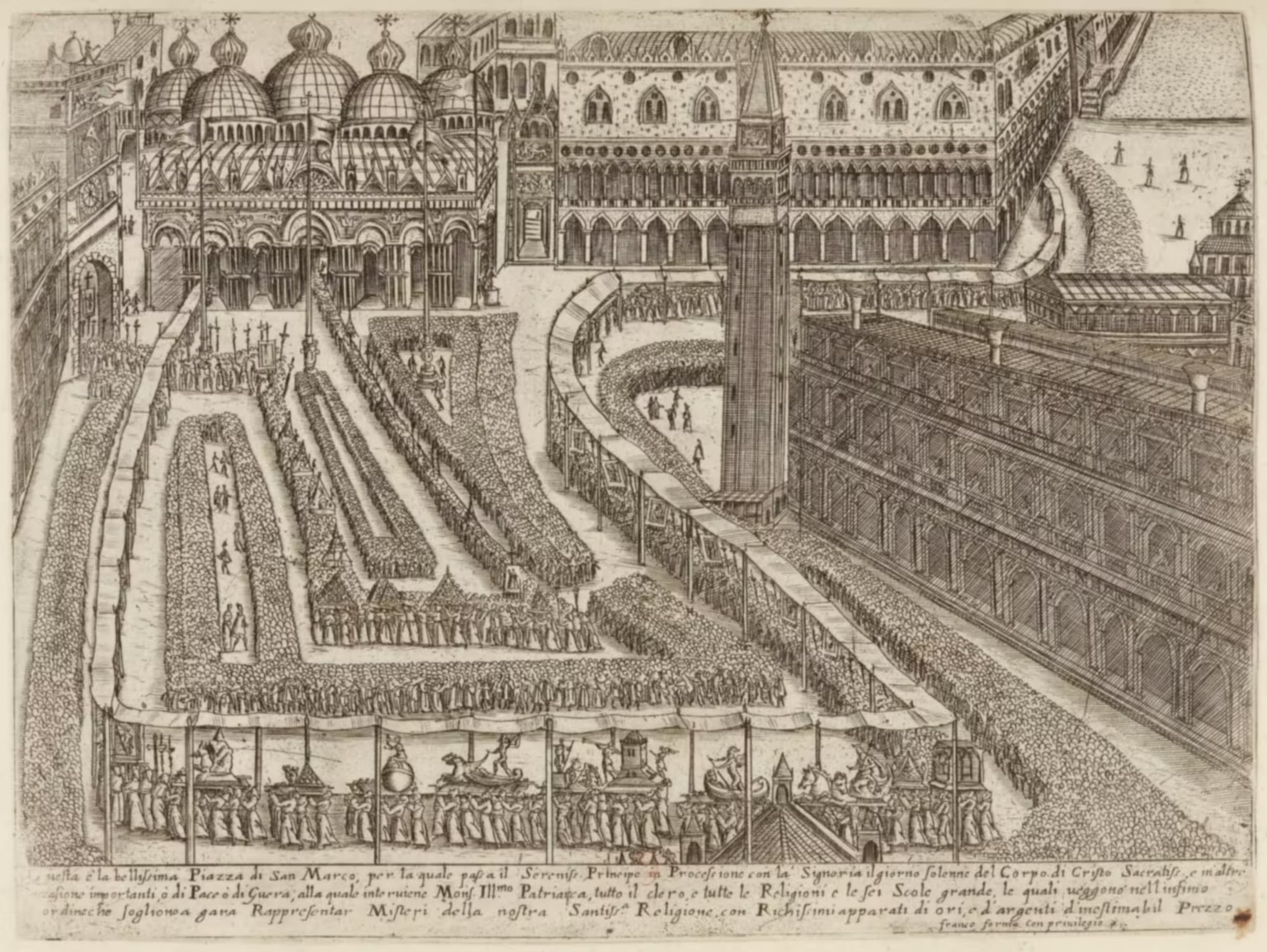
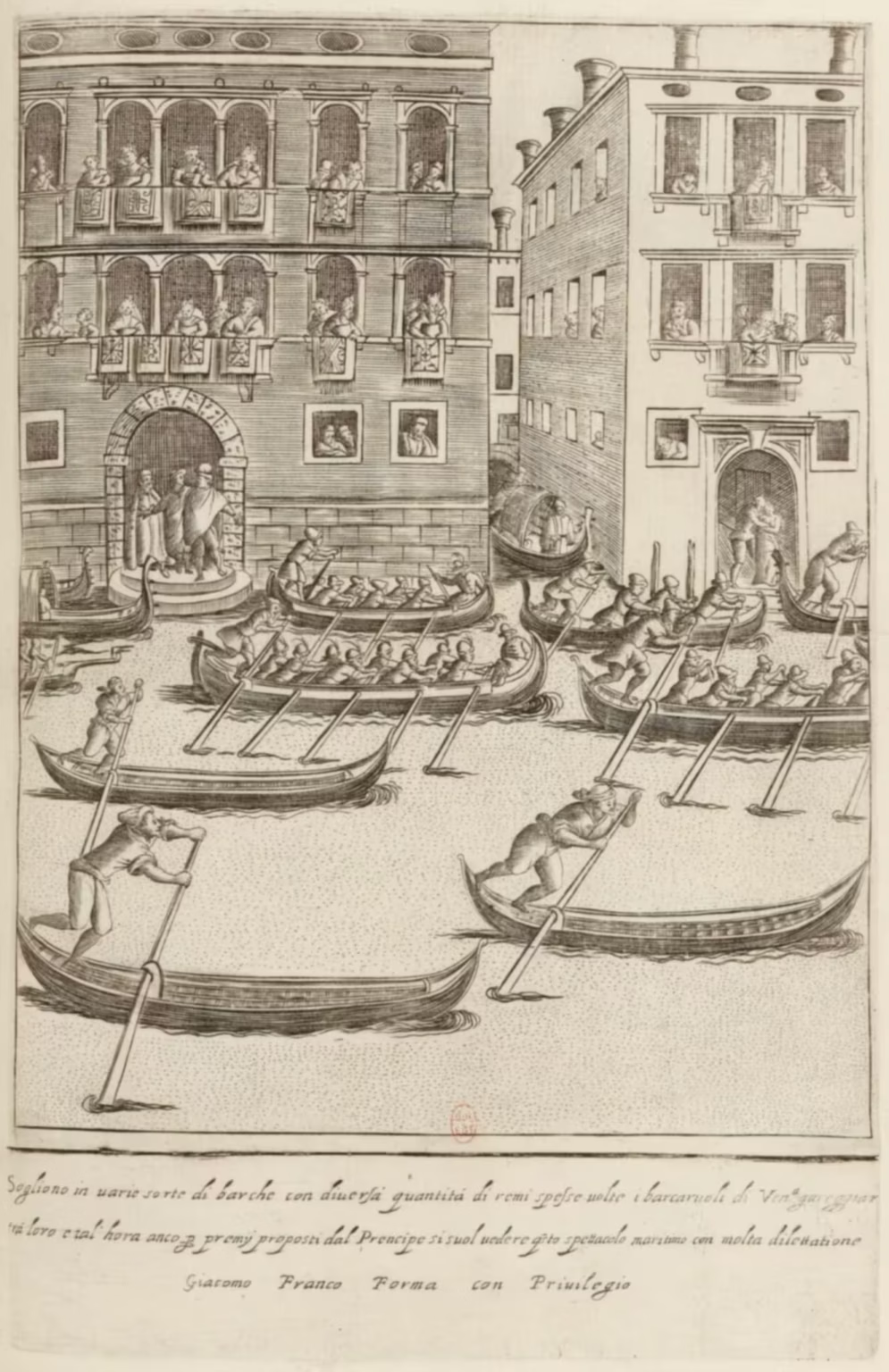
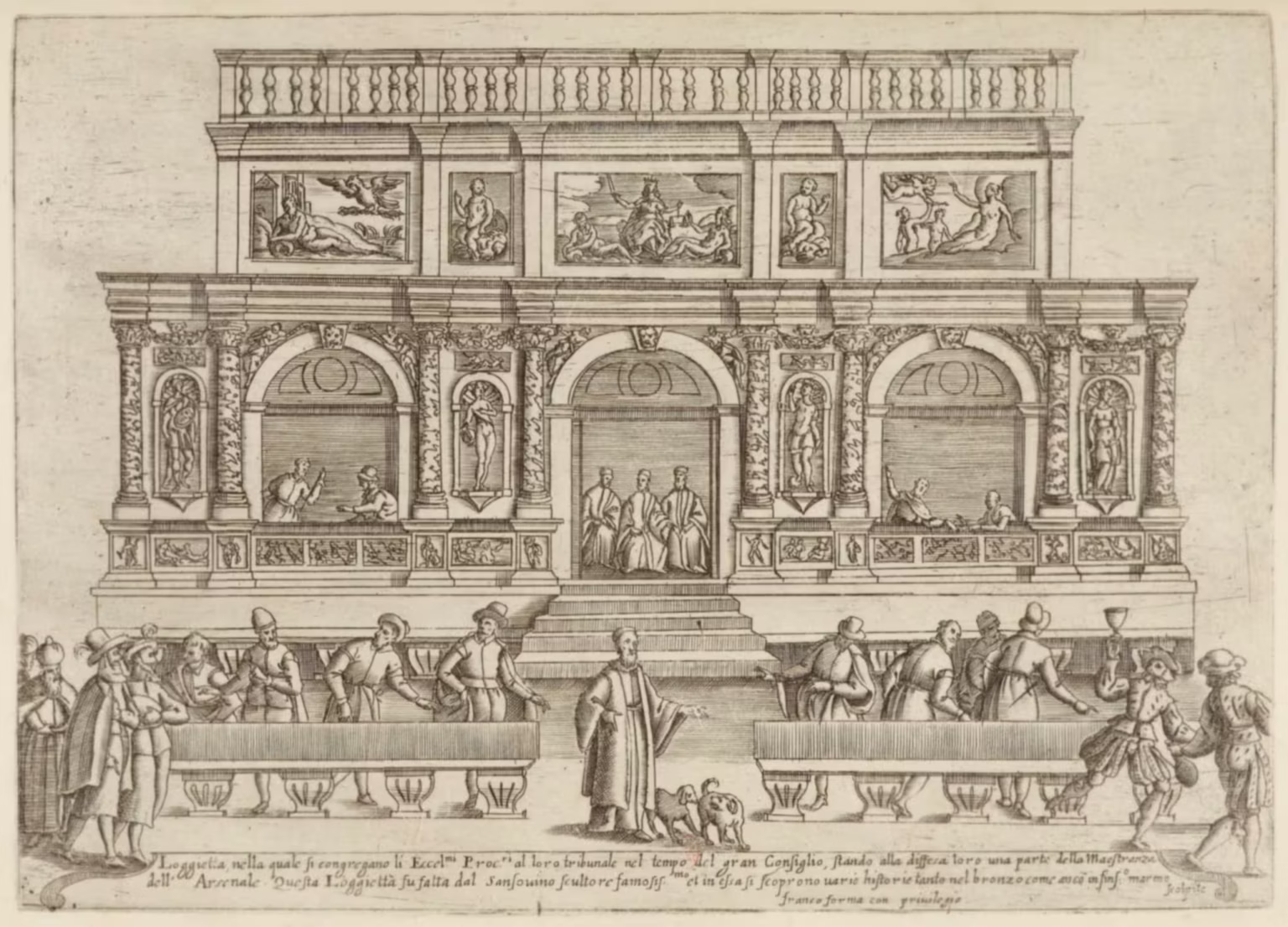
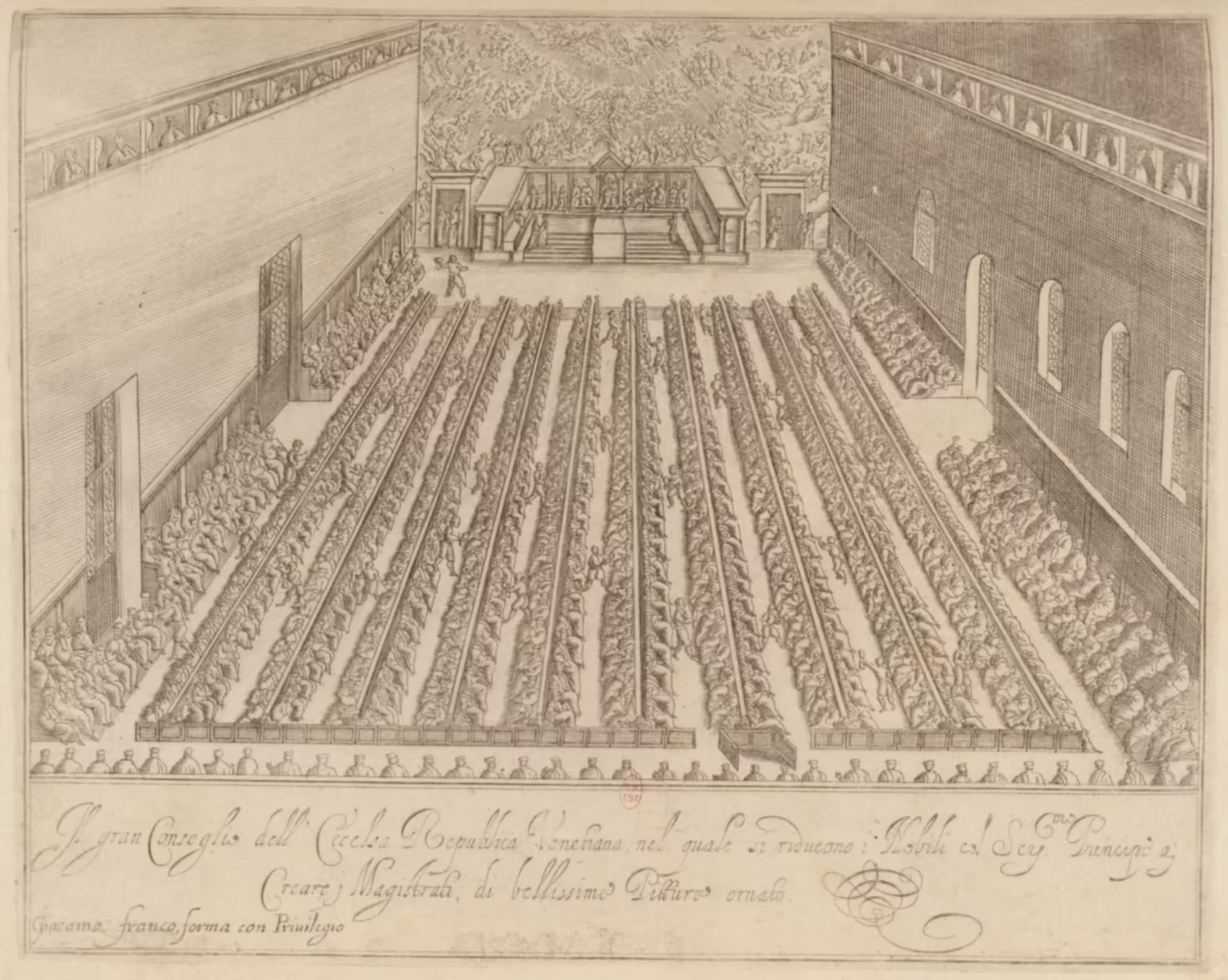
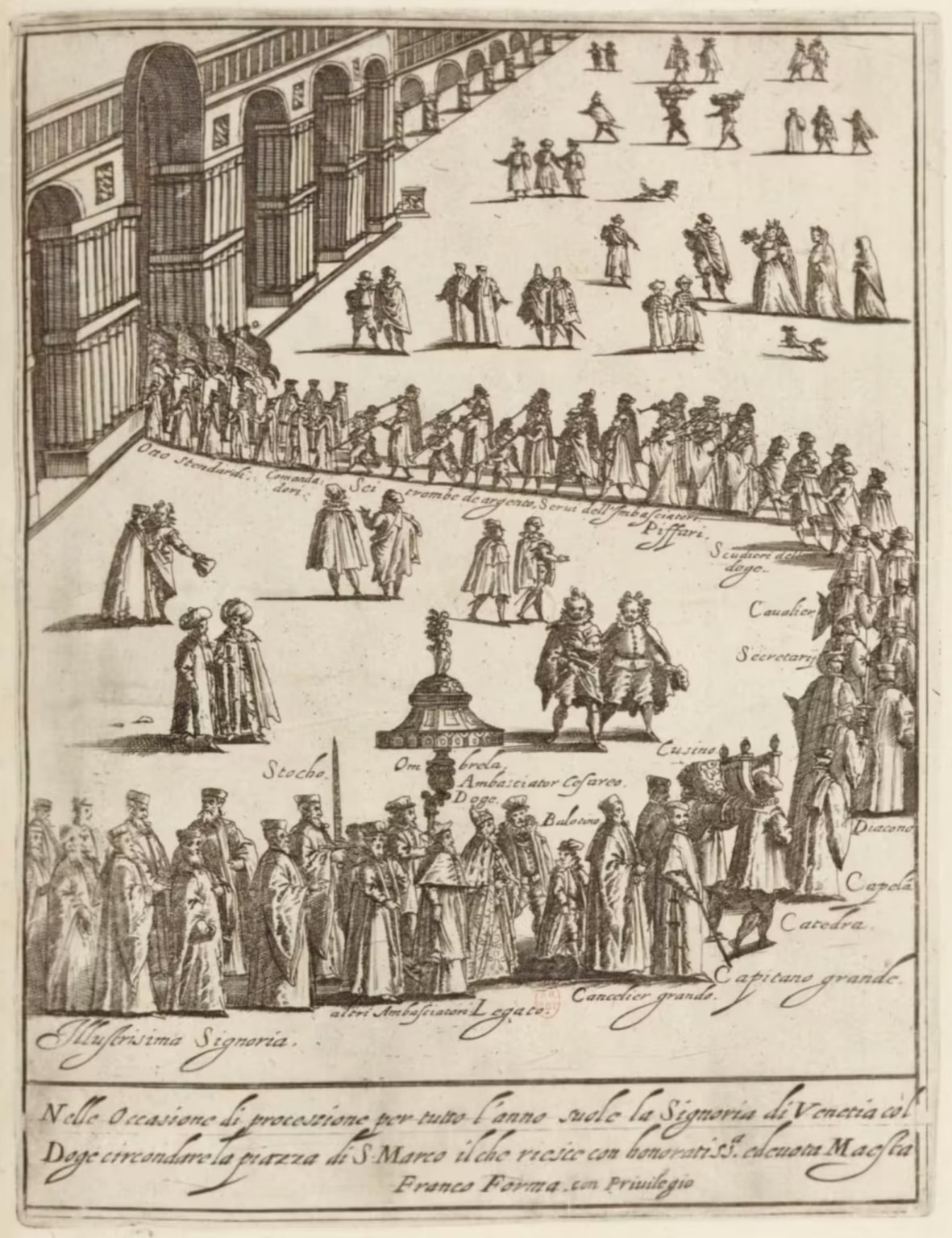
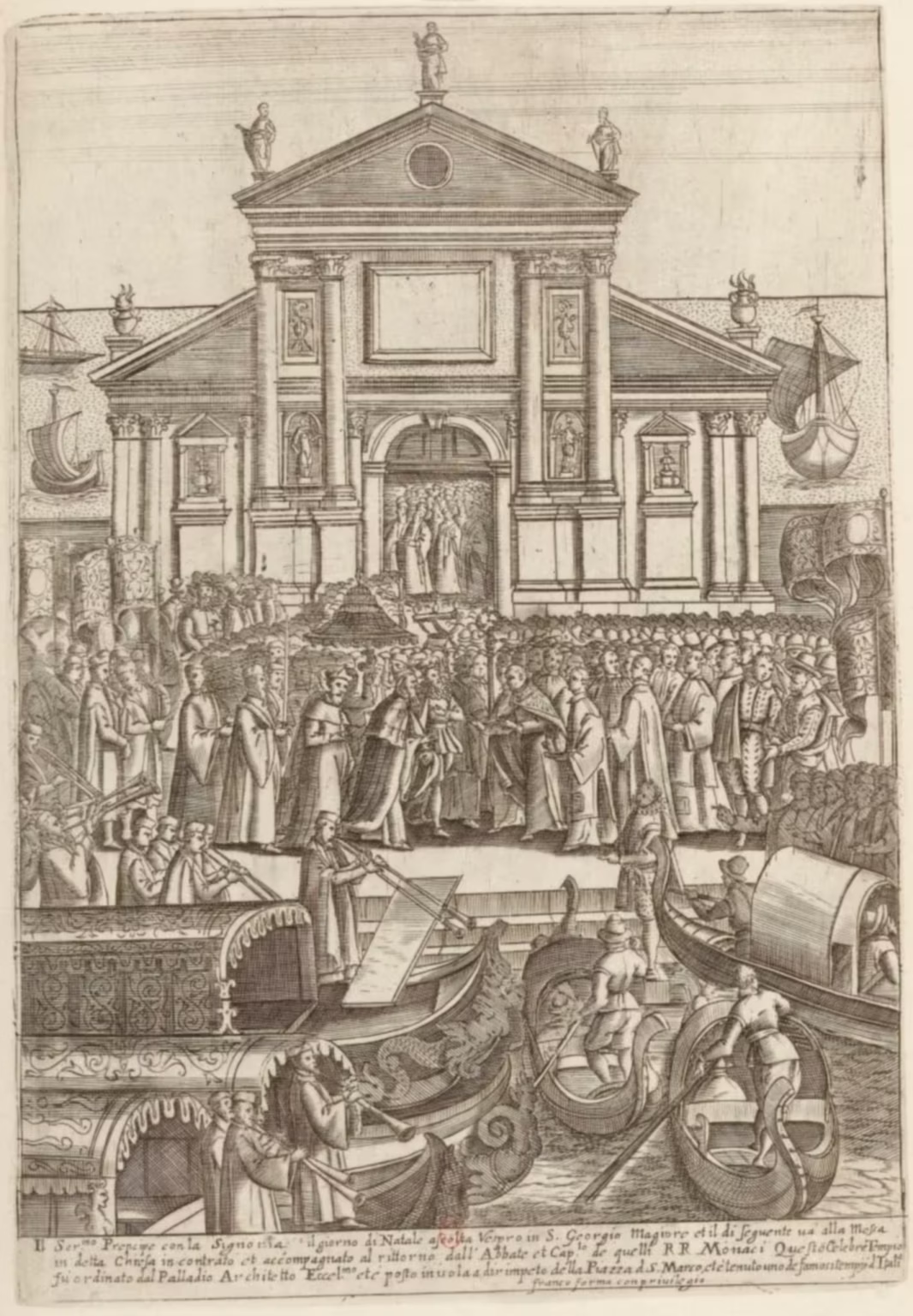
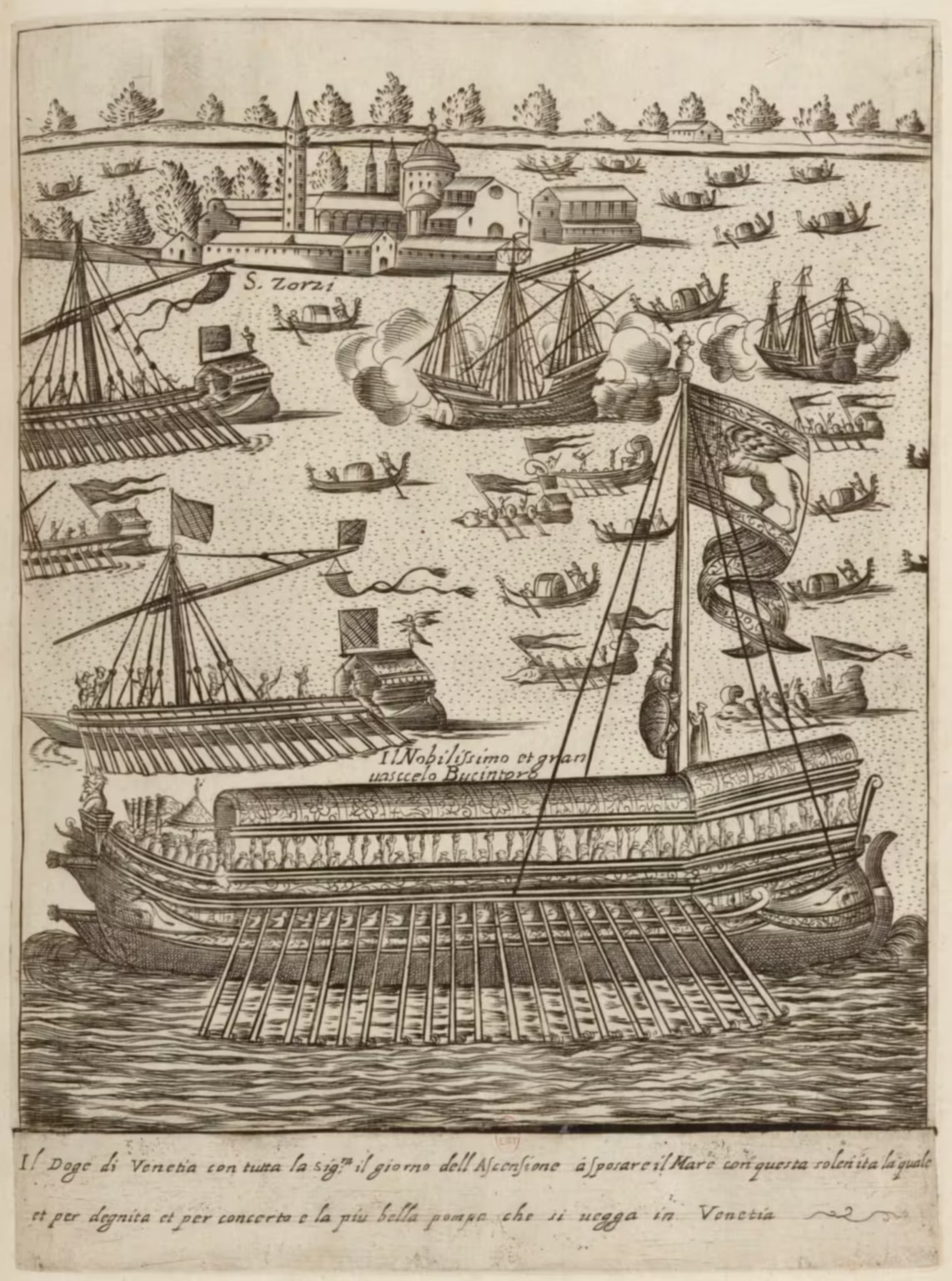
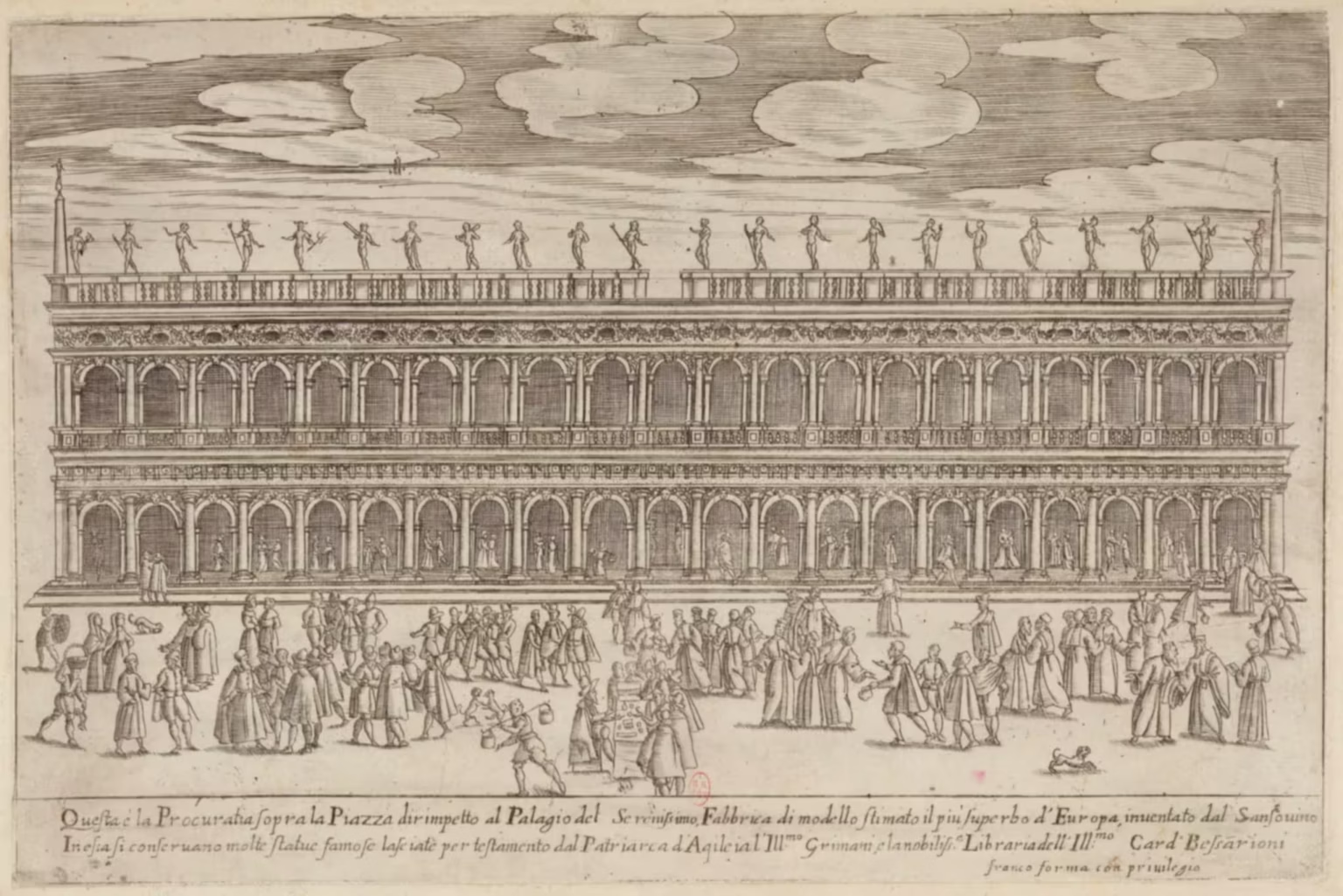
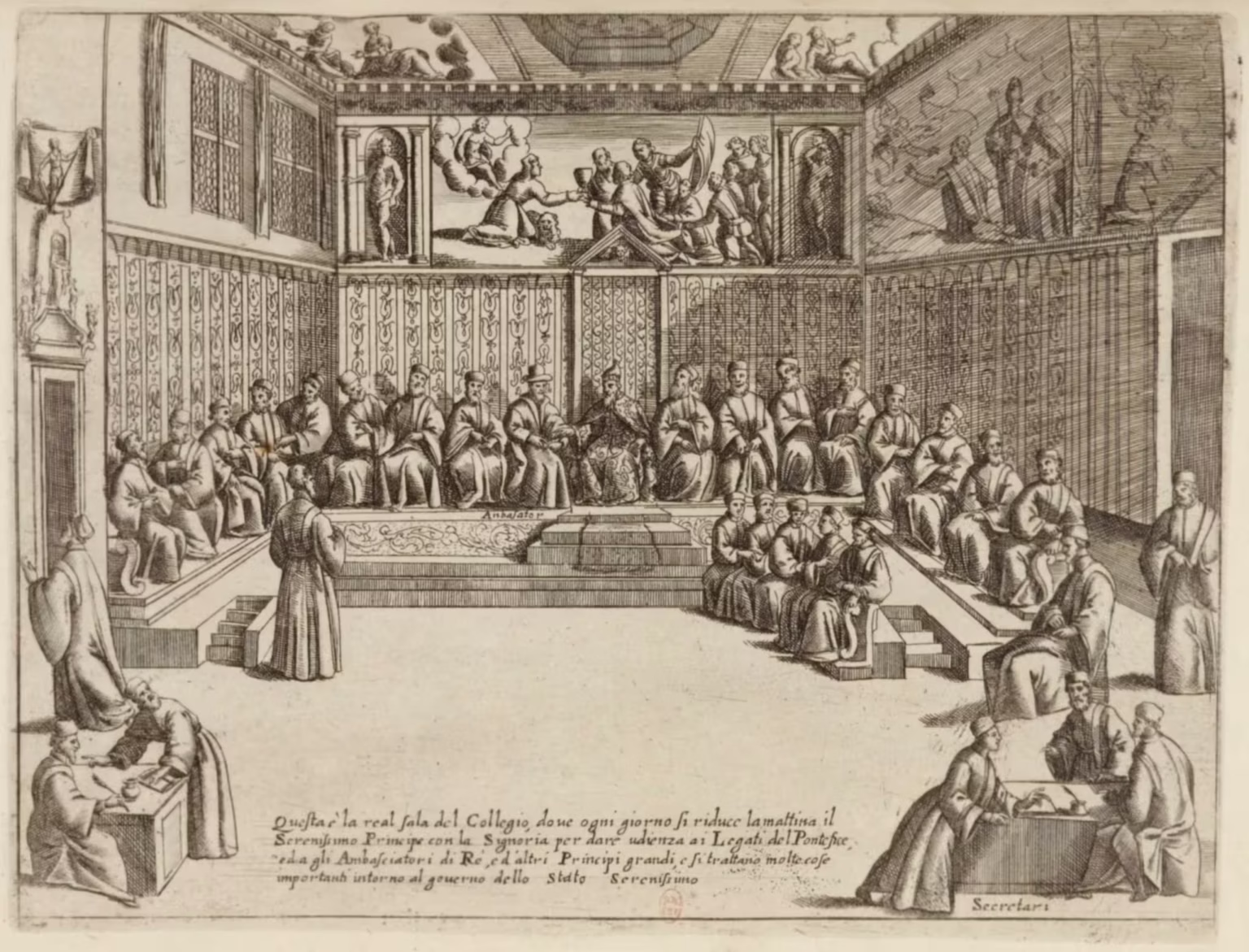
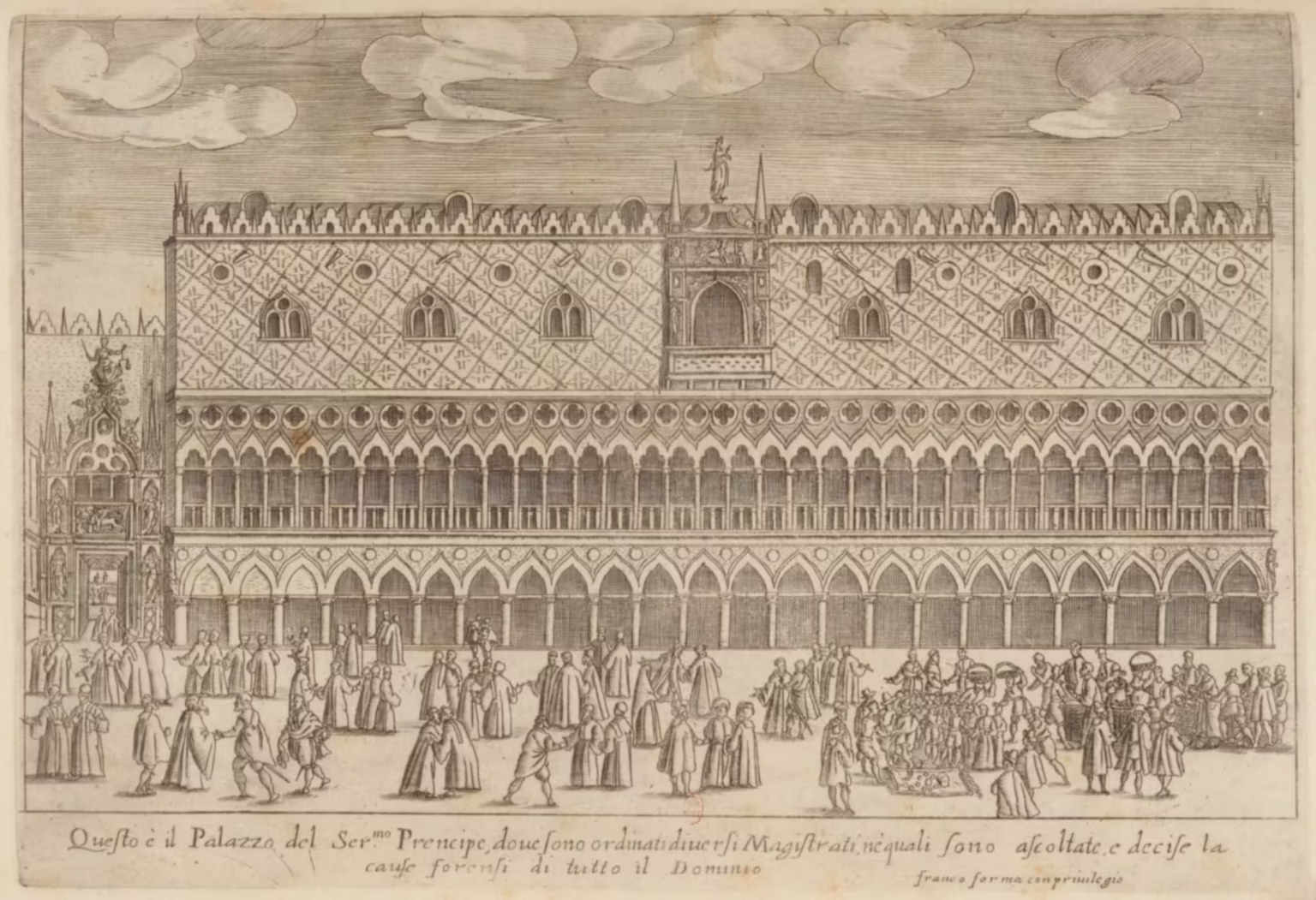
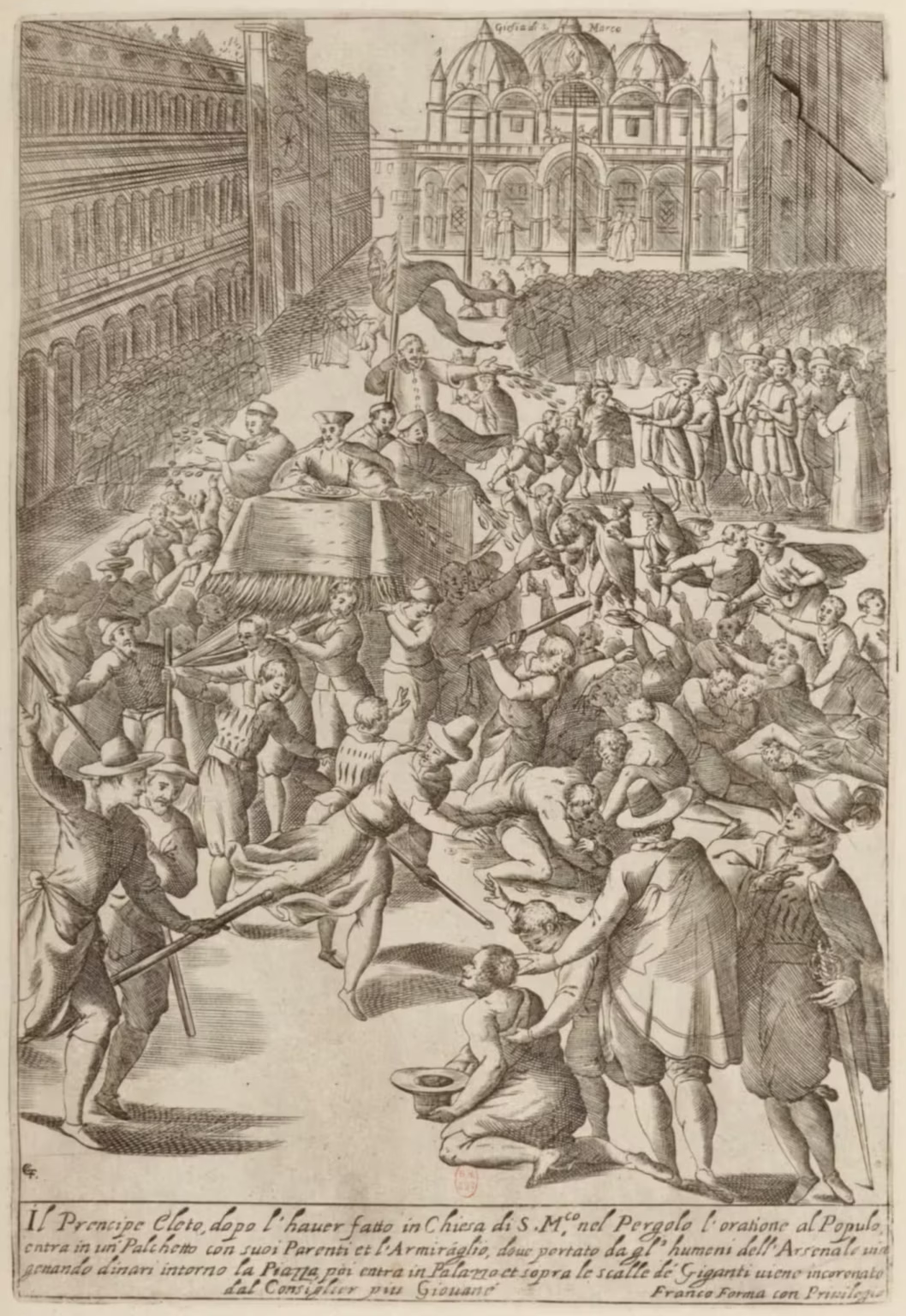
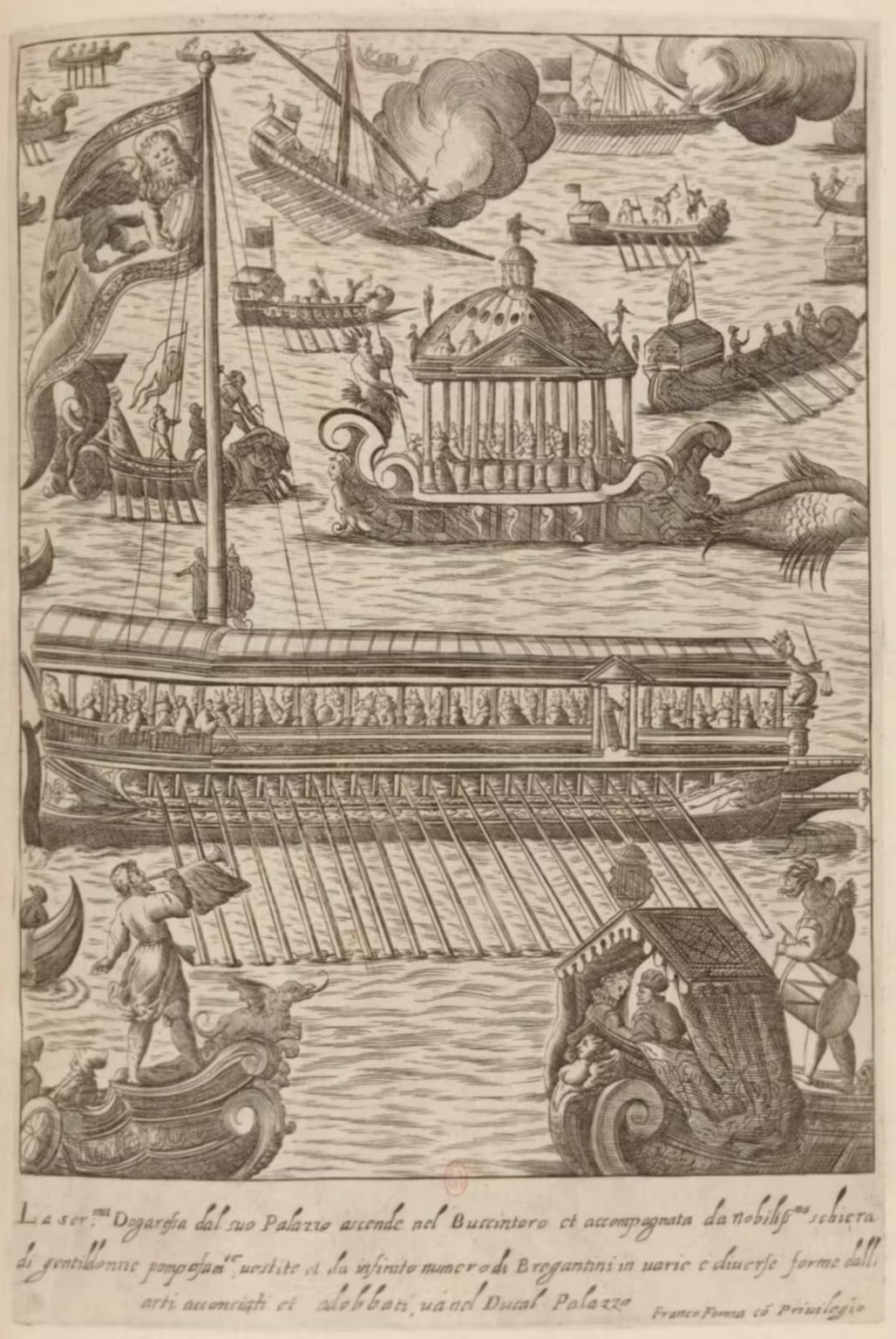
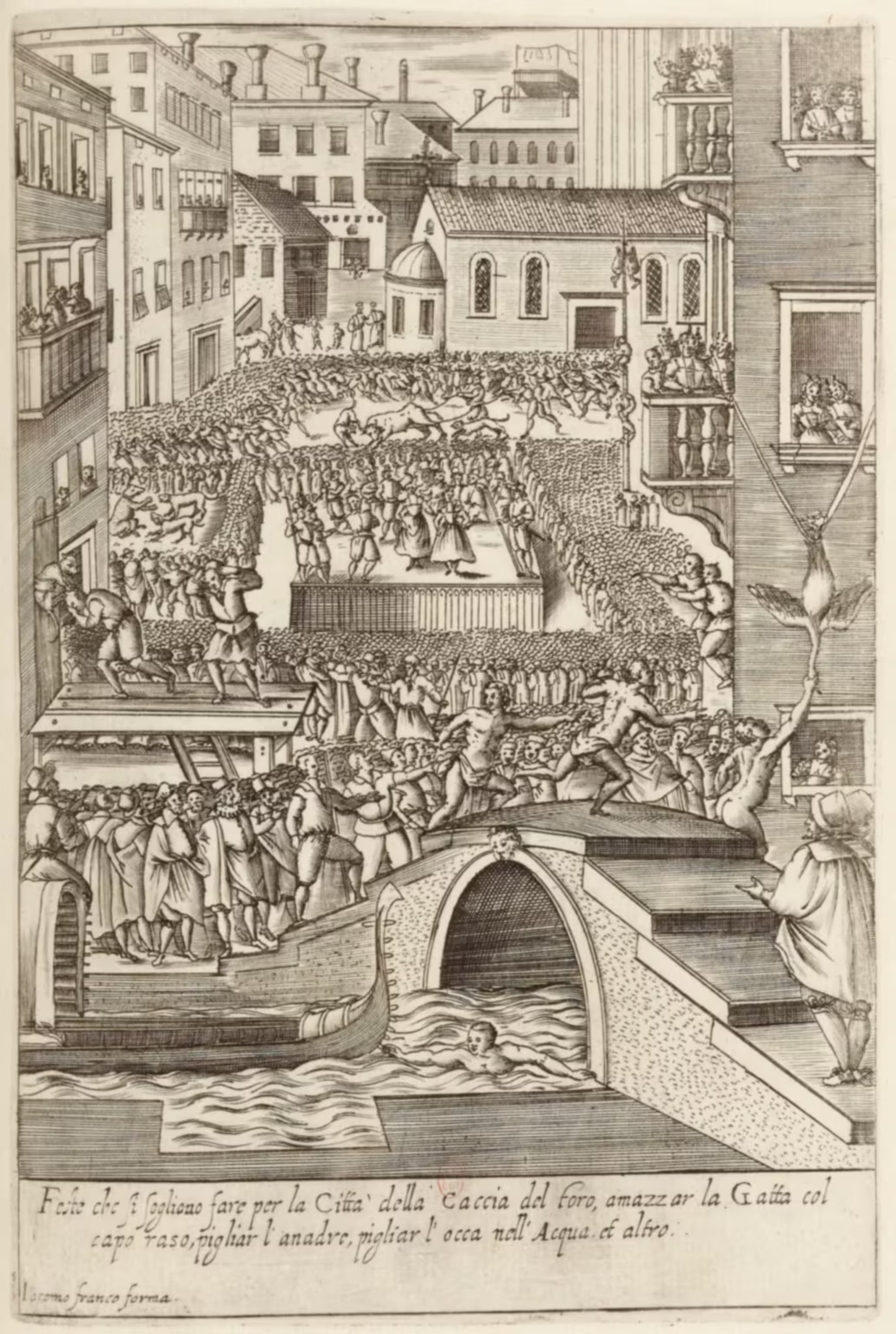
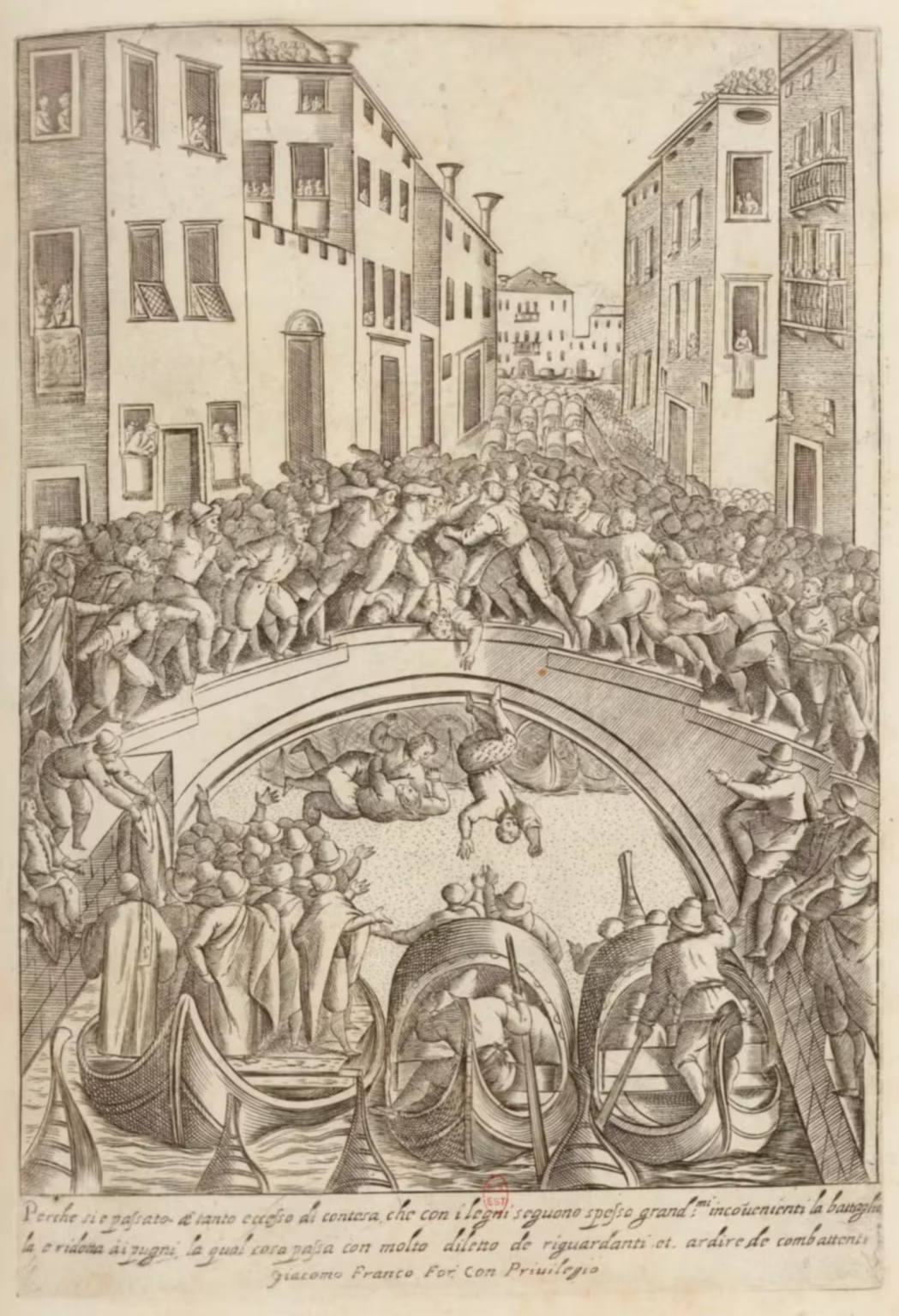
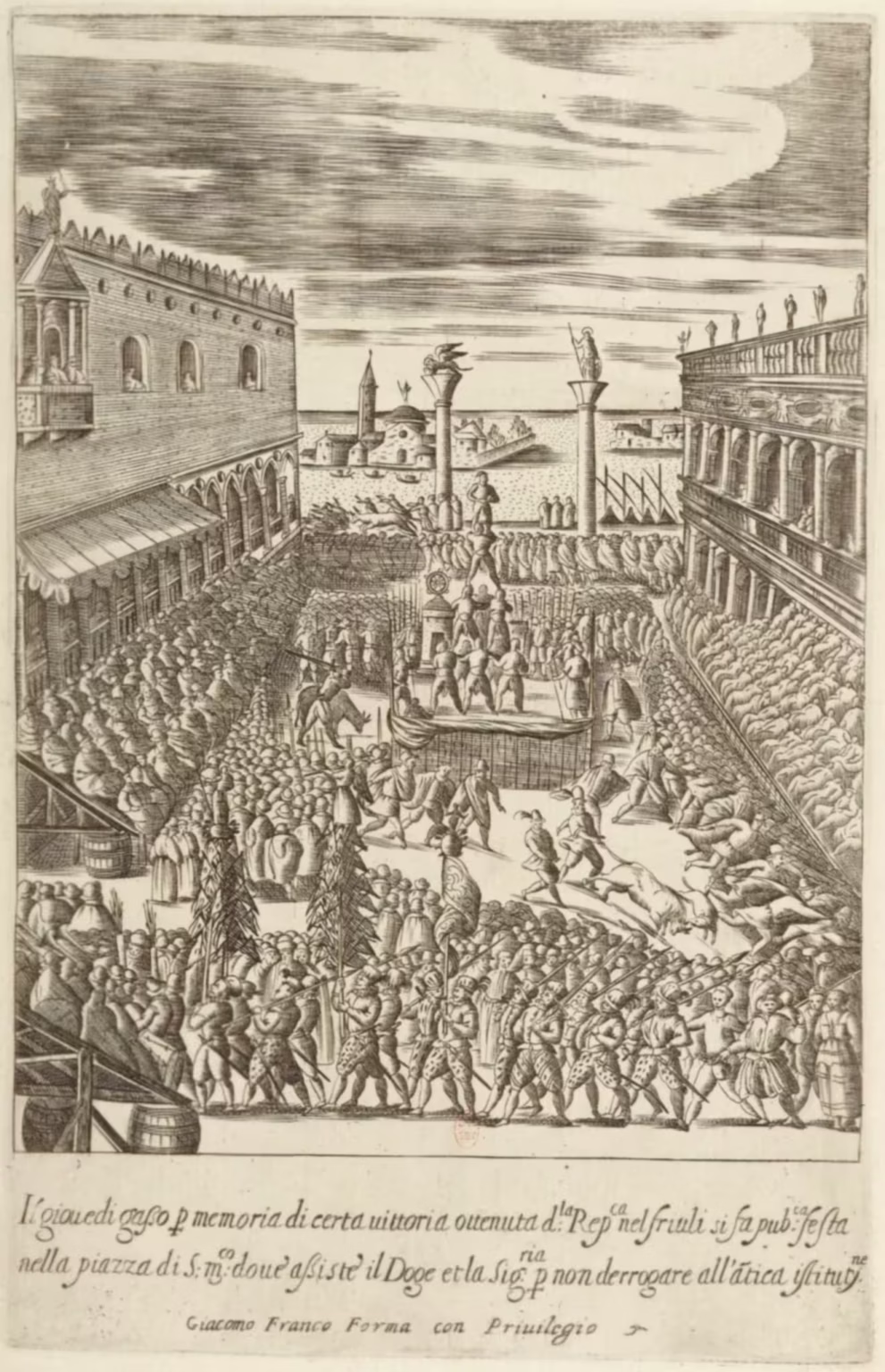
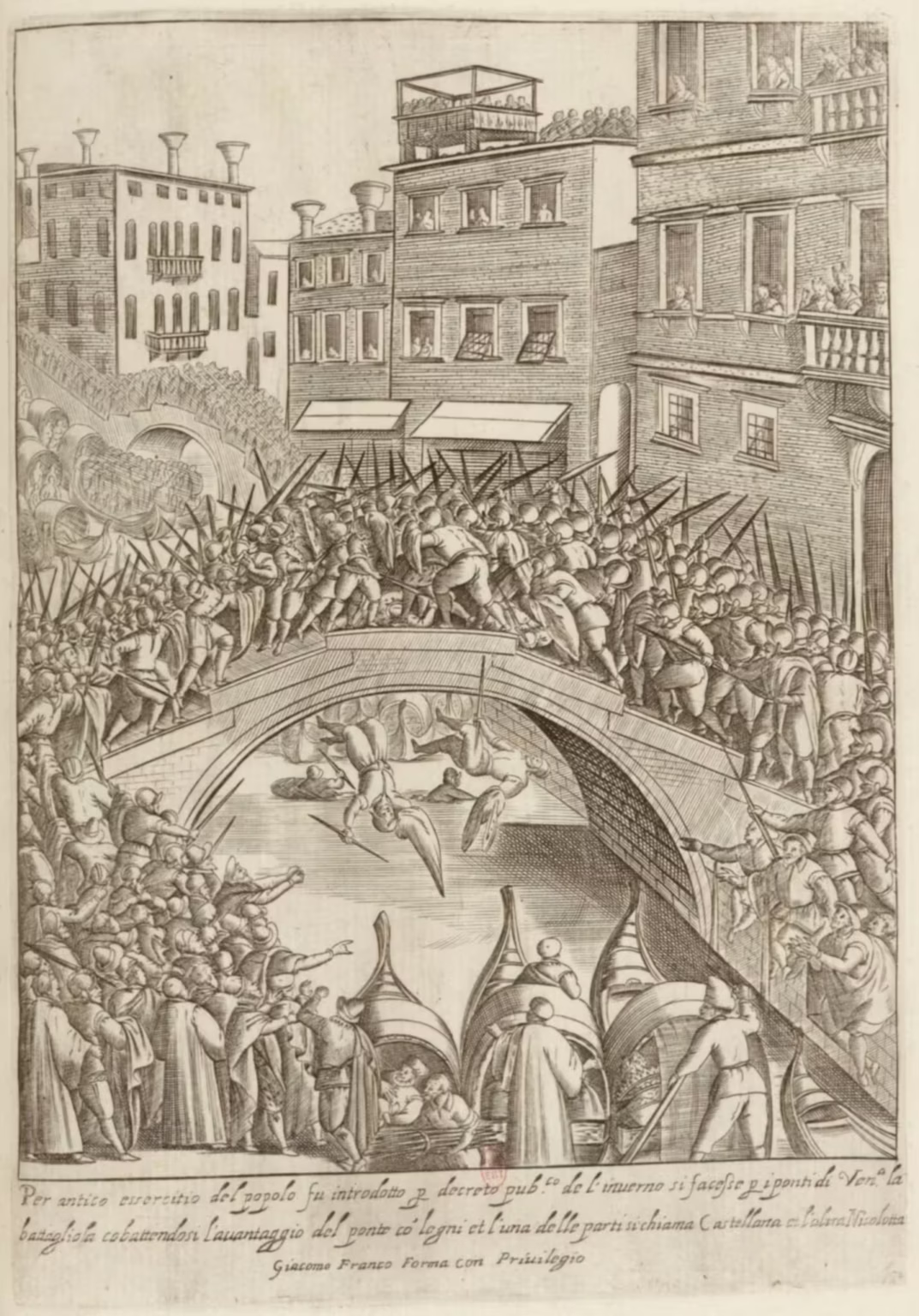
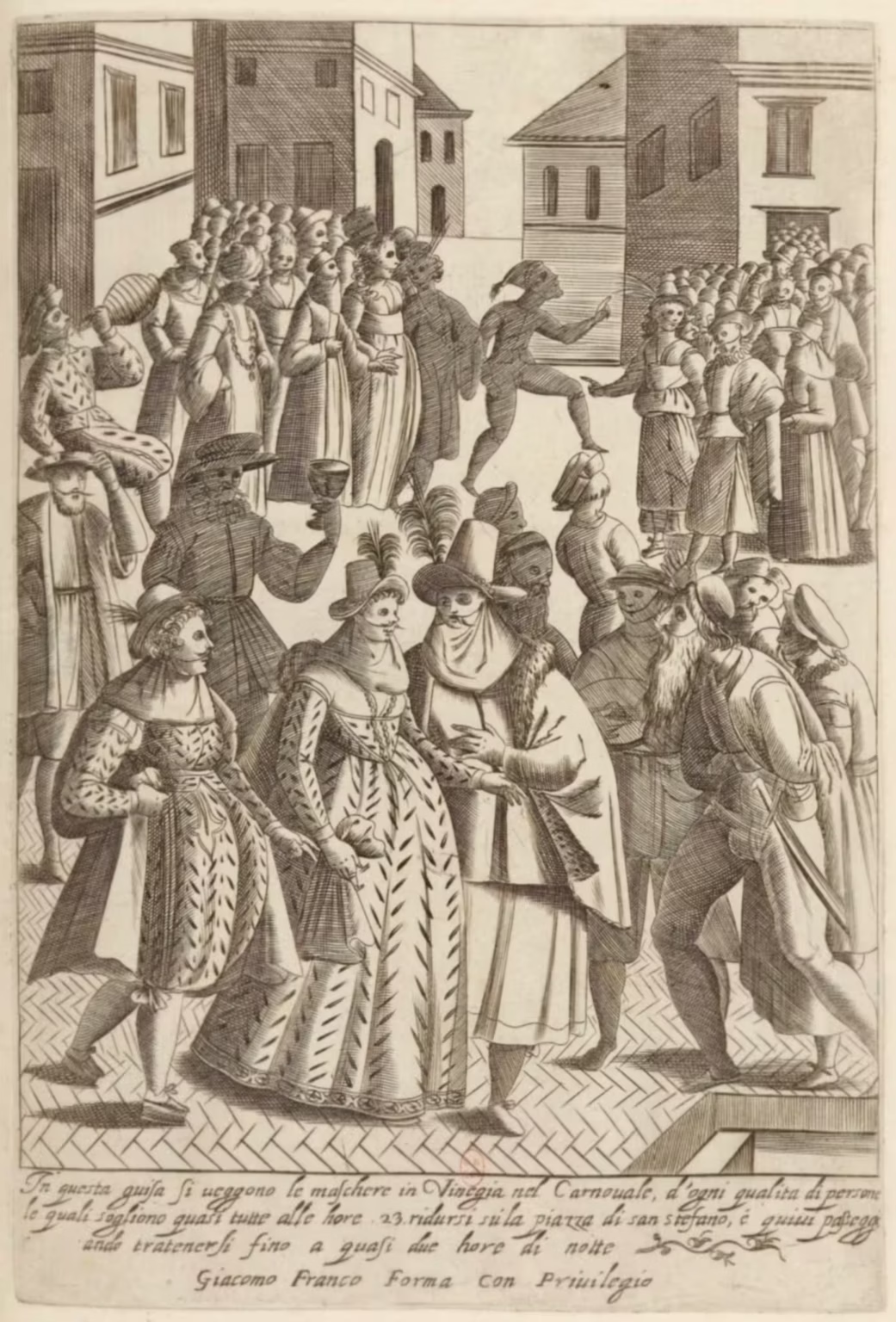
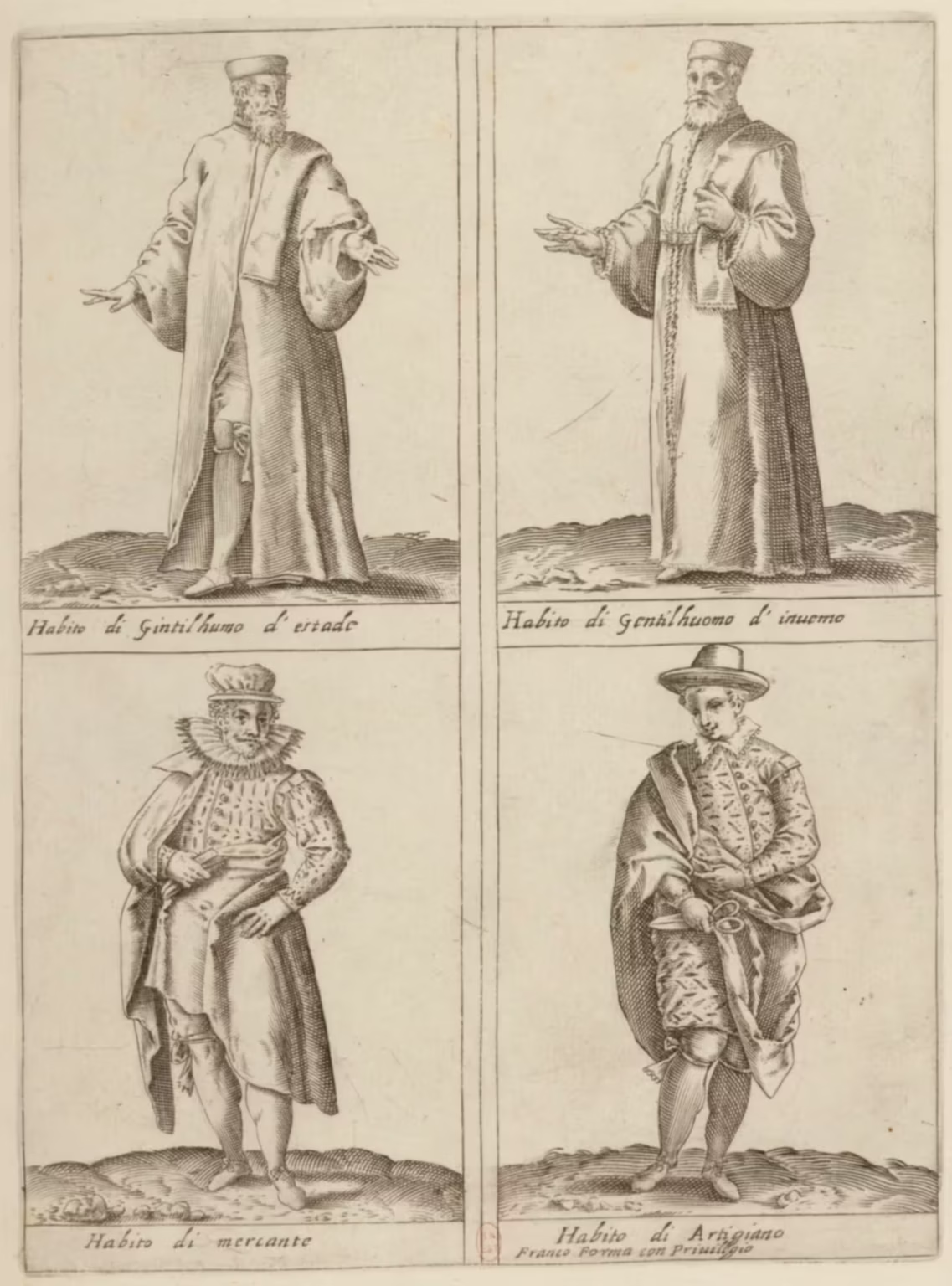
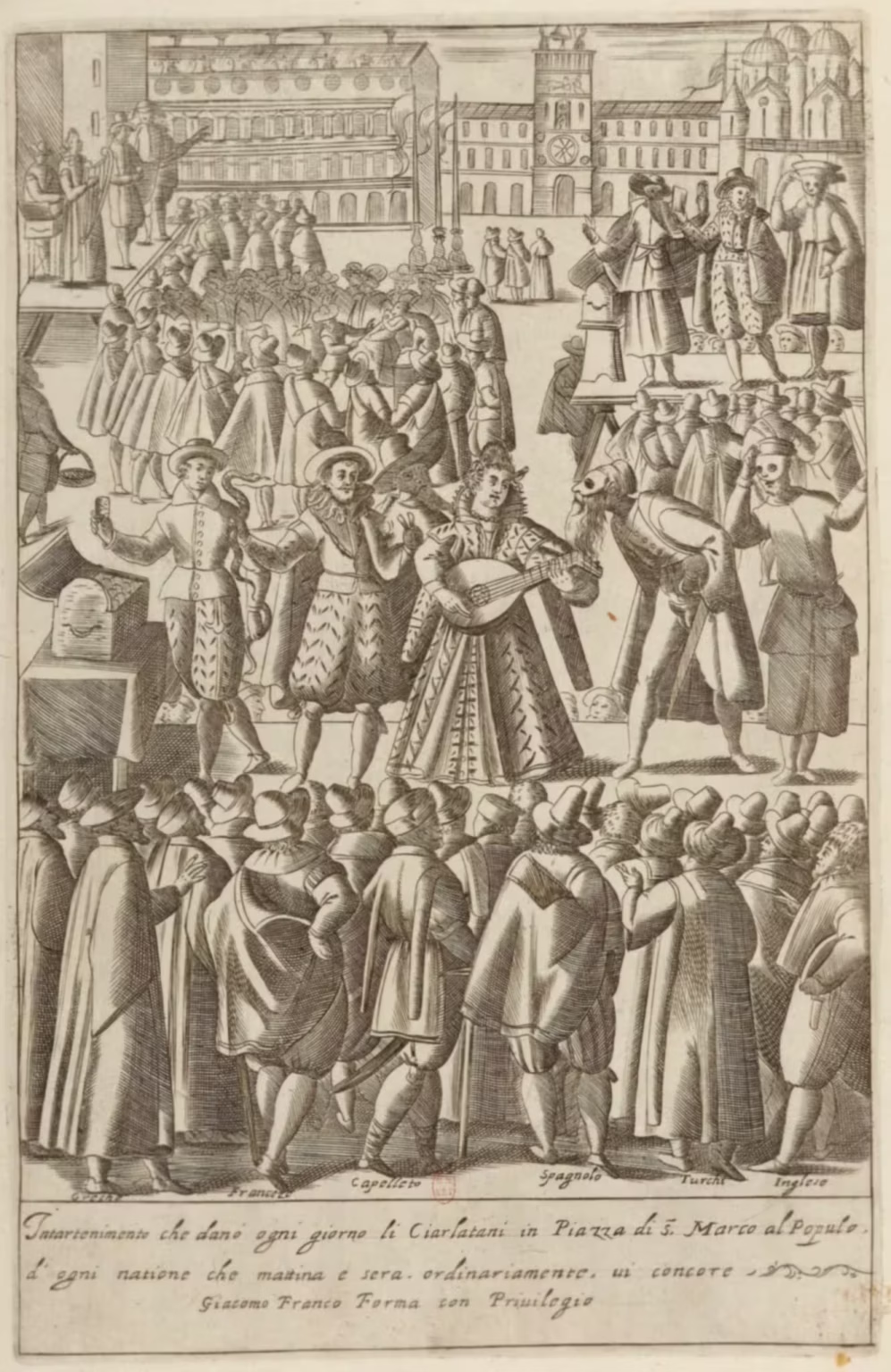
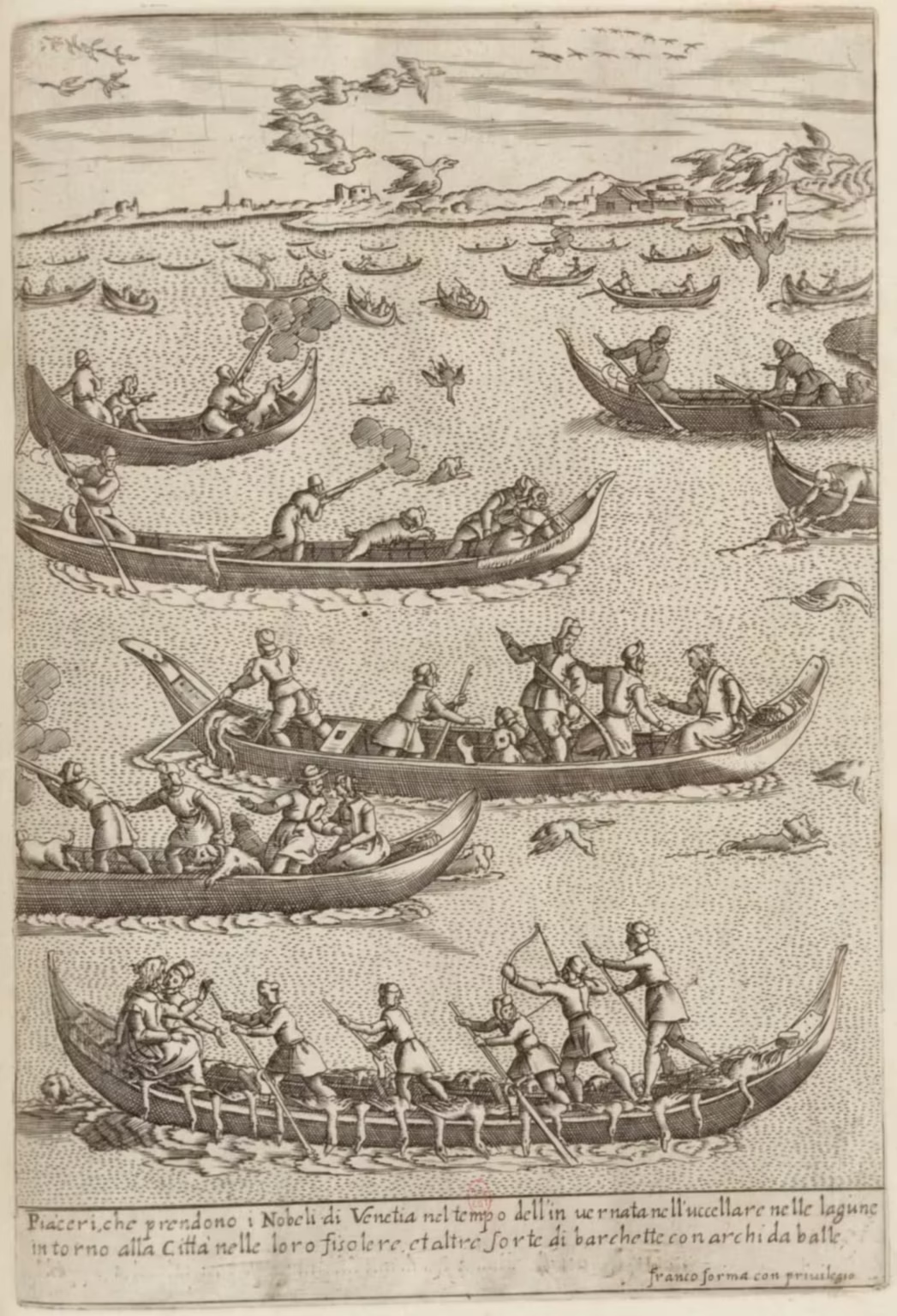
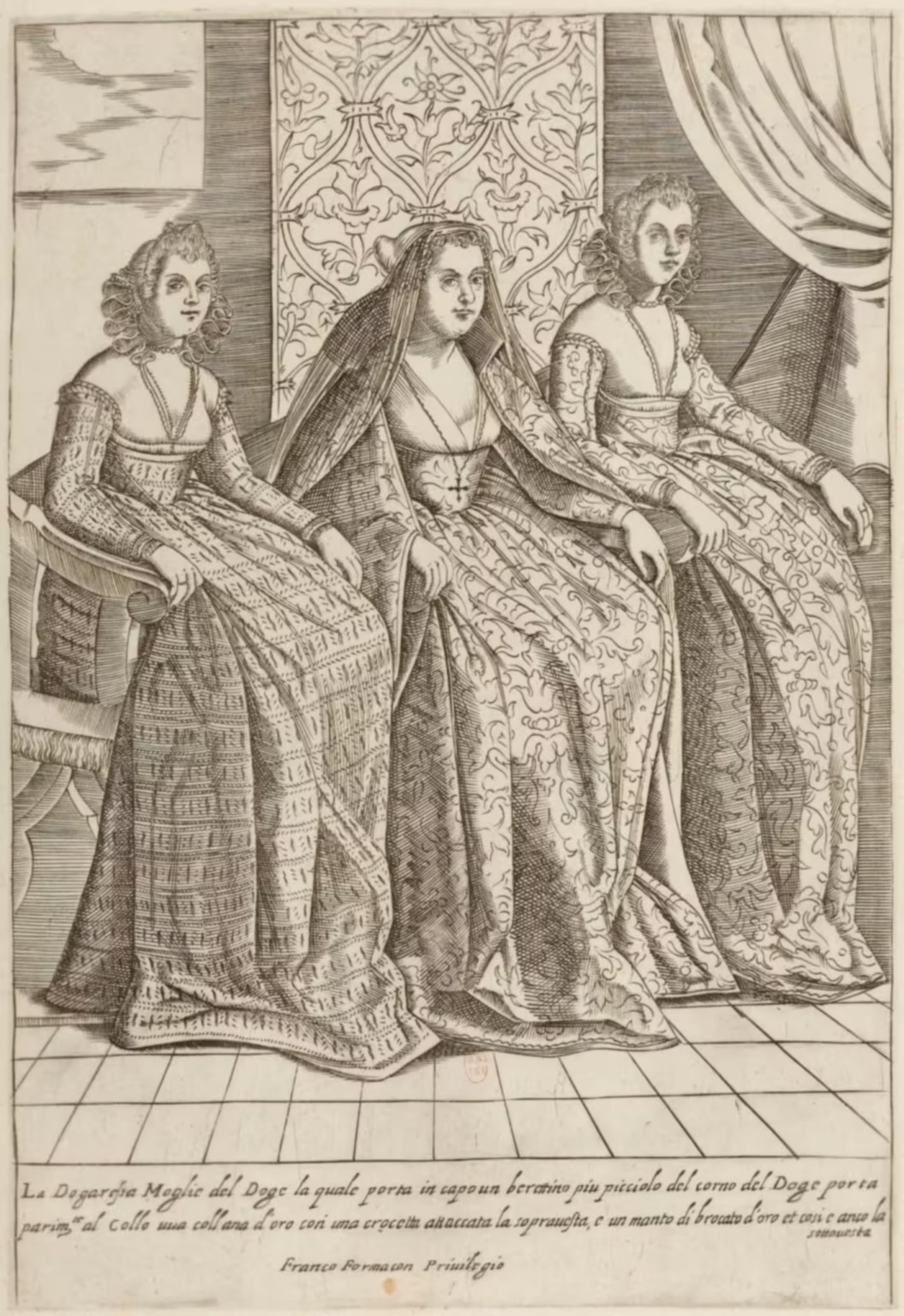
The Internet Archive has an almost, but not quite, complete version.
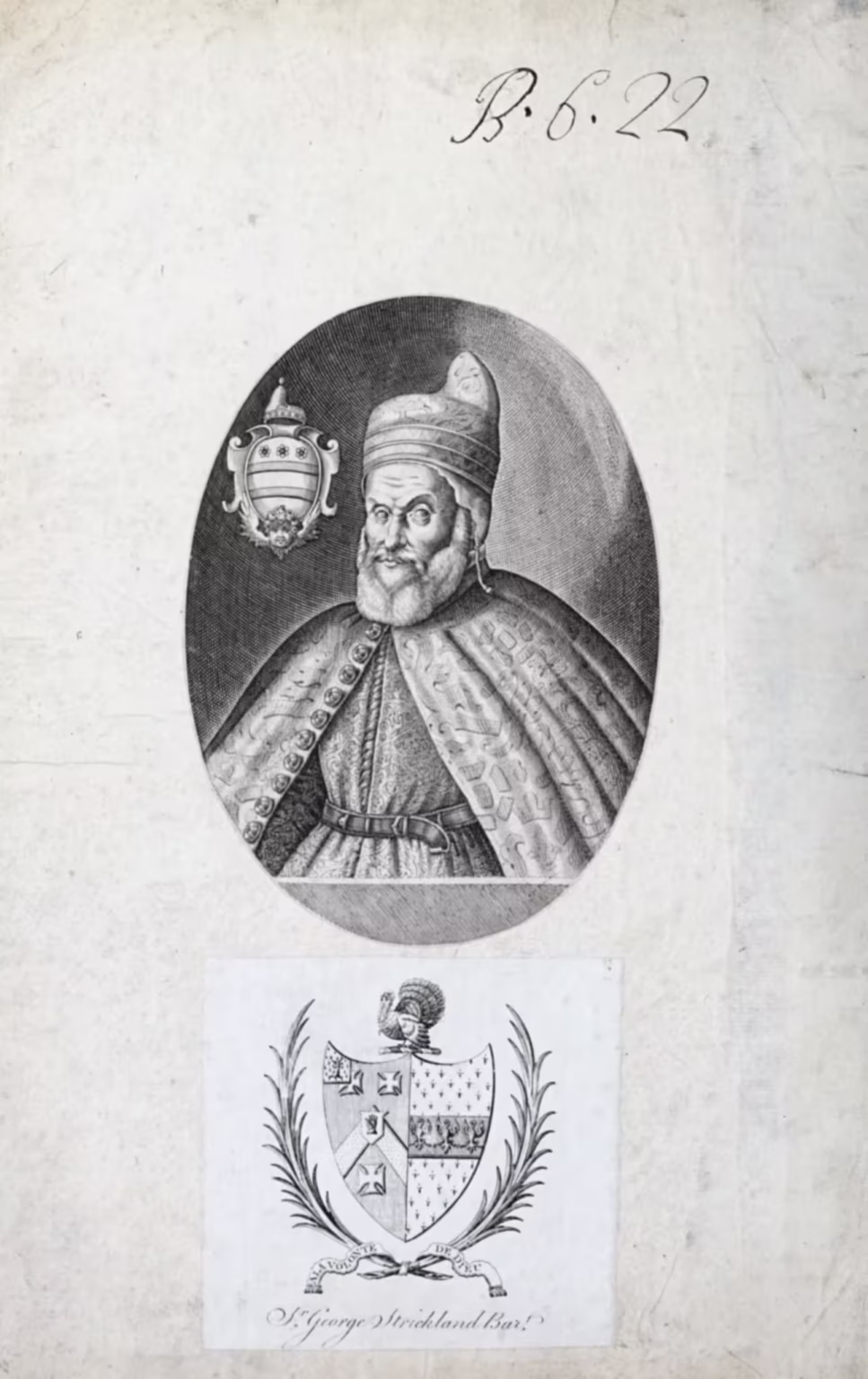
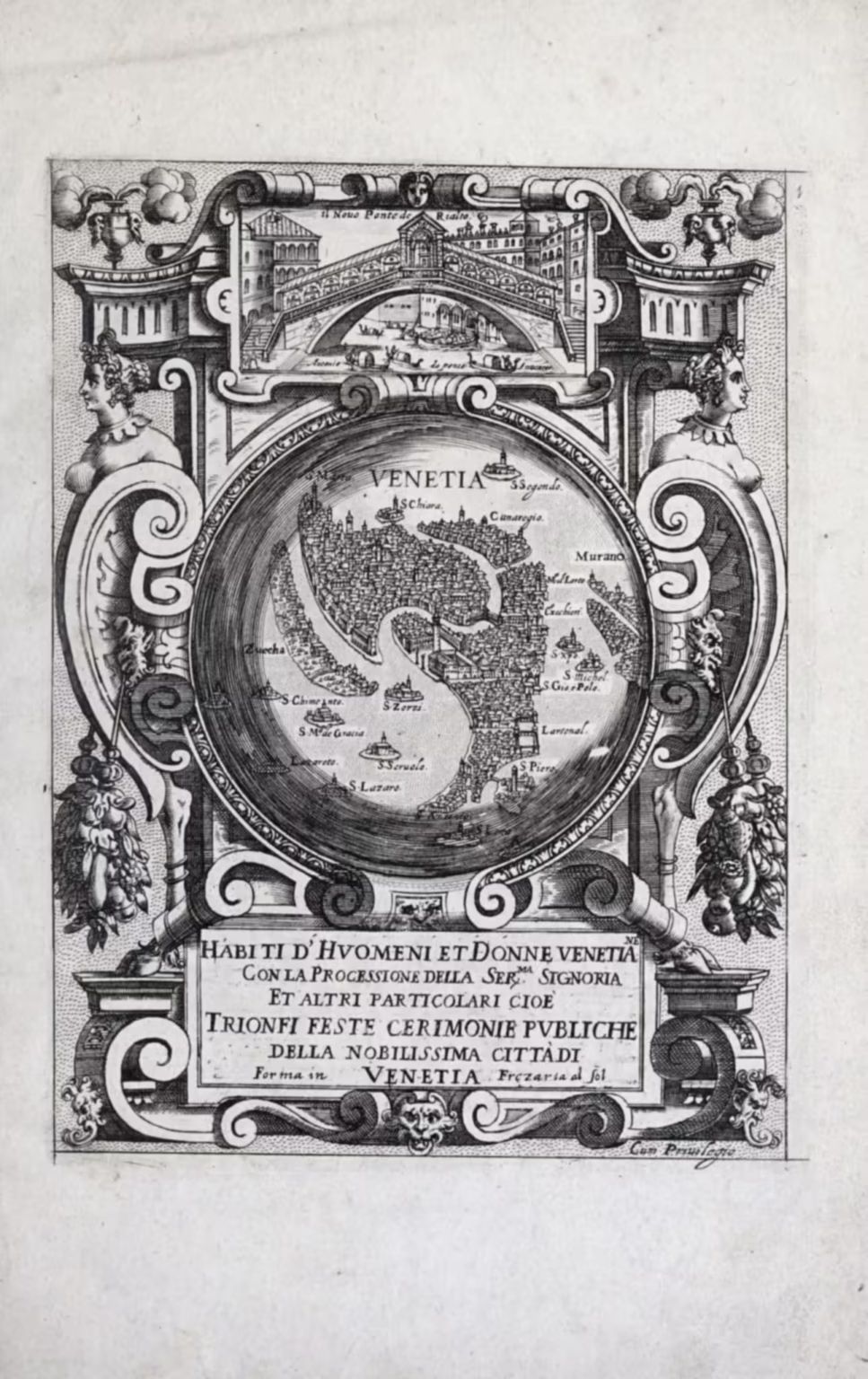
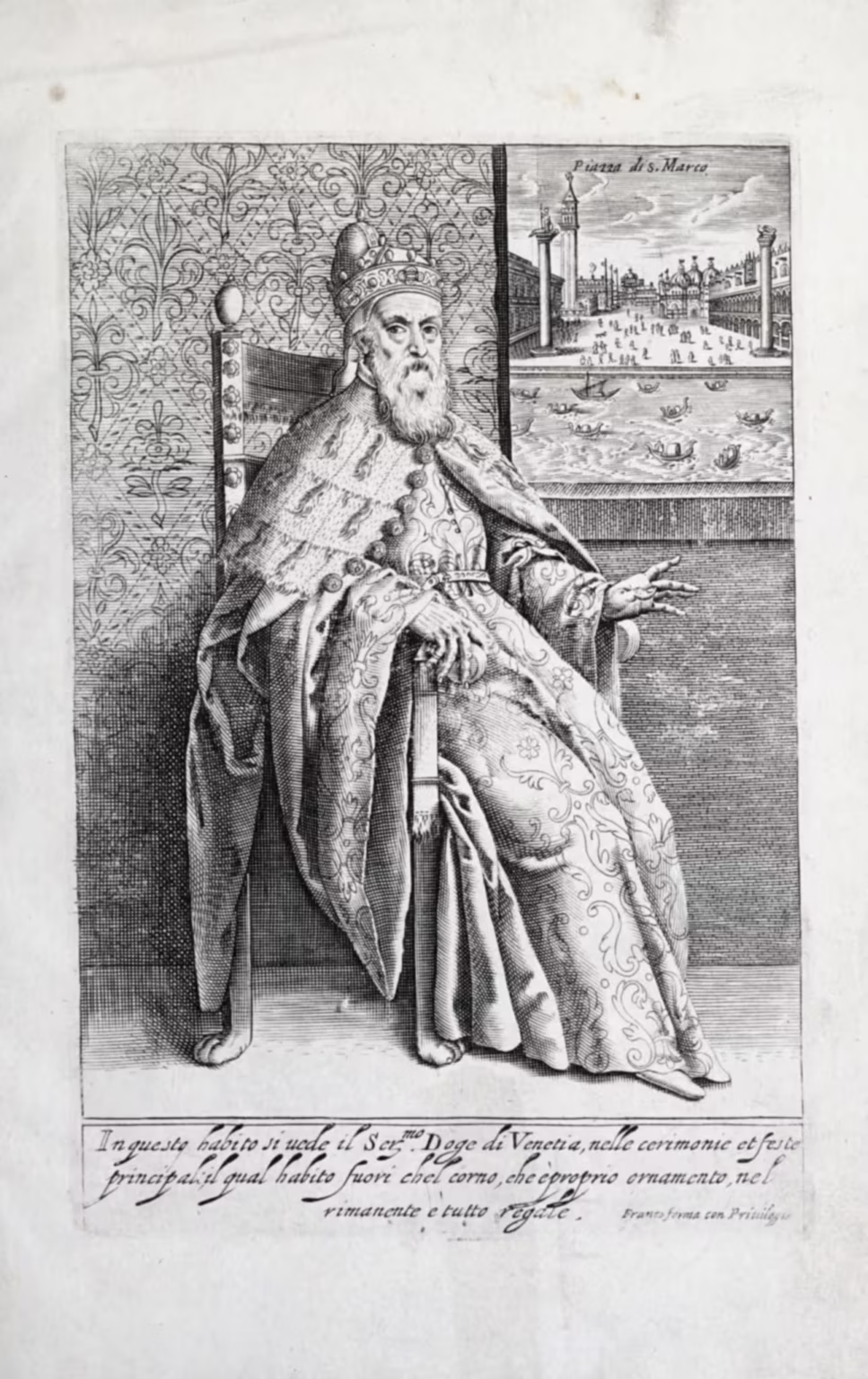
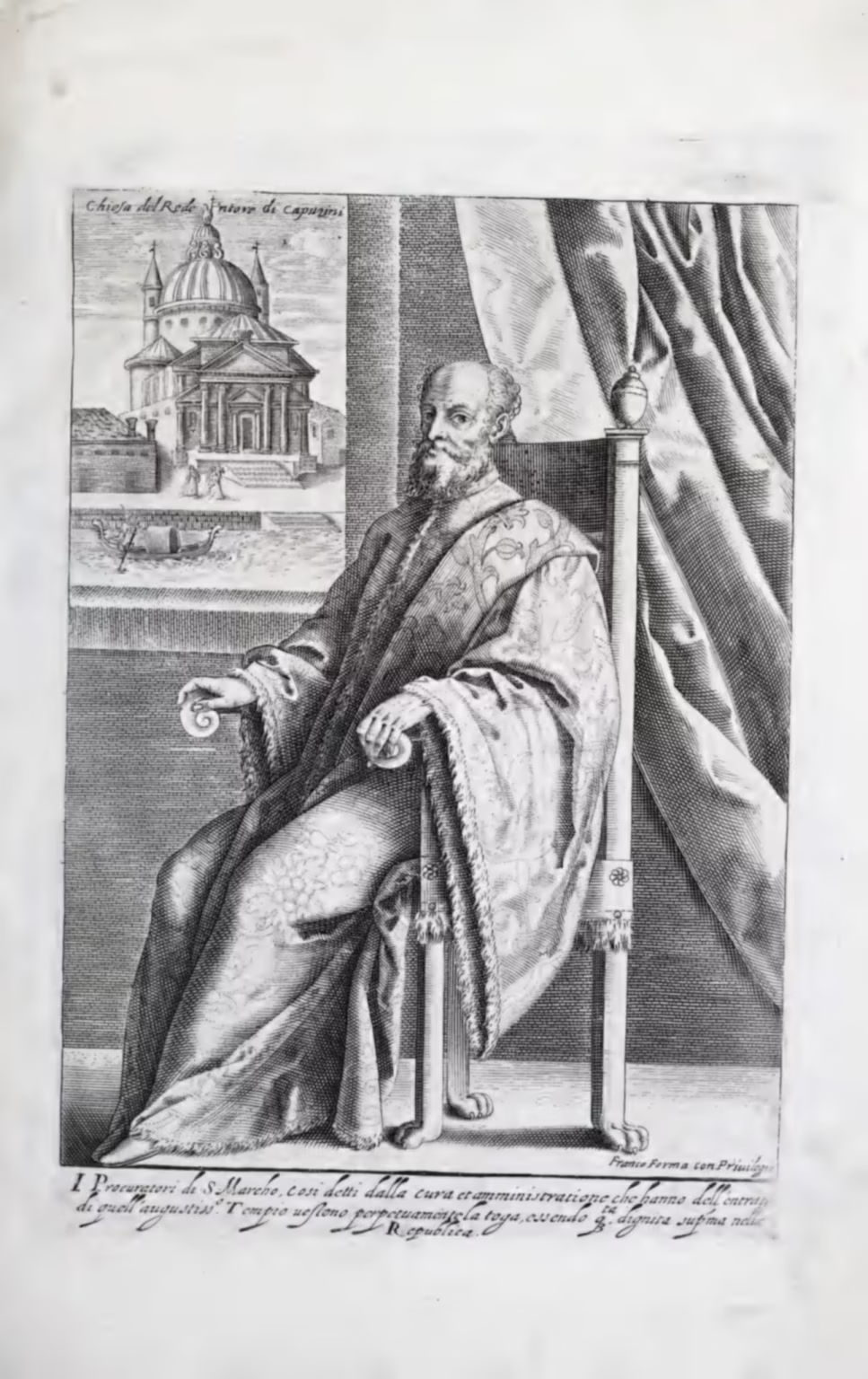
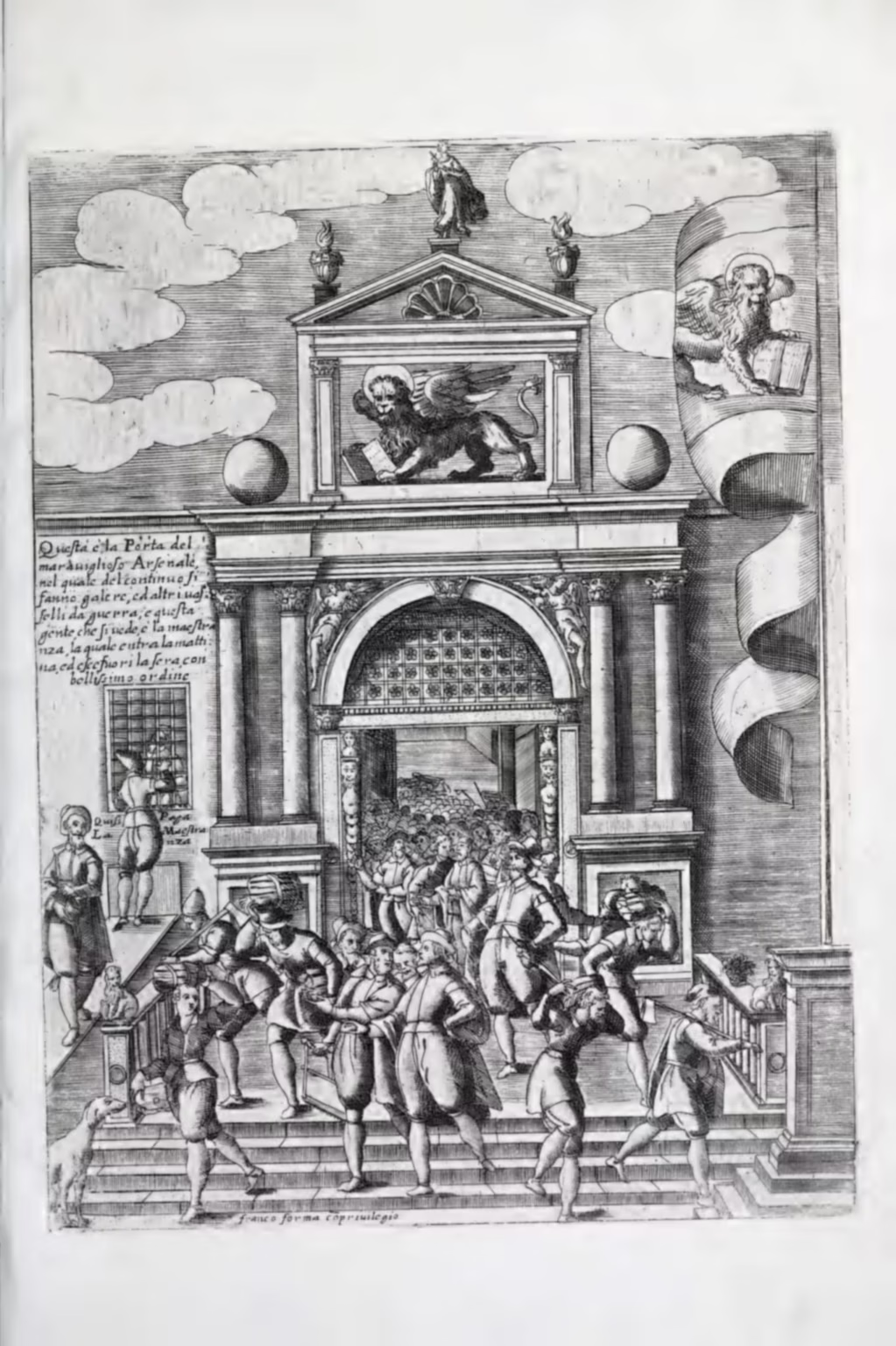
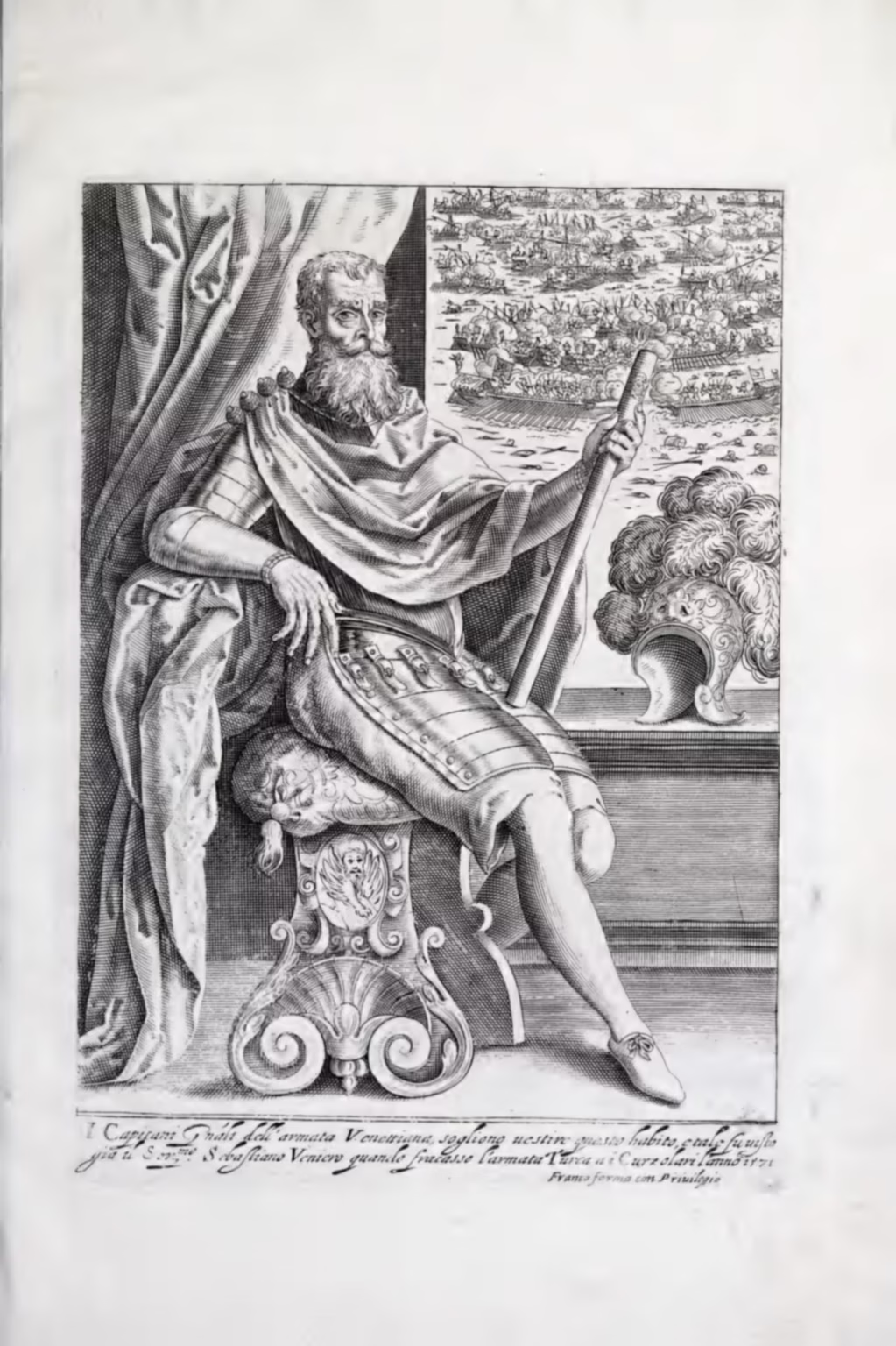
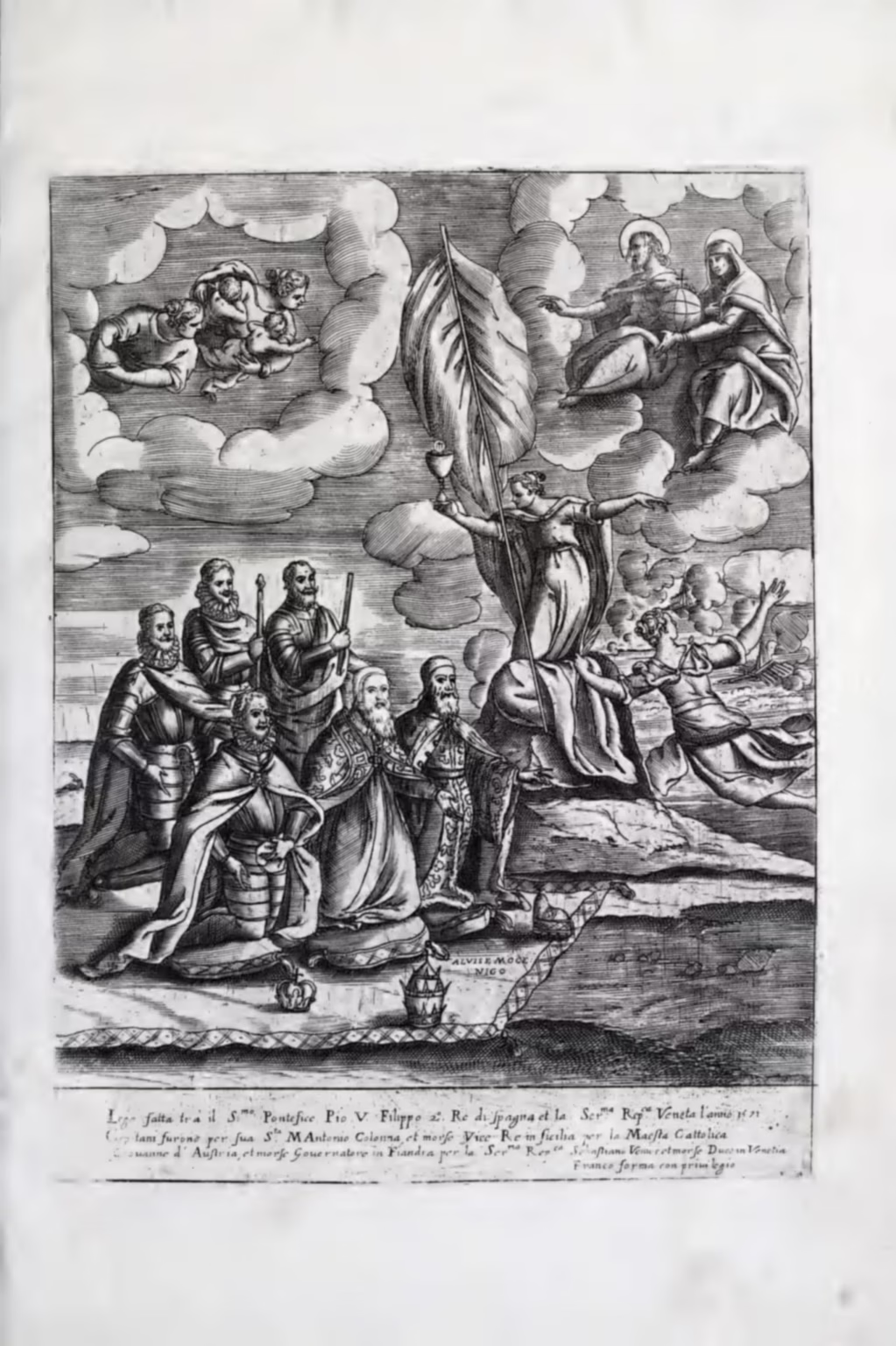
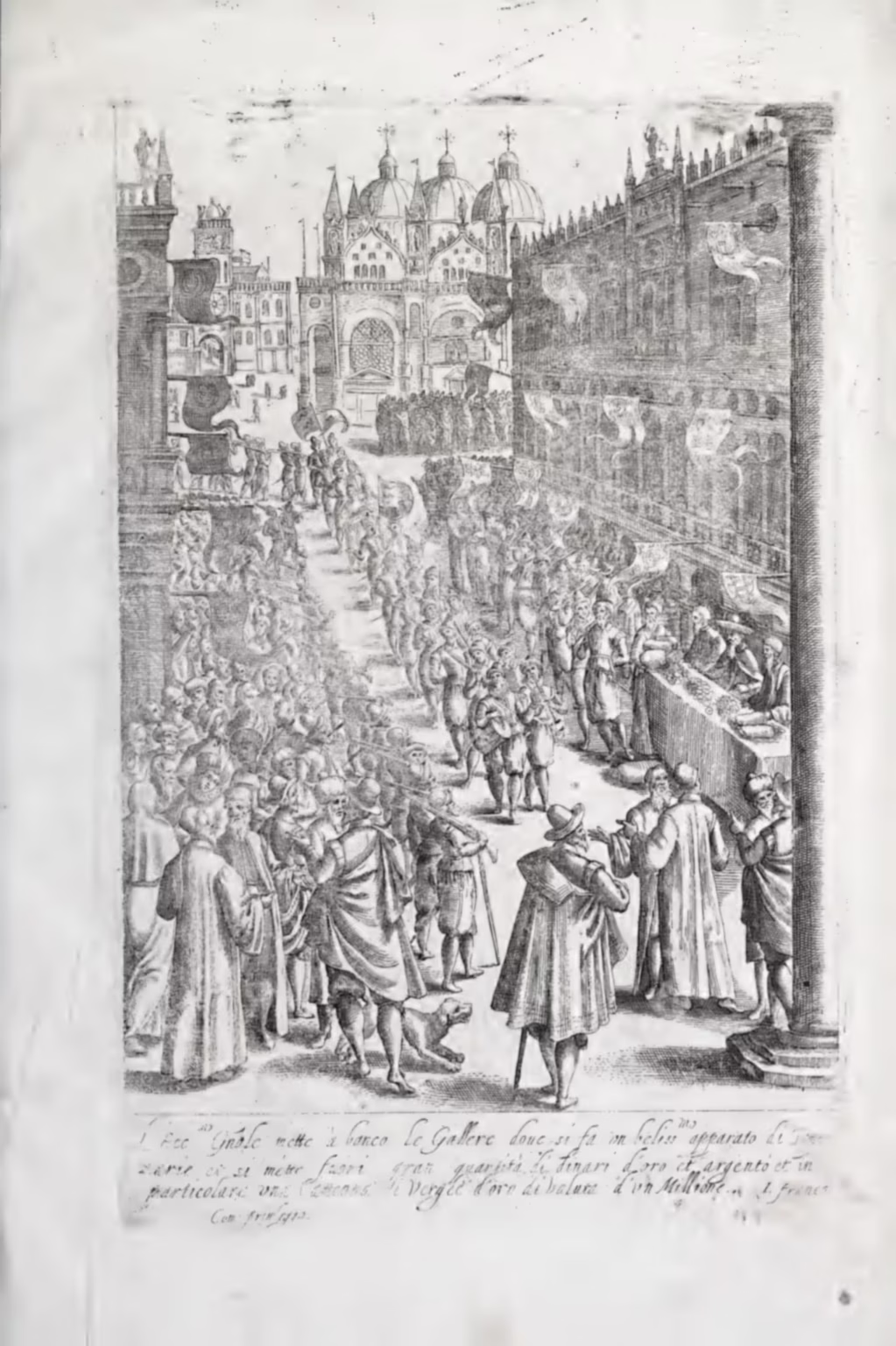
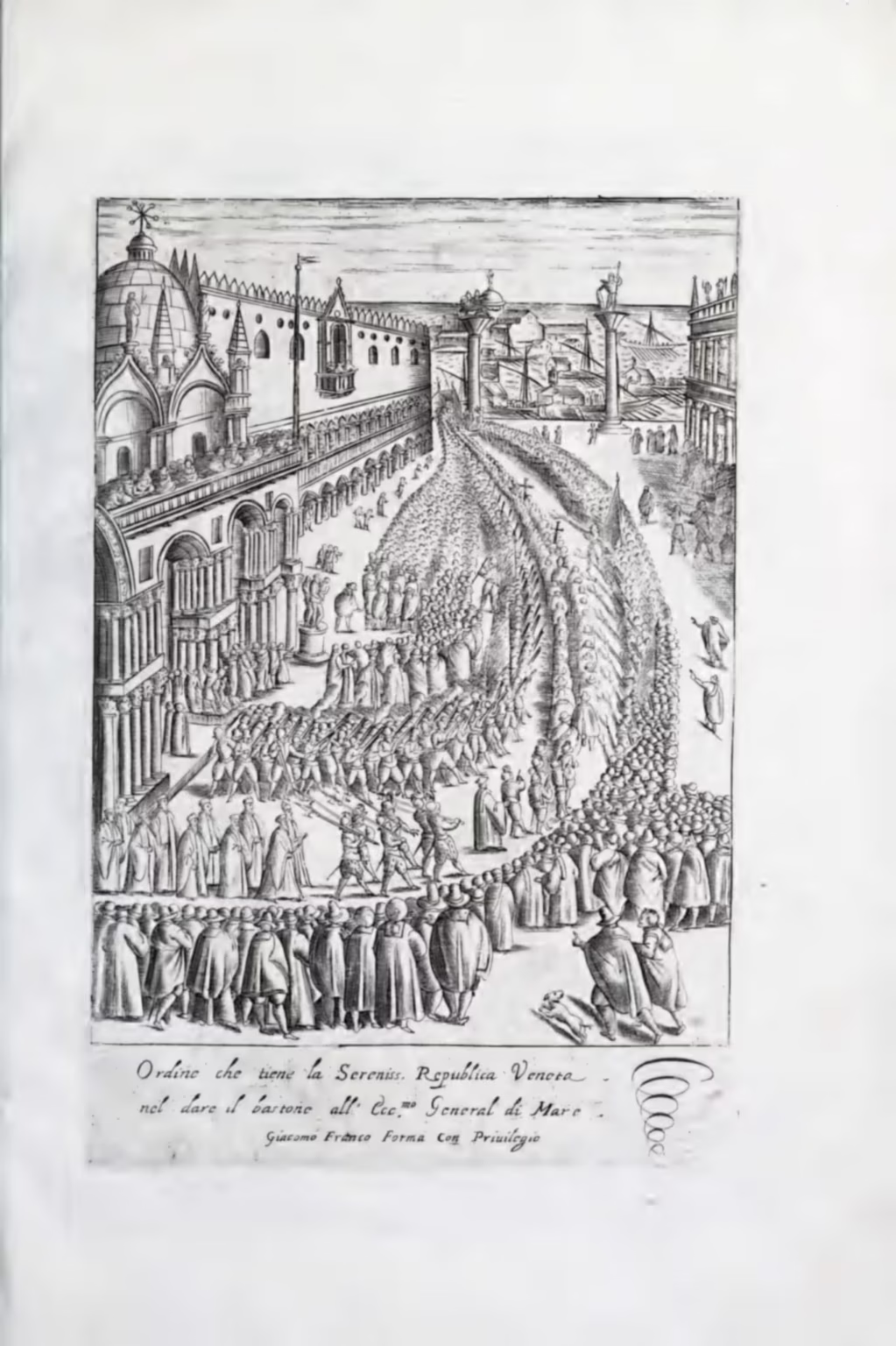
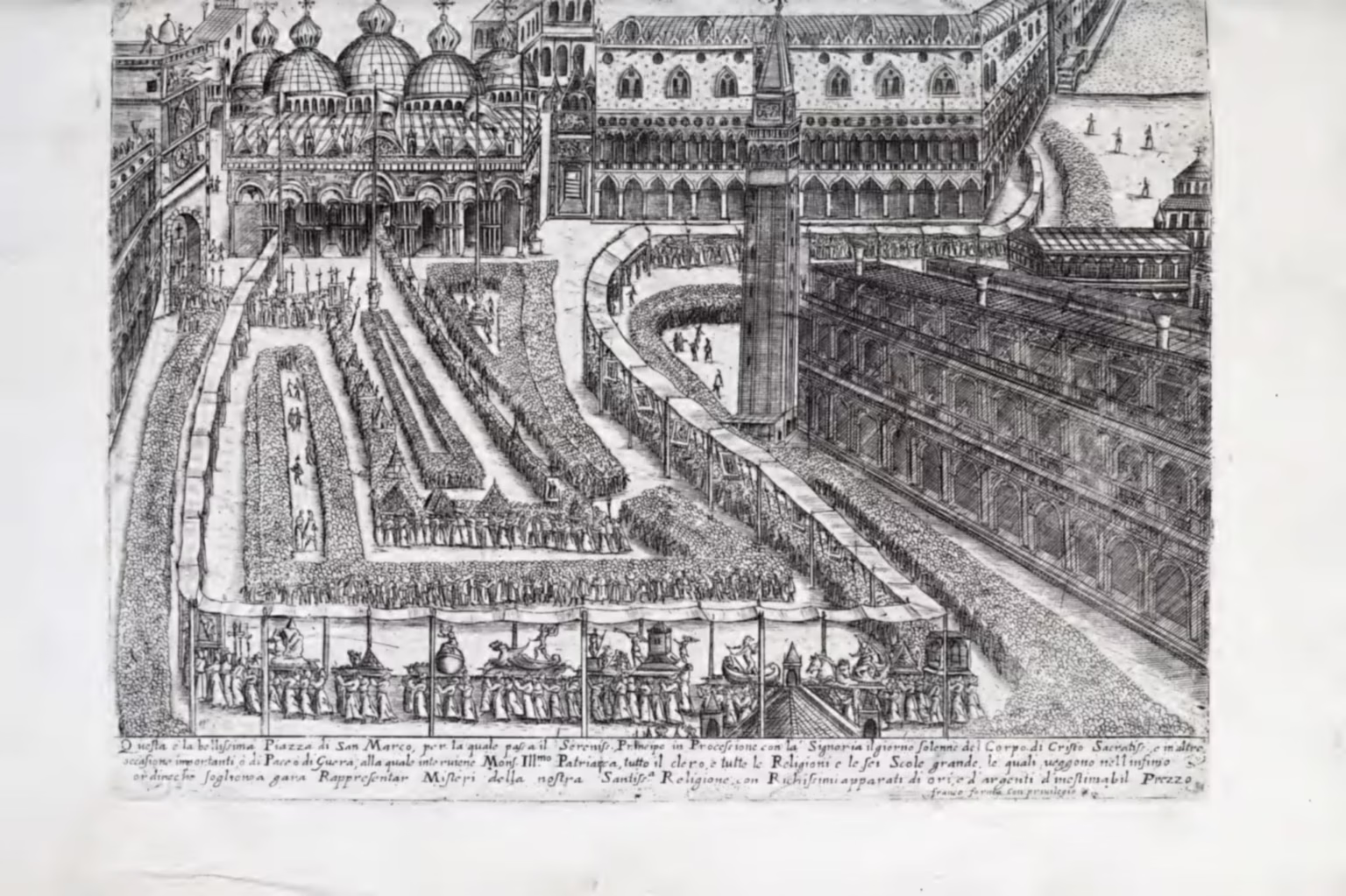
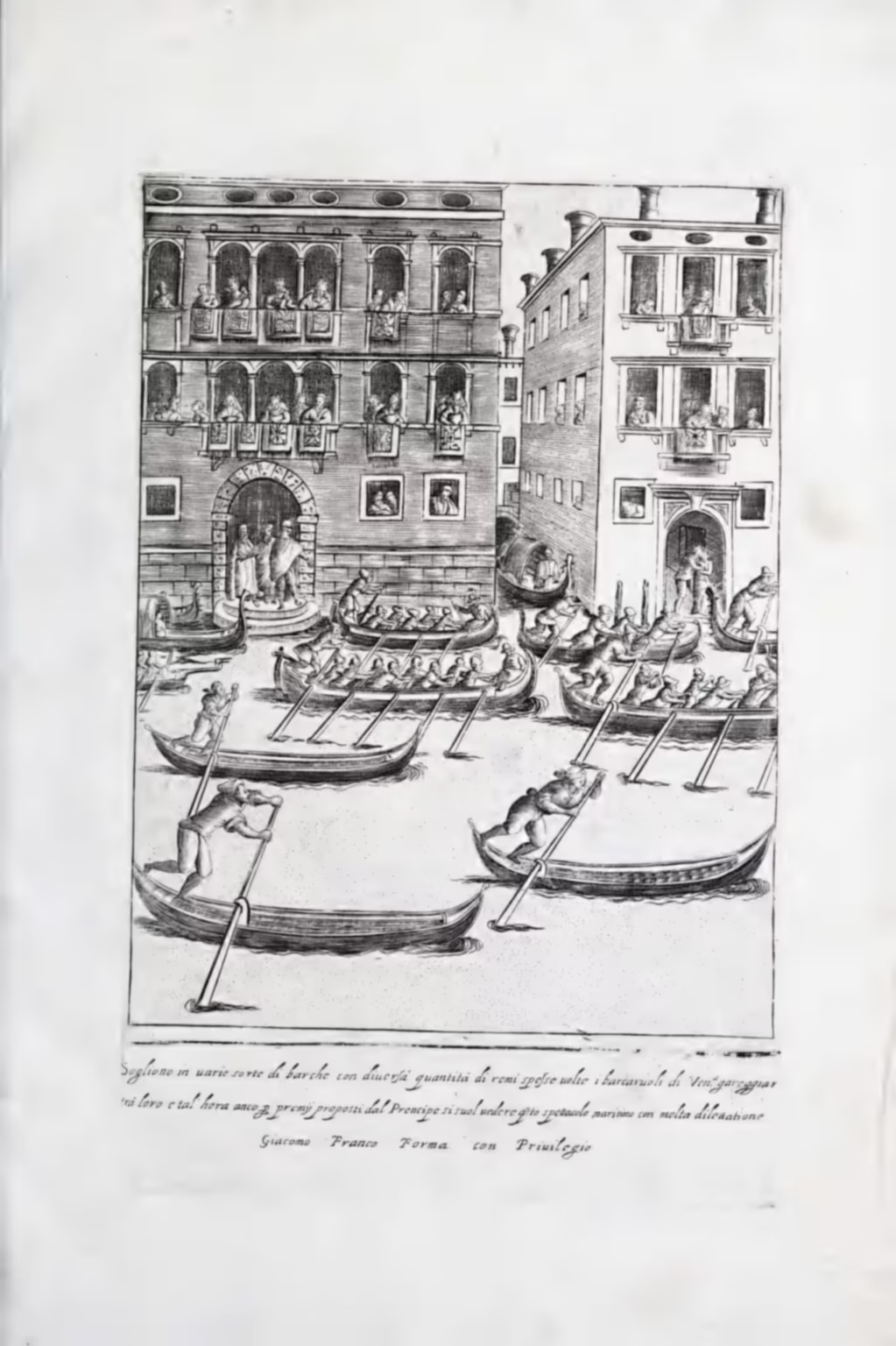
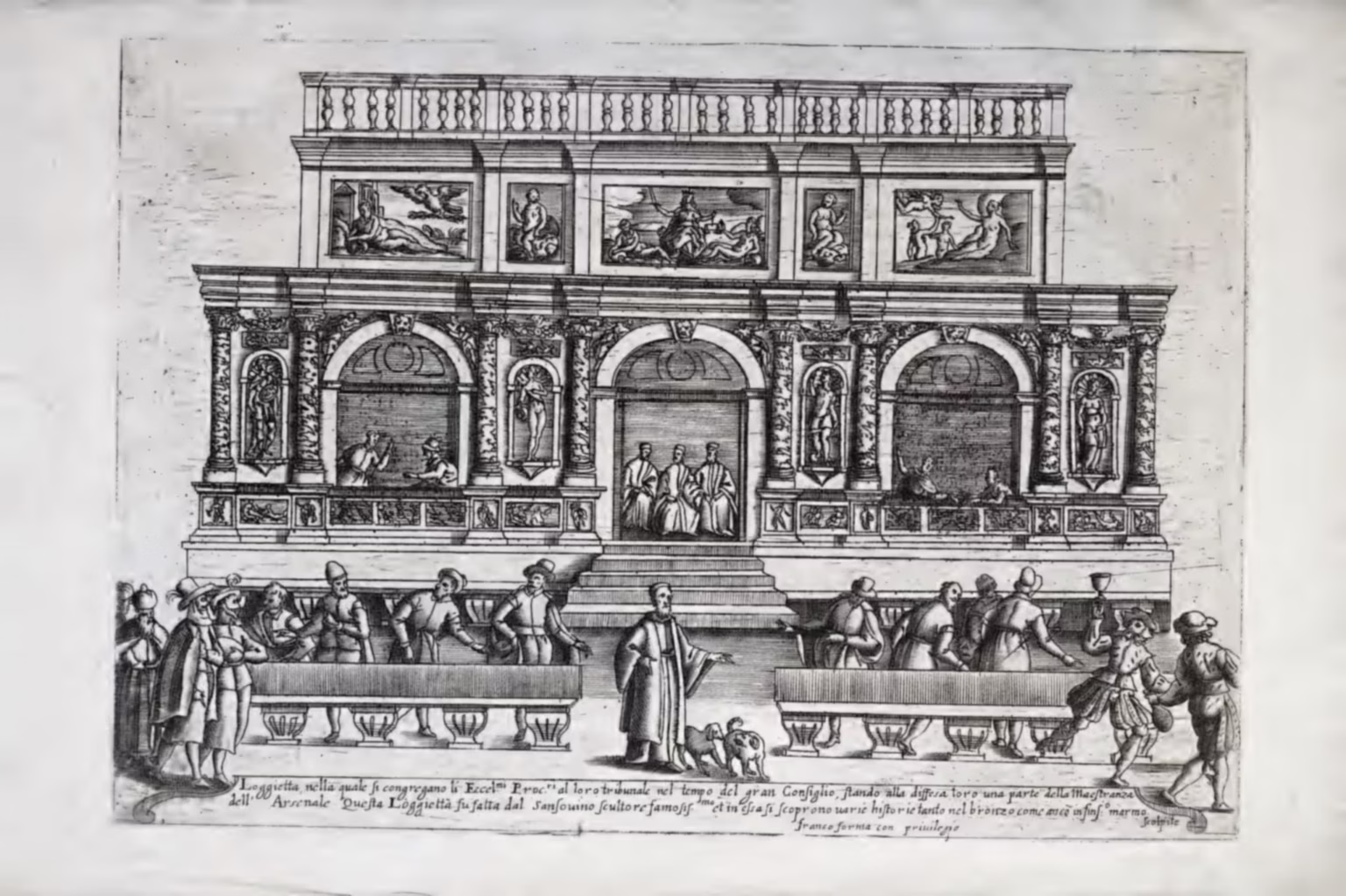
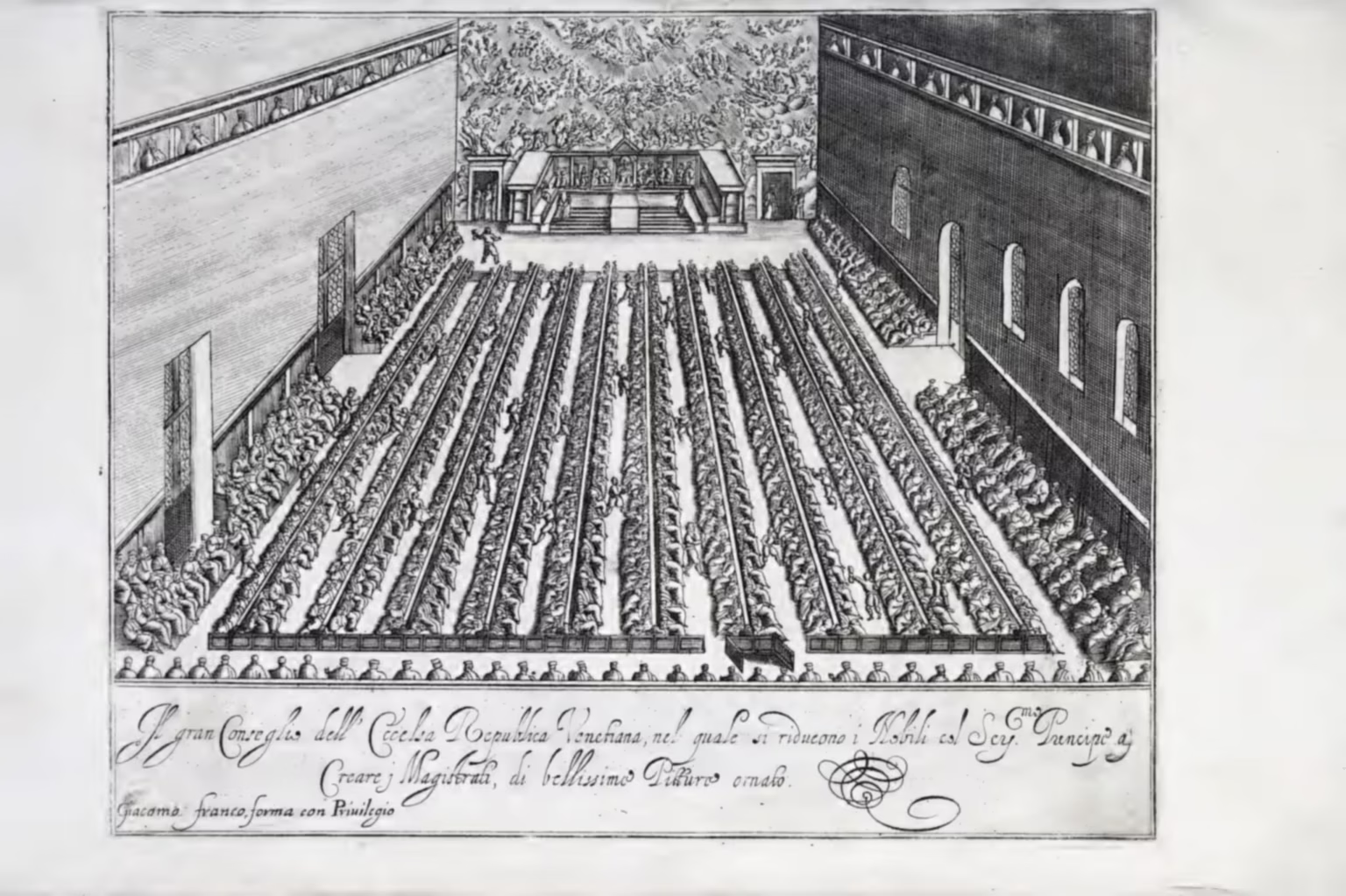
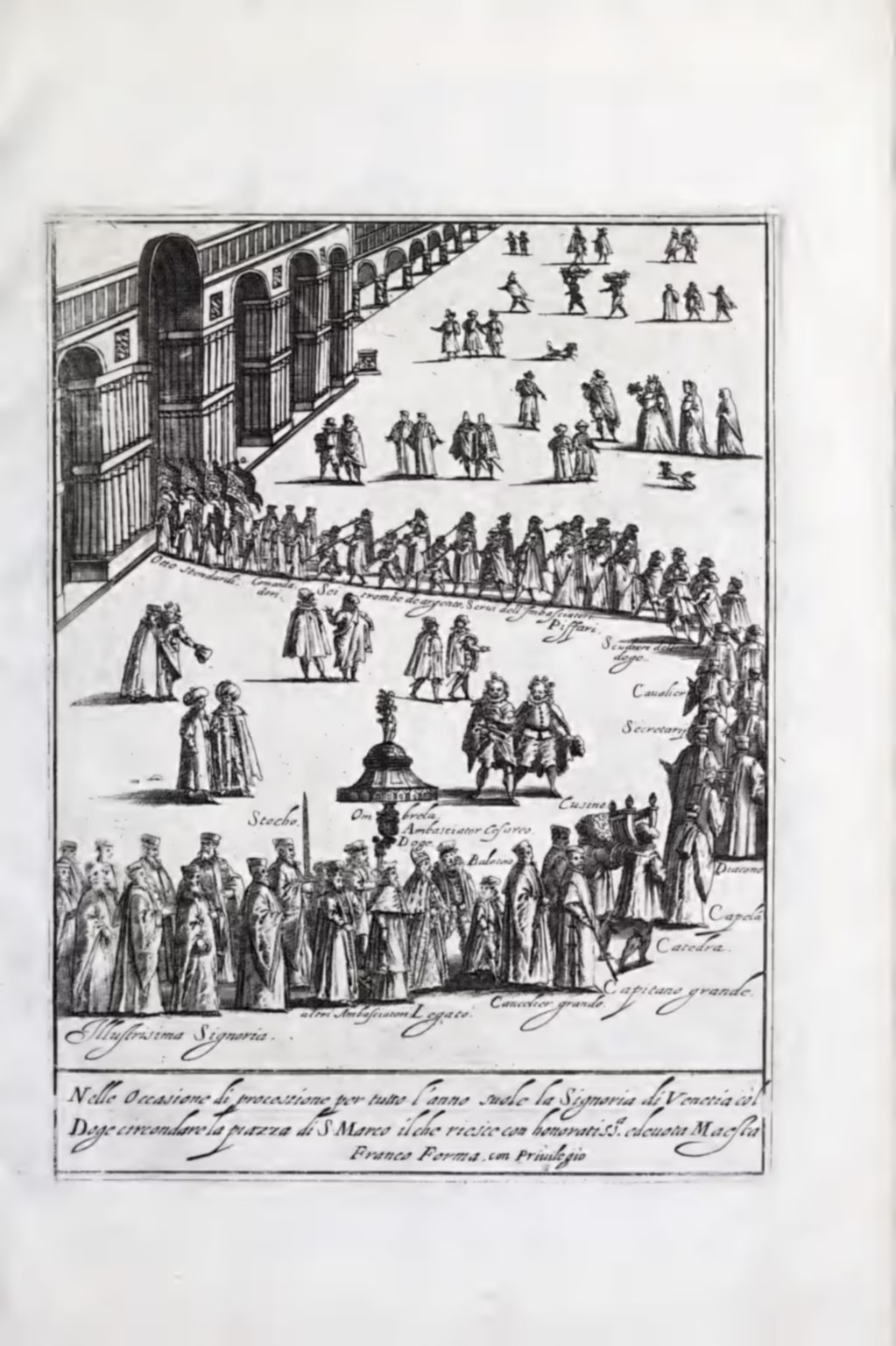
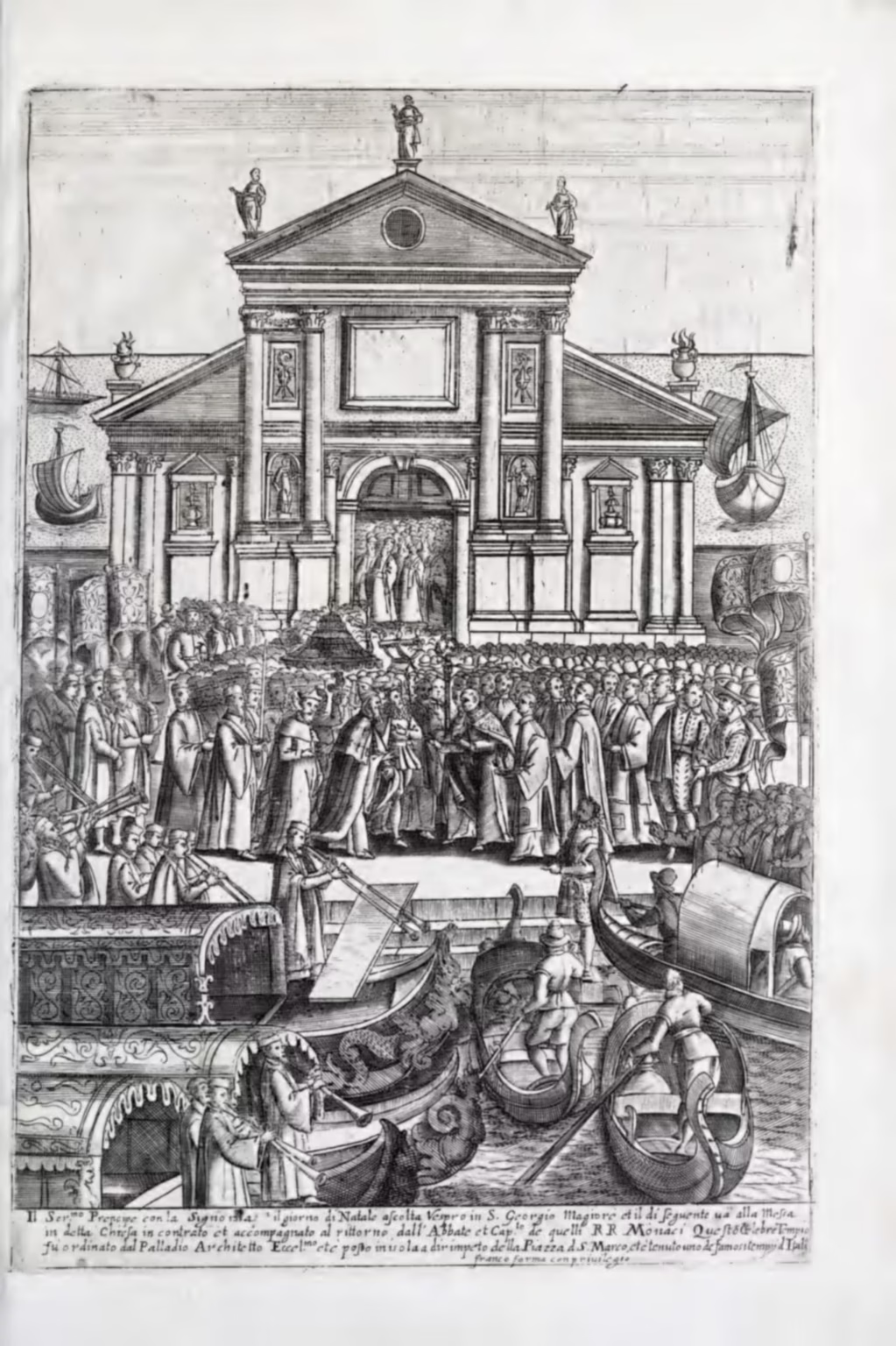
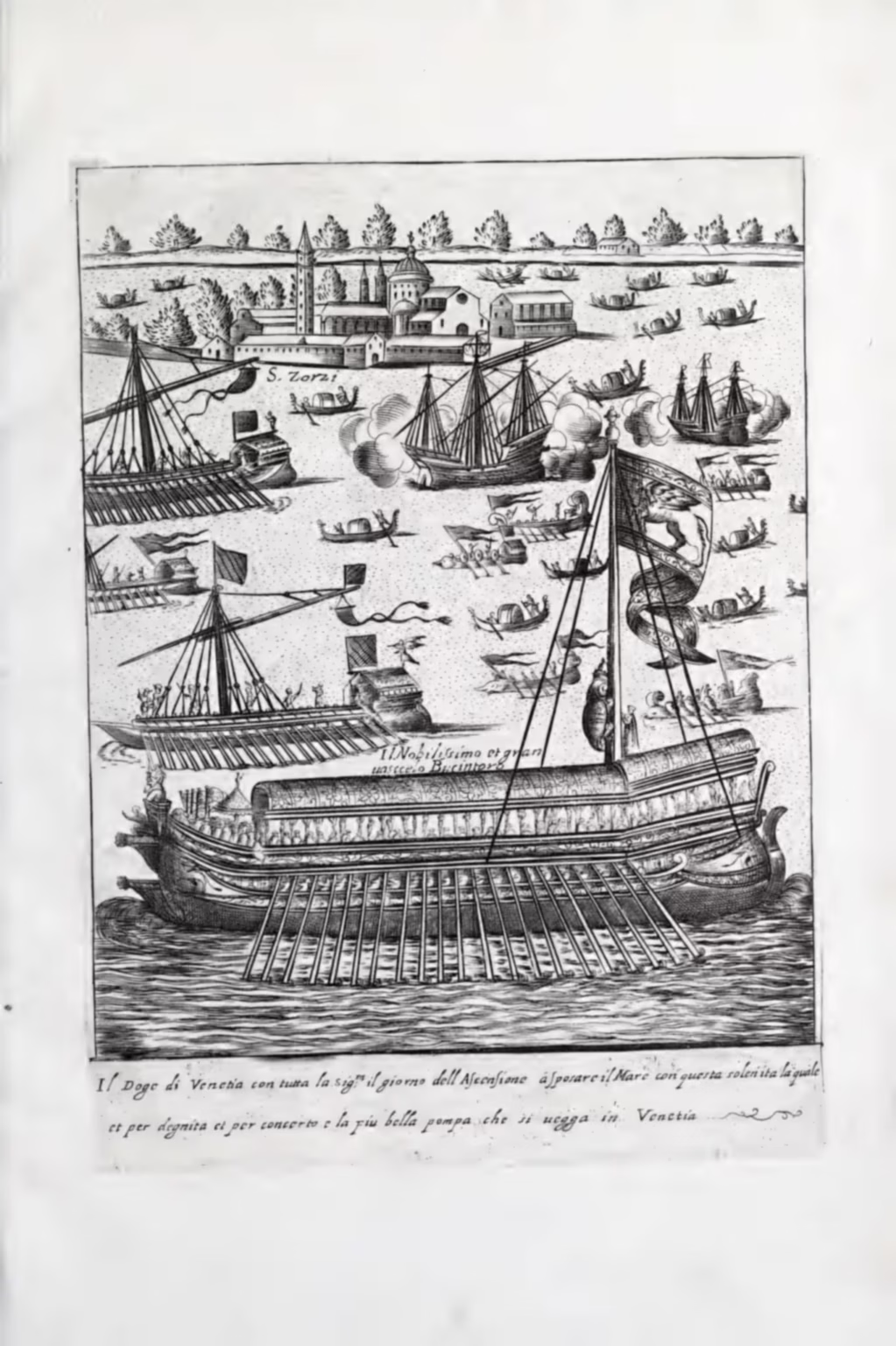
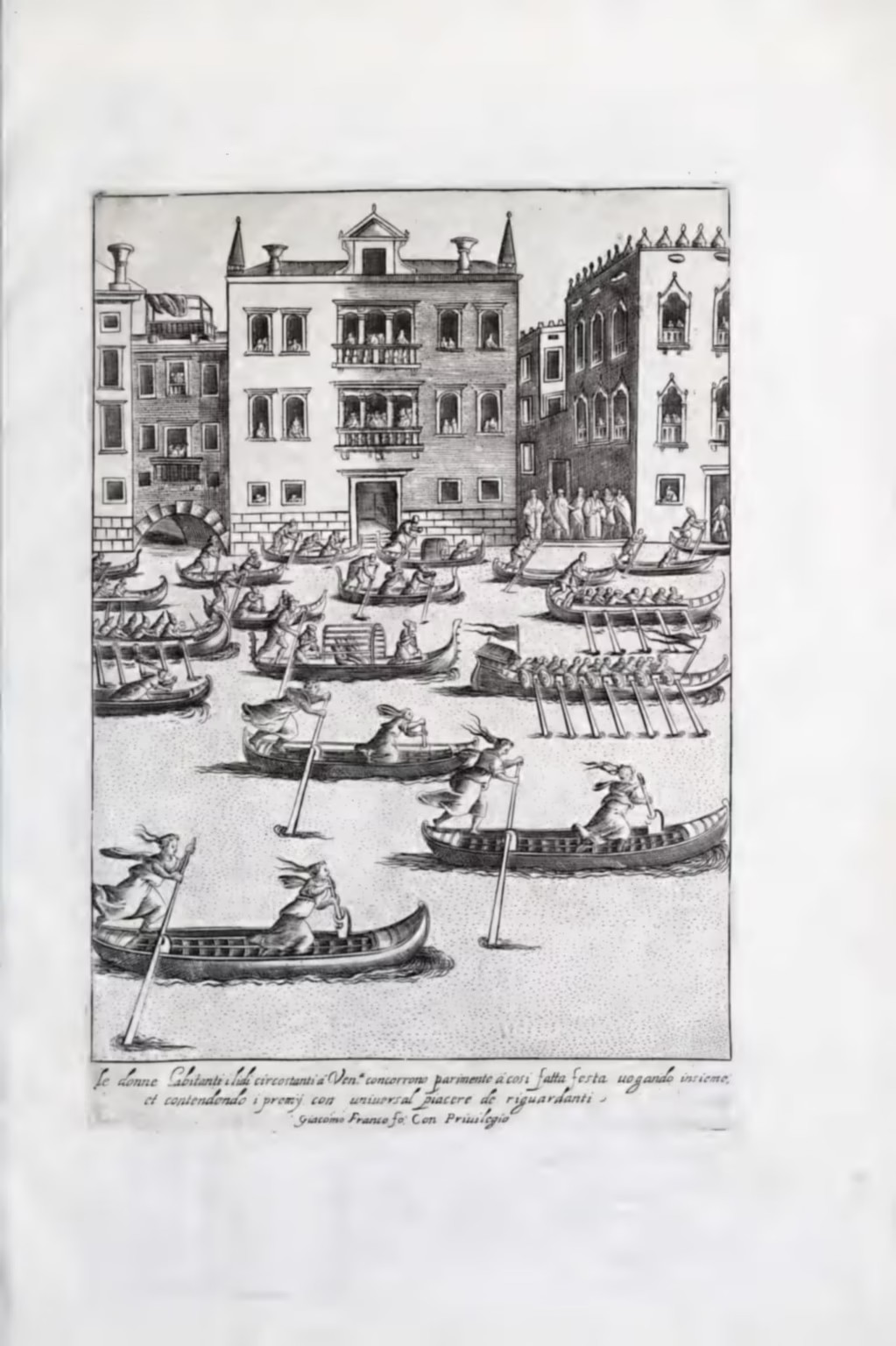
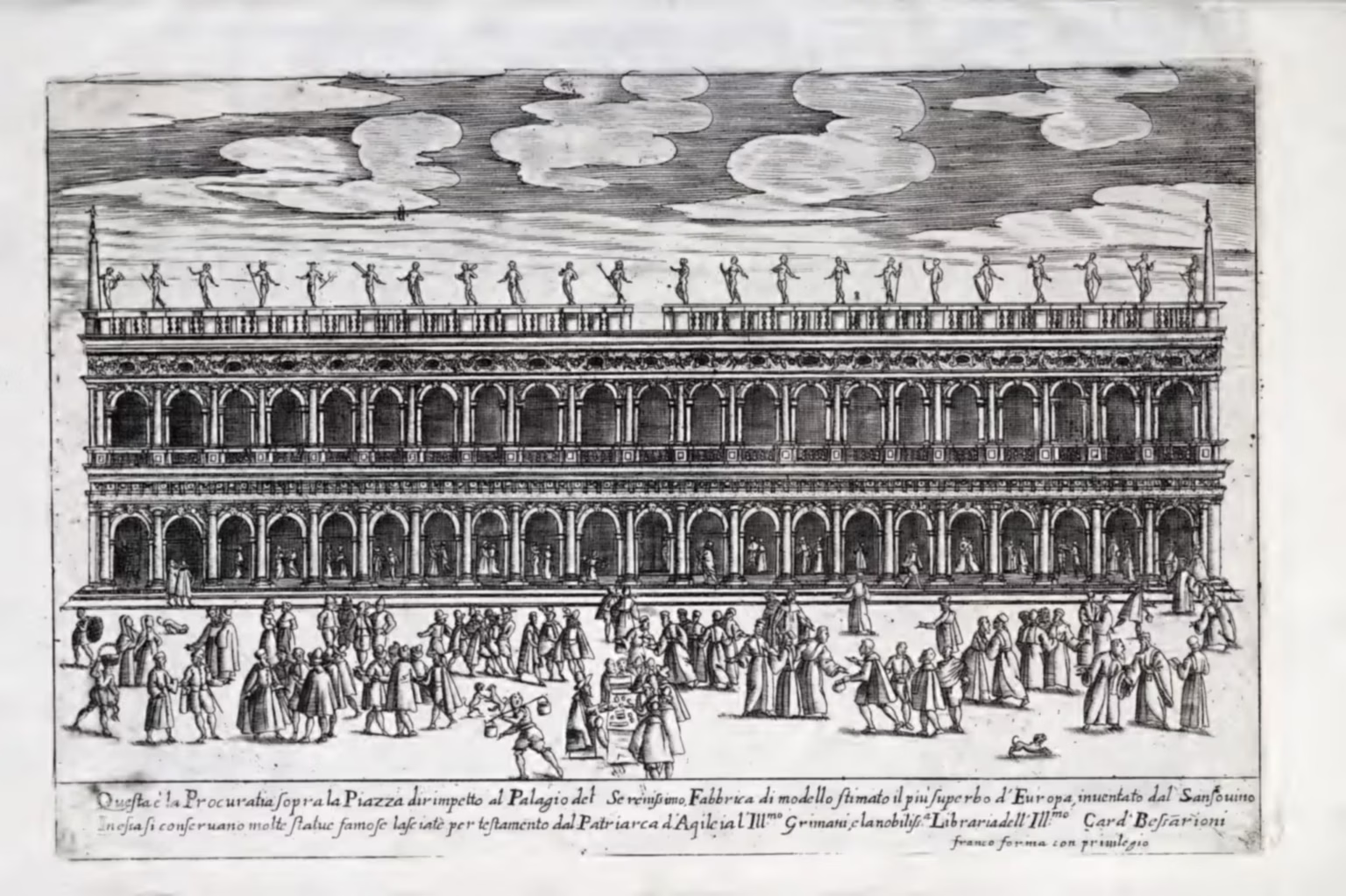
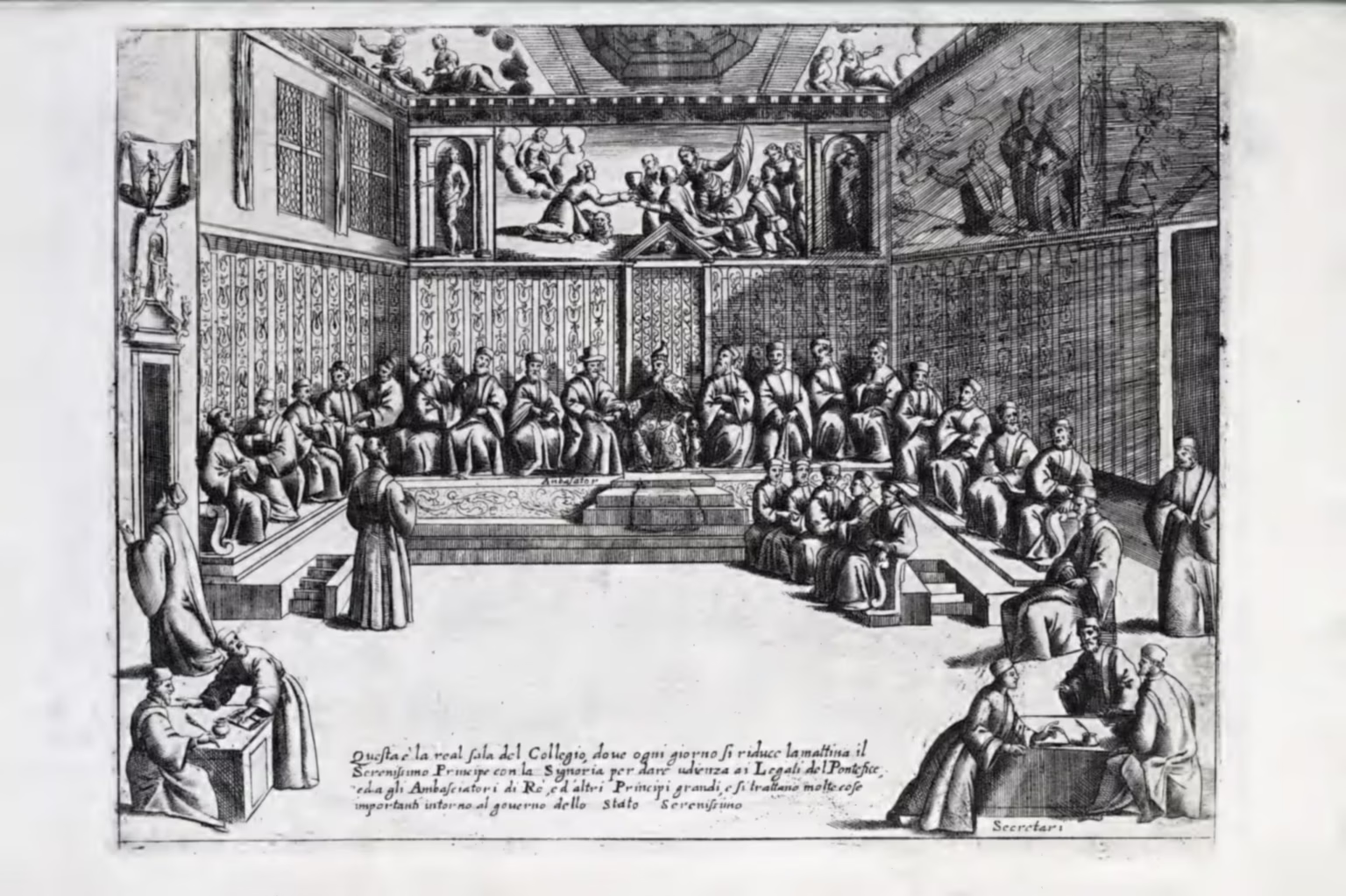
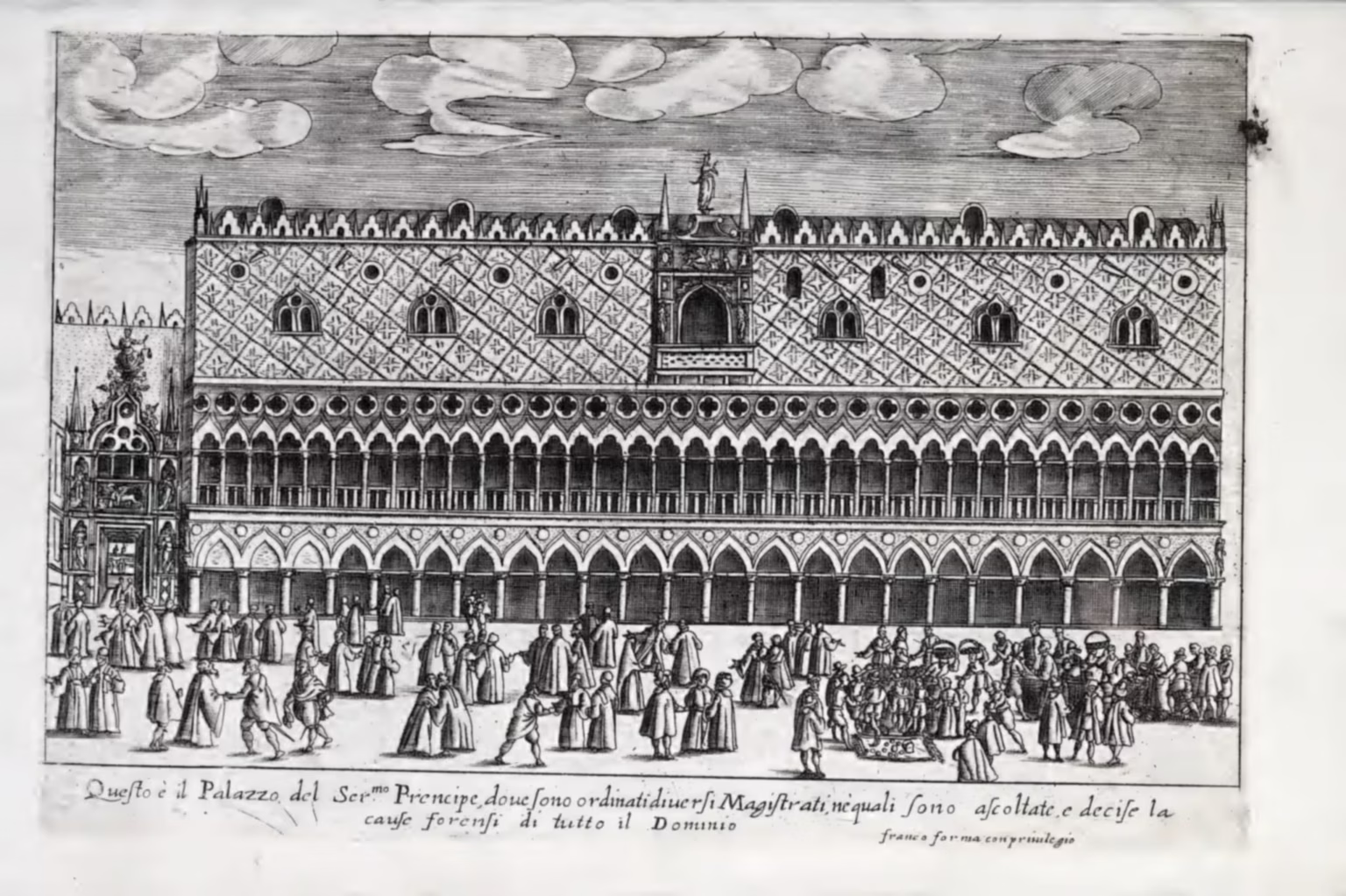
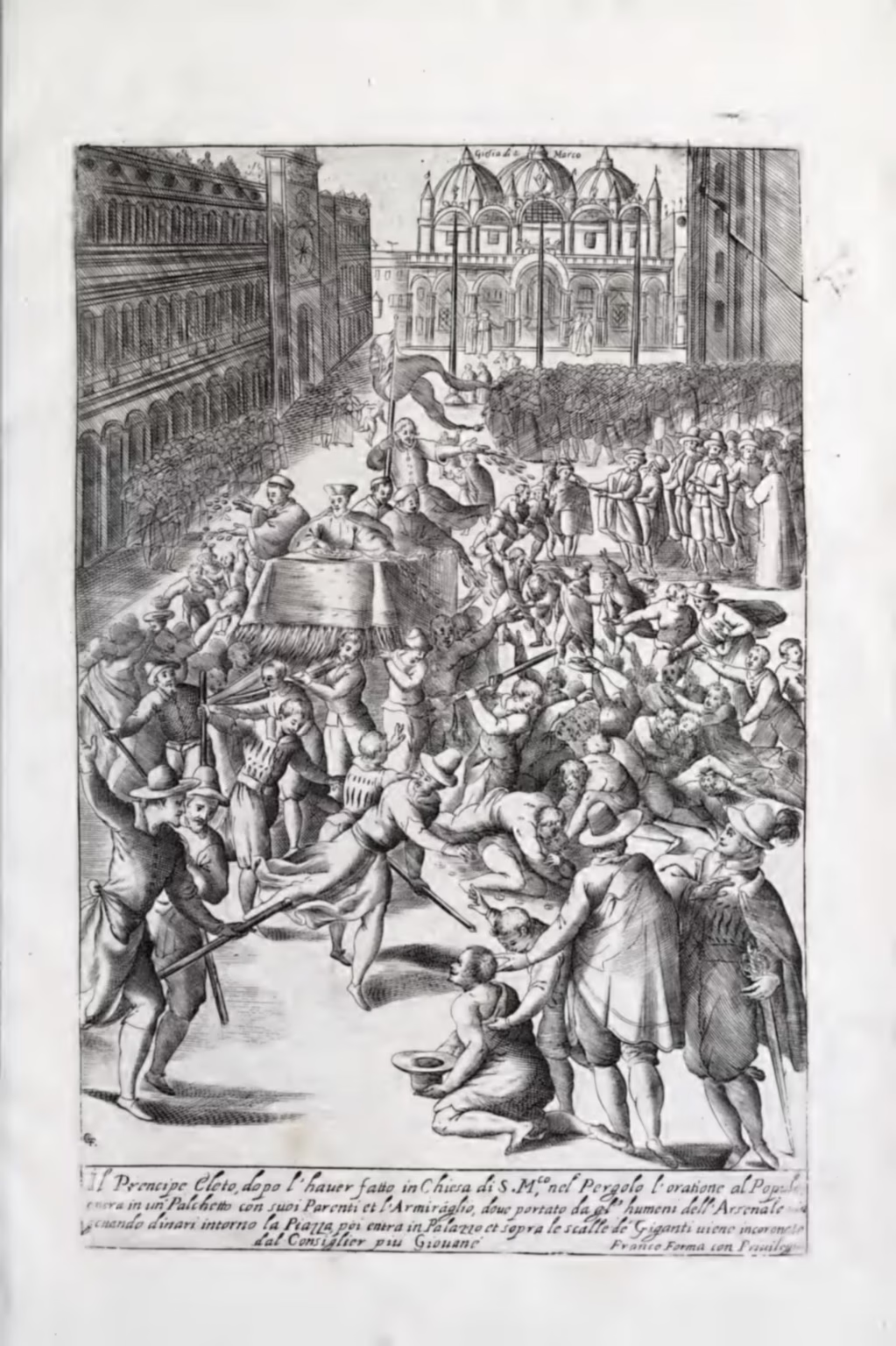
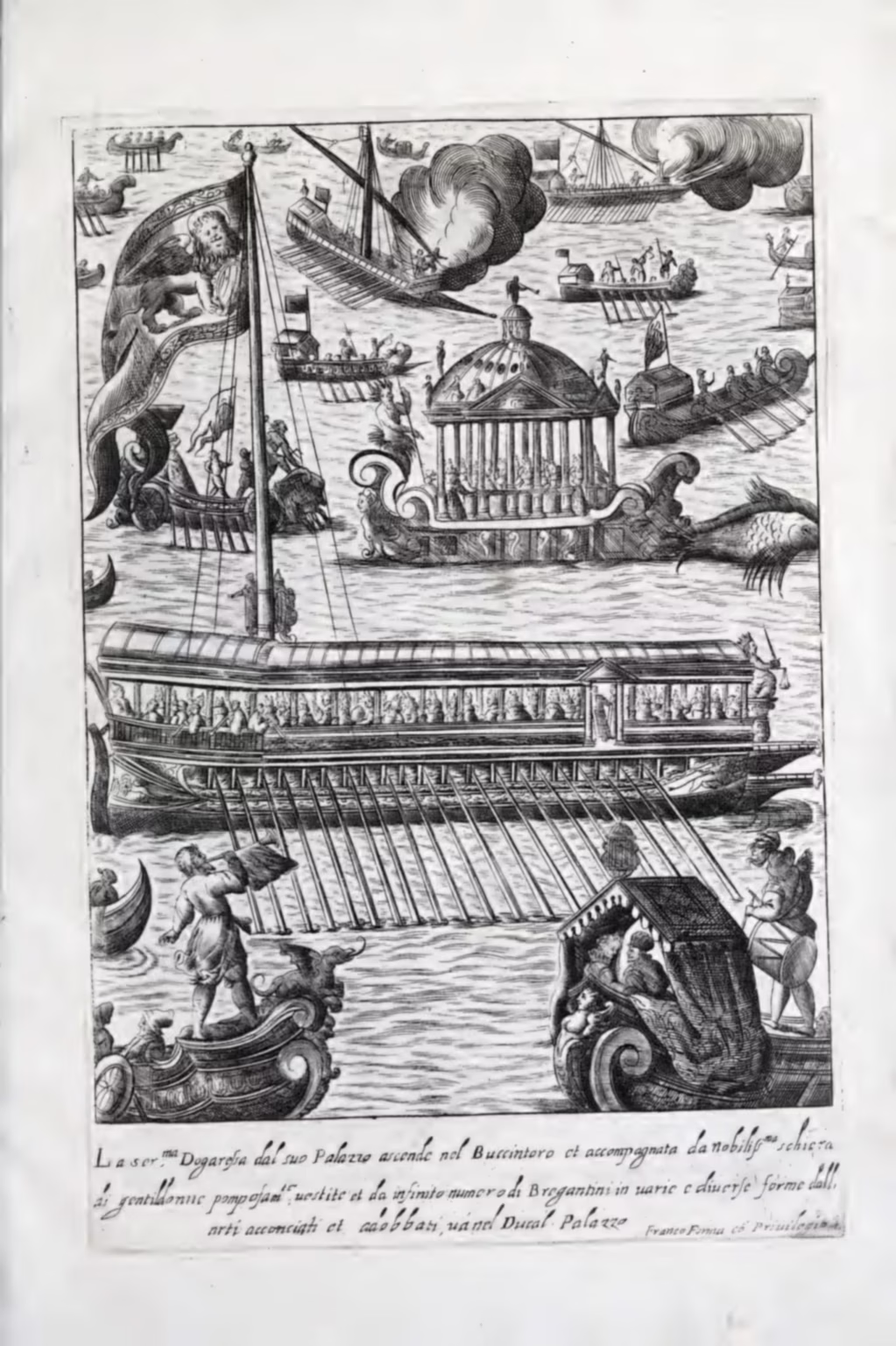
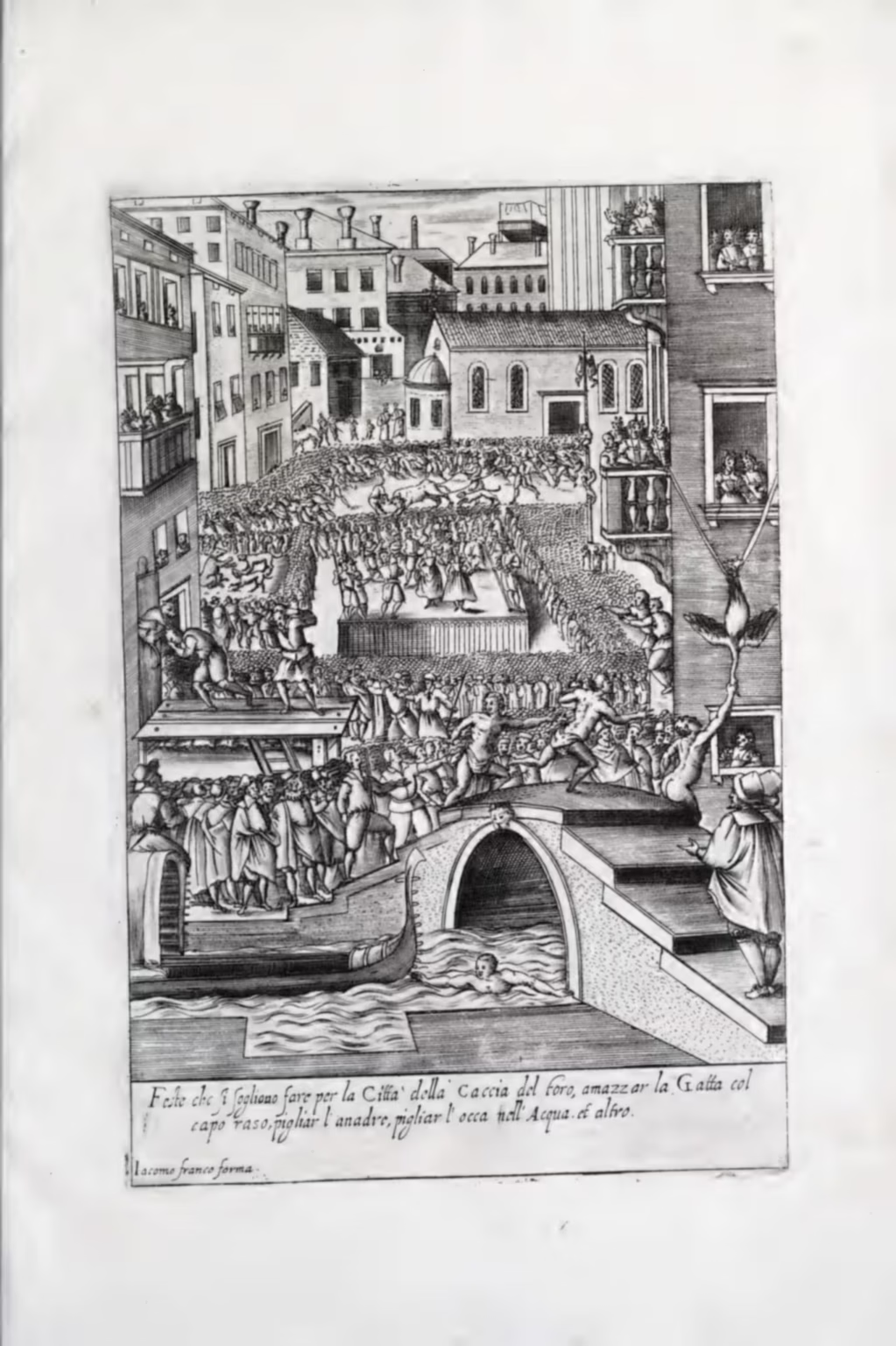
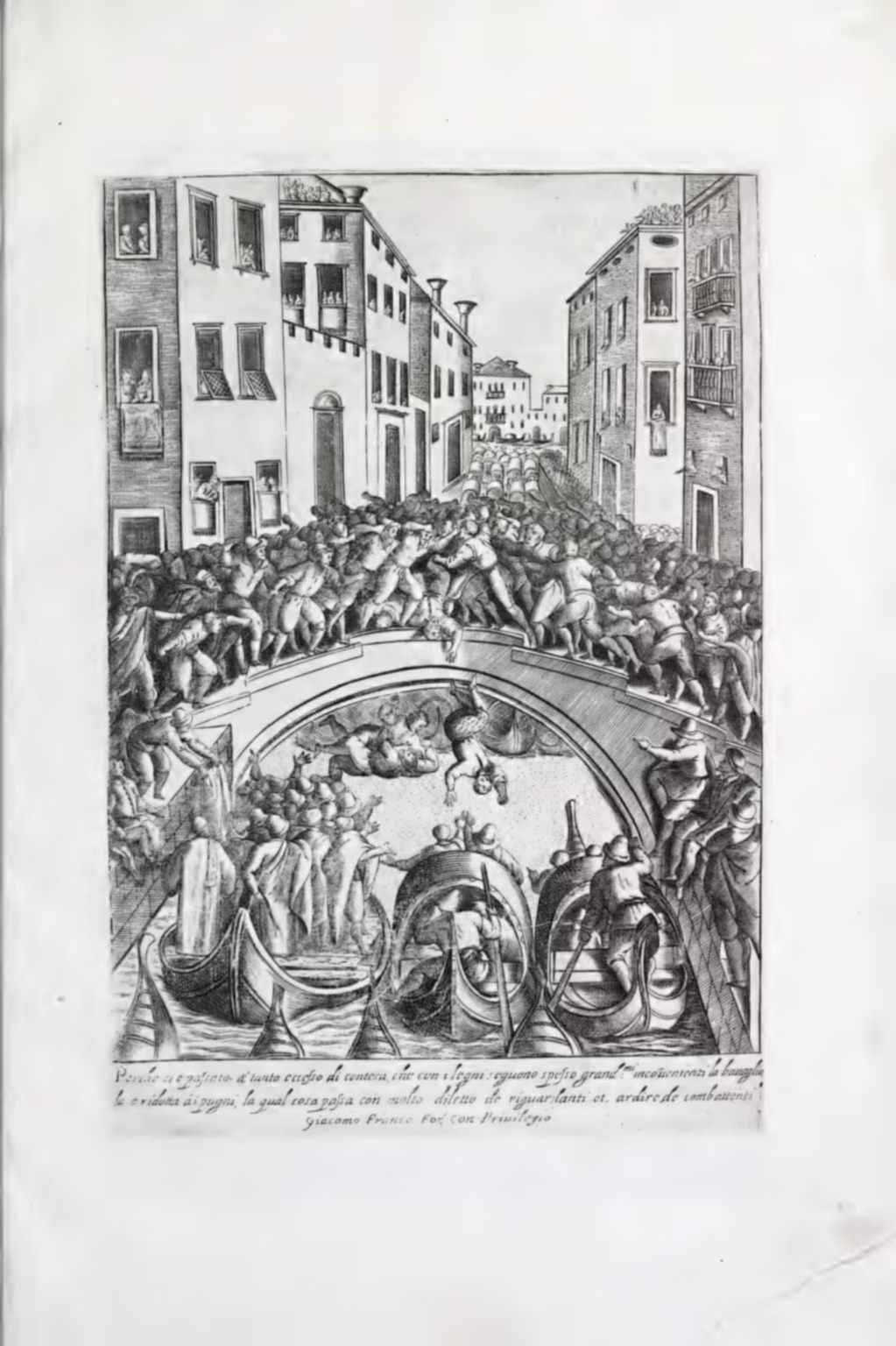
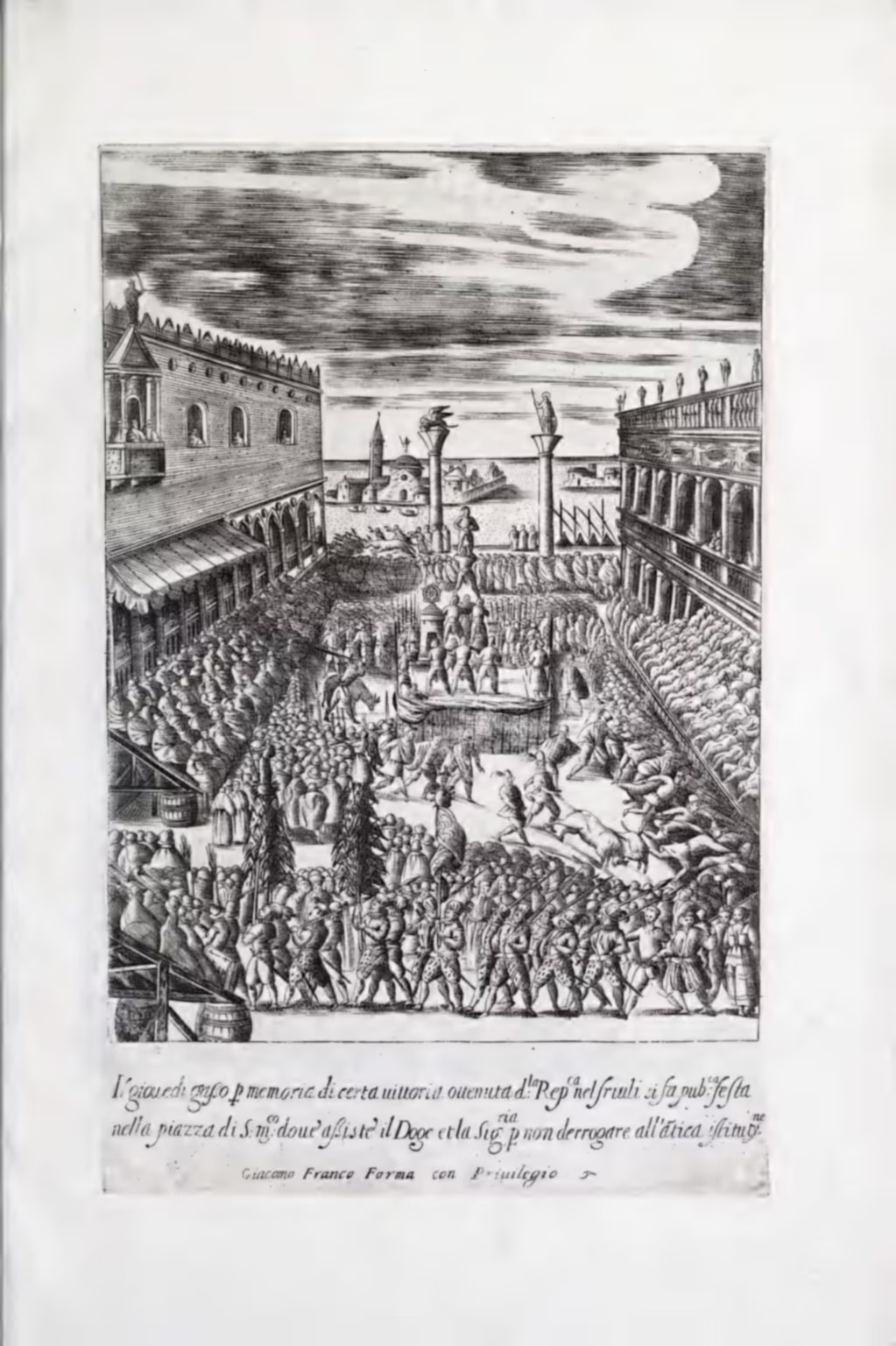
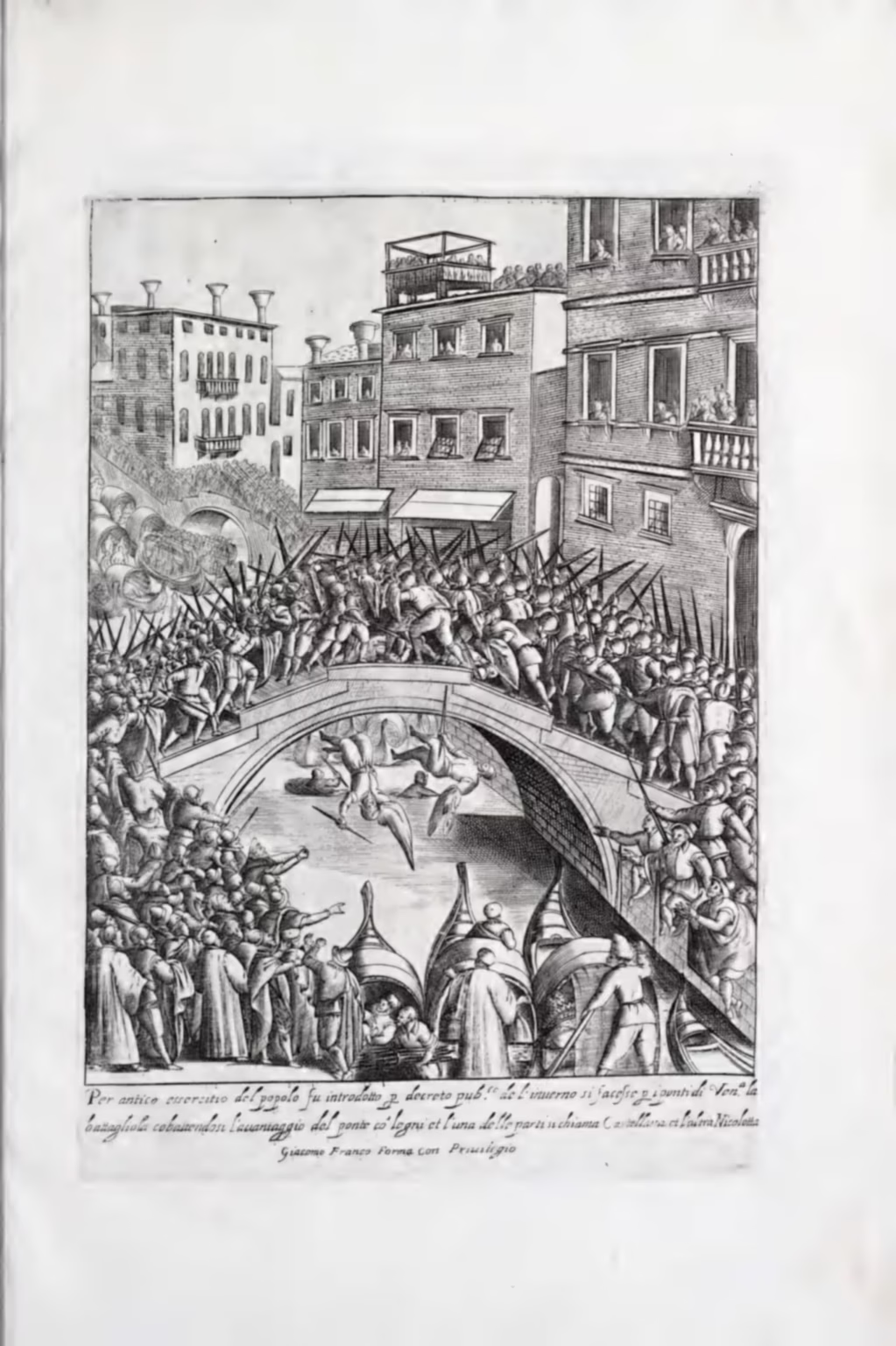
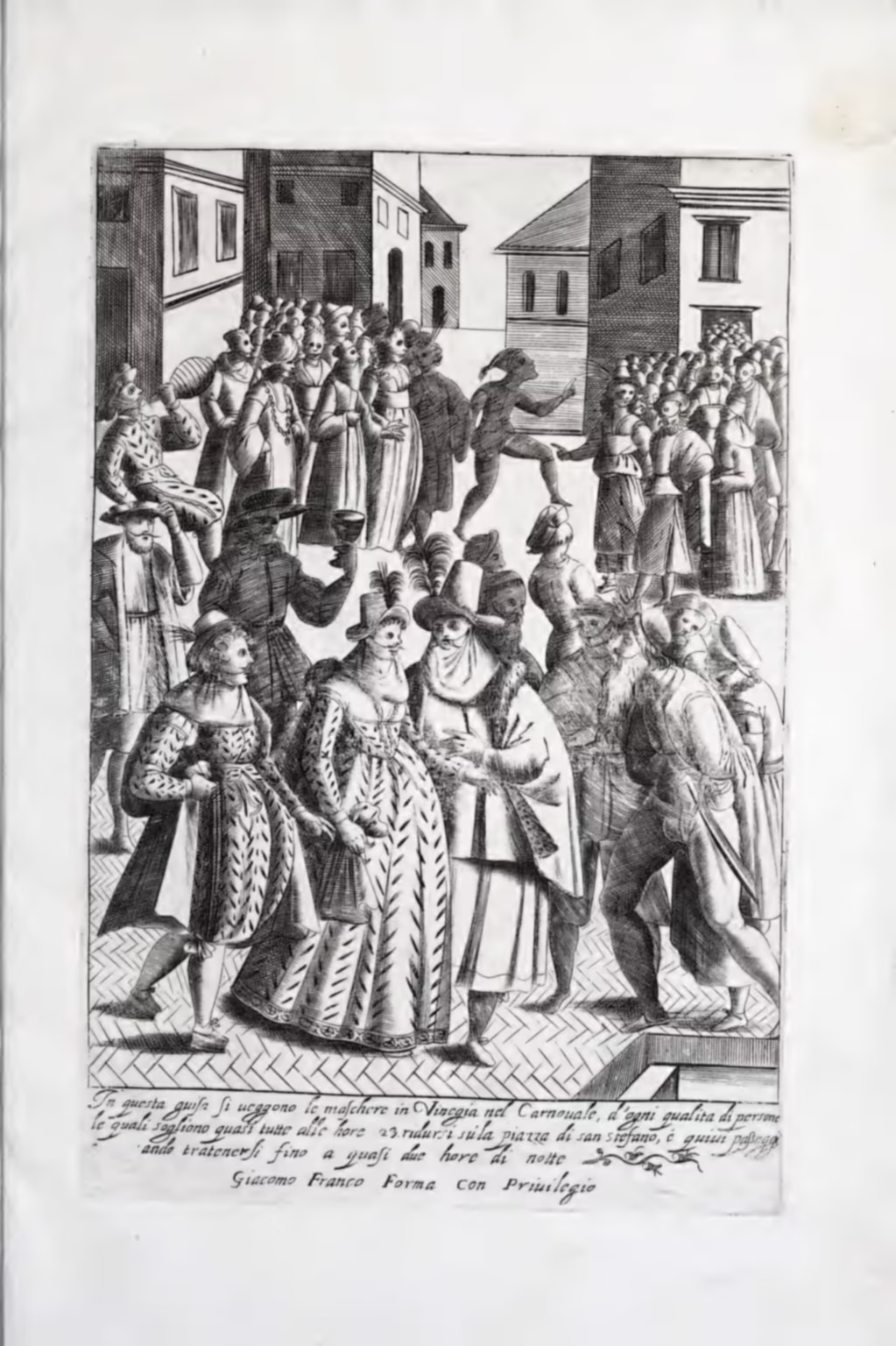
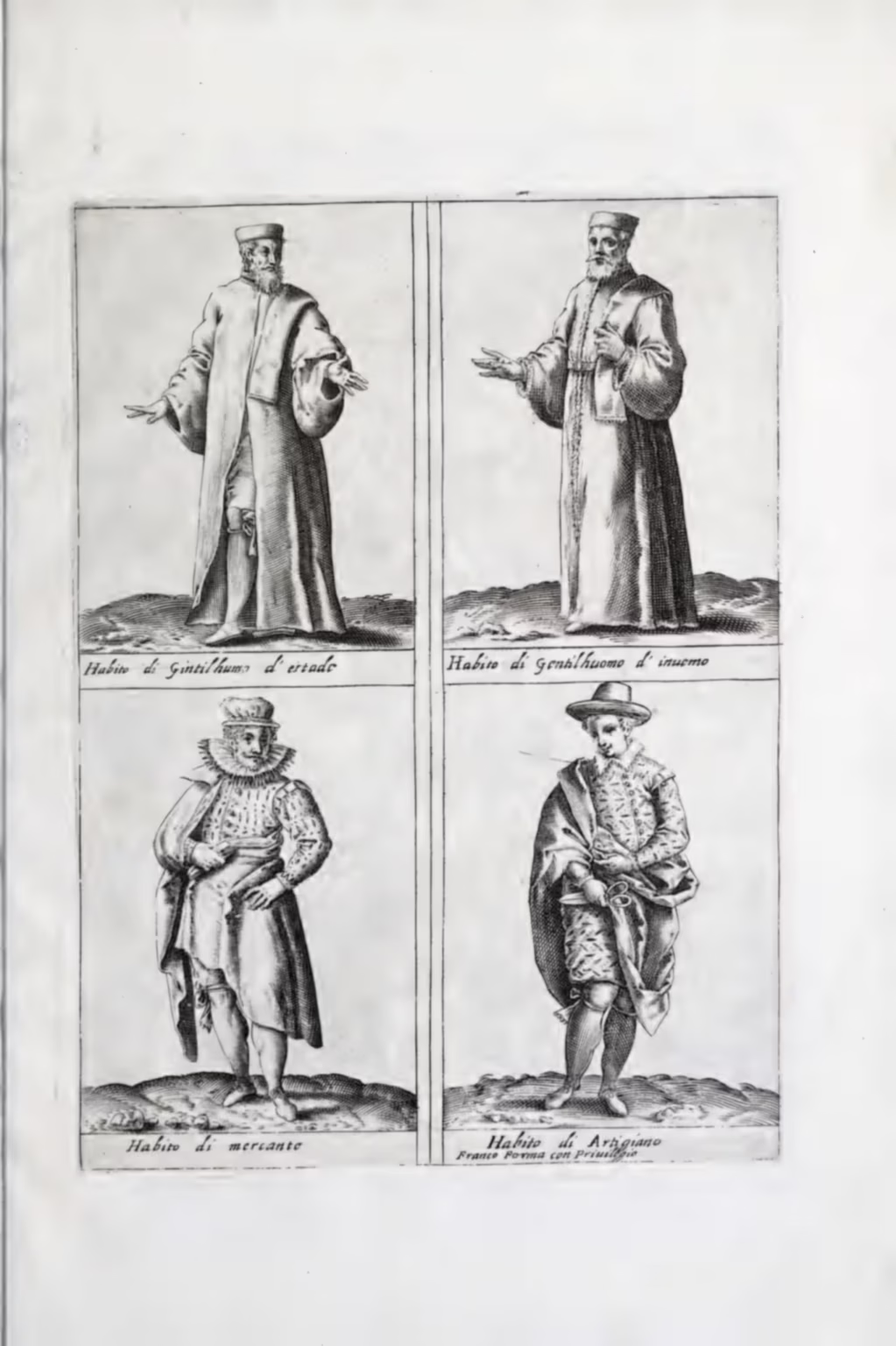
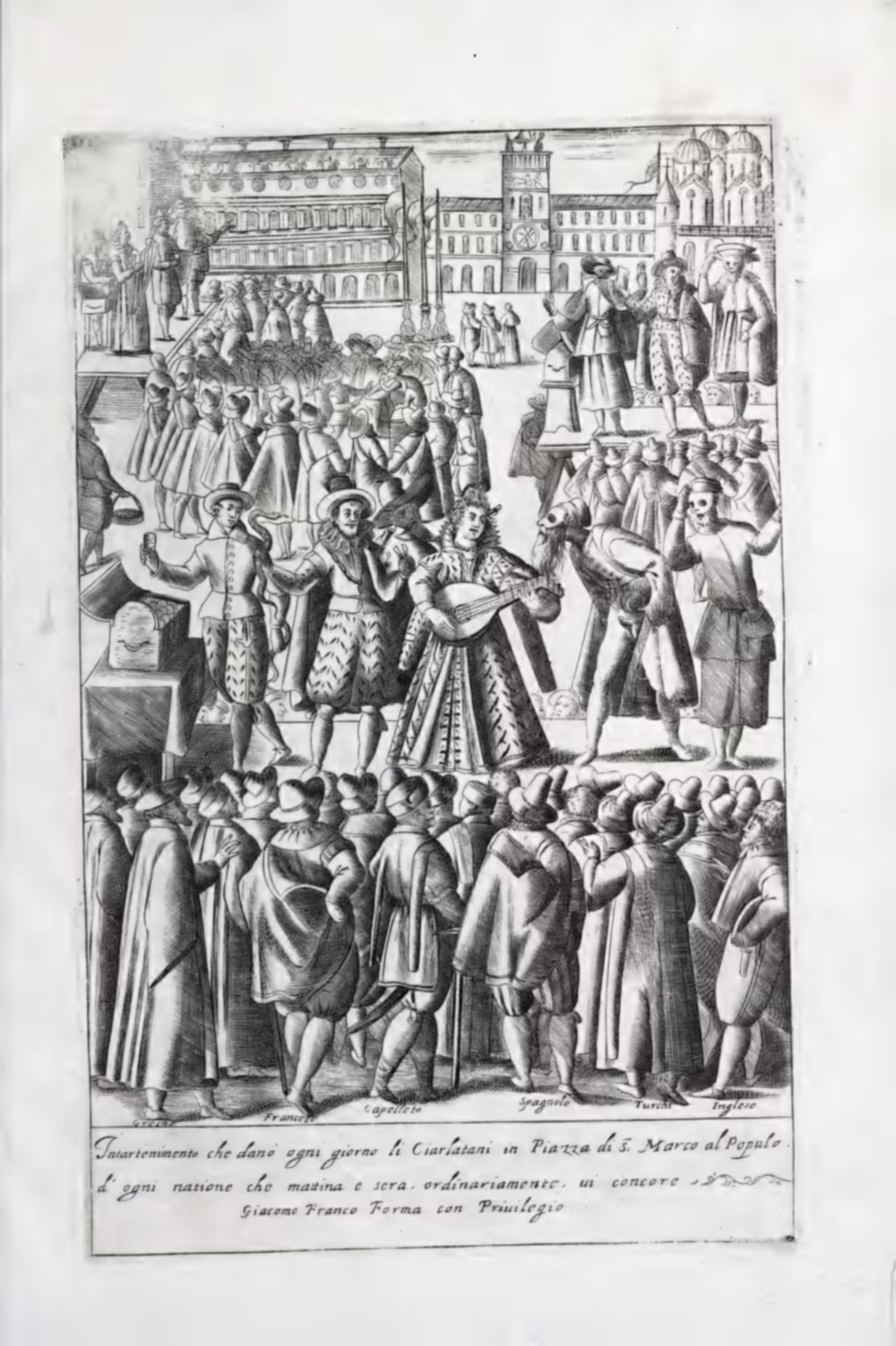
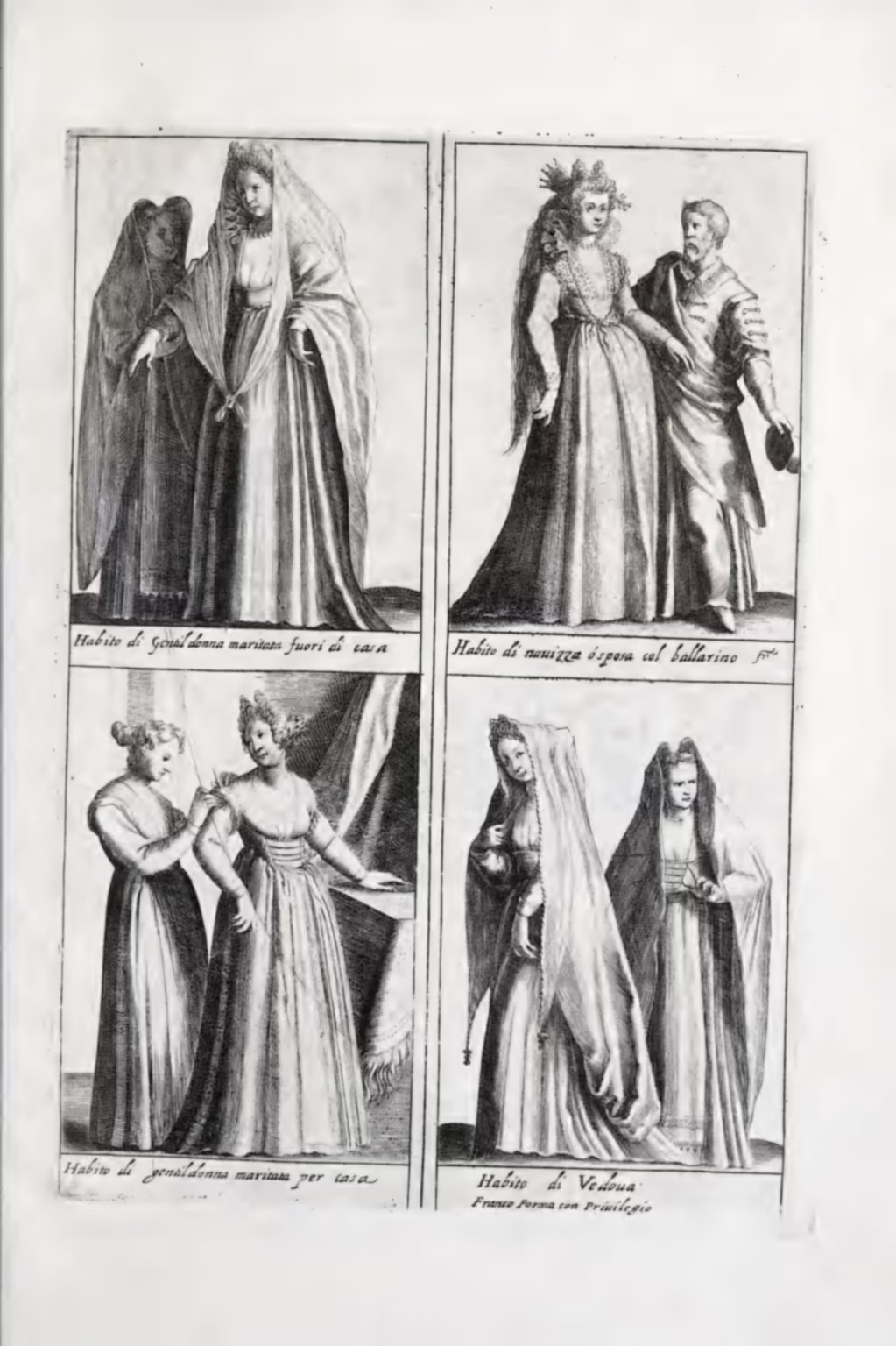
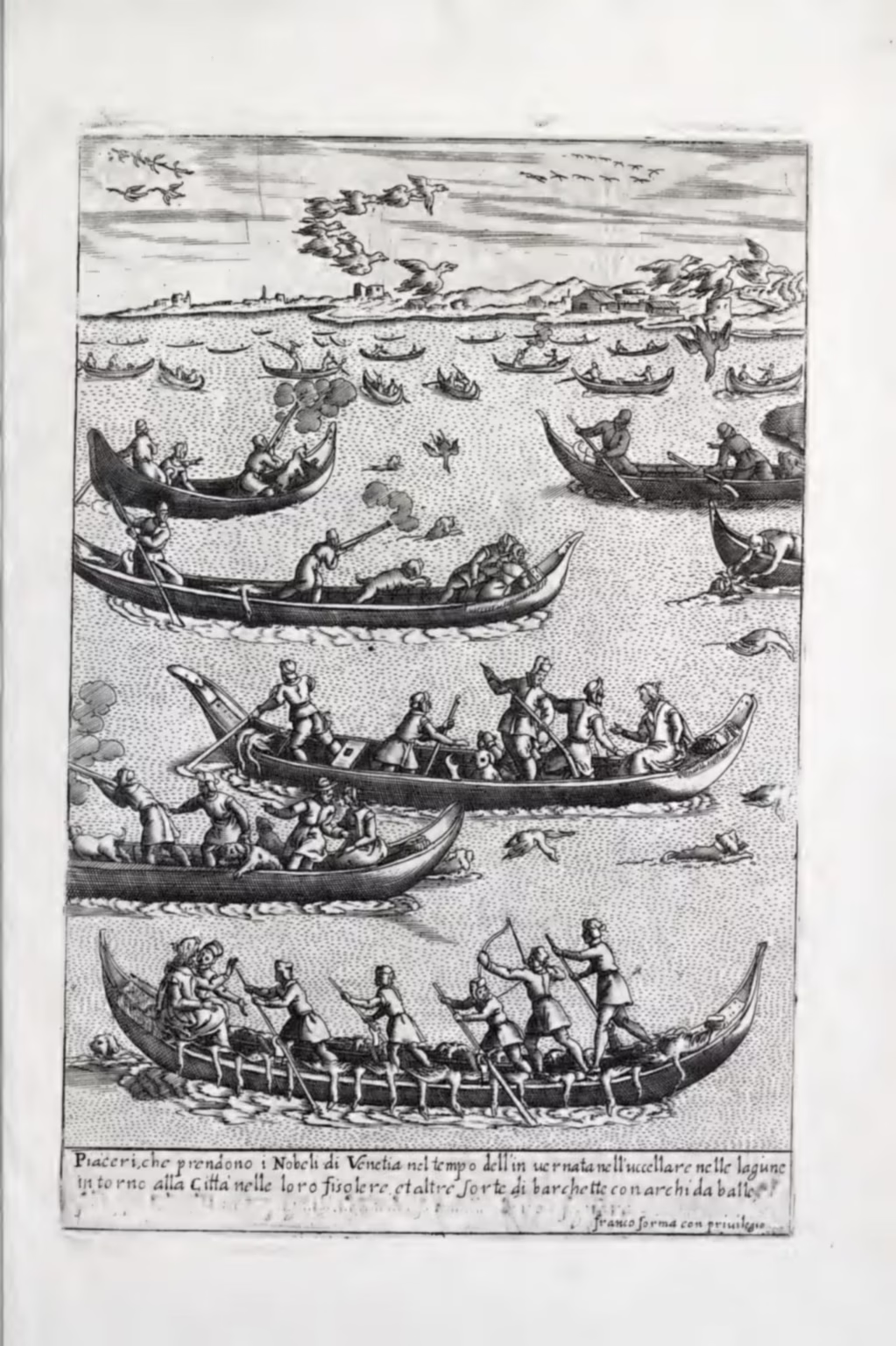
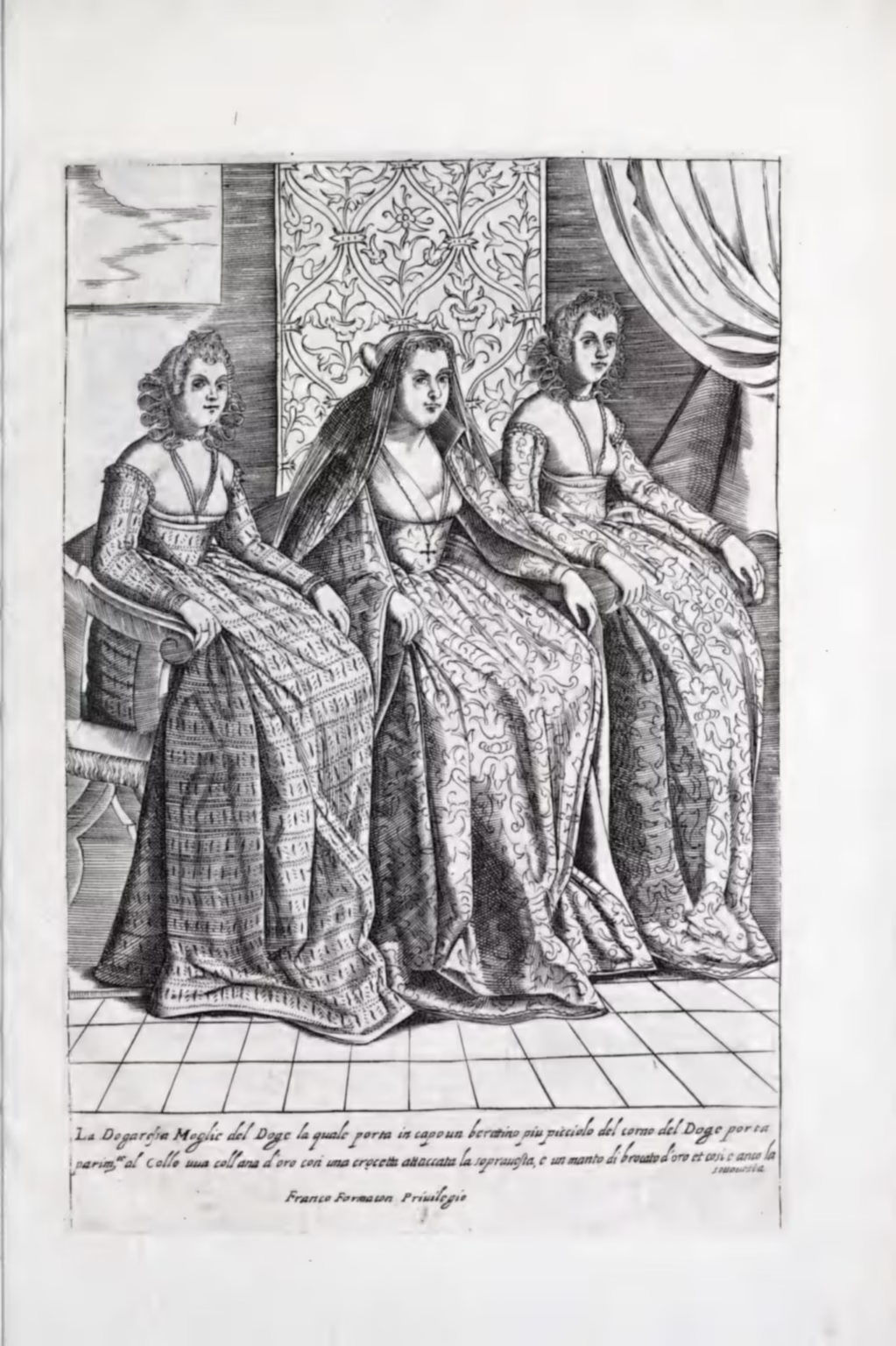
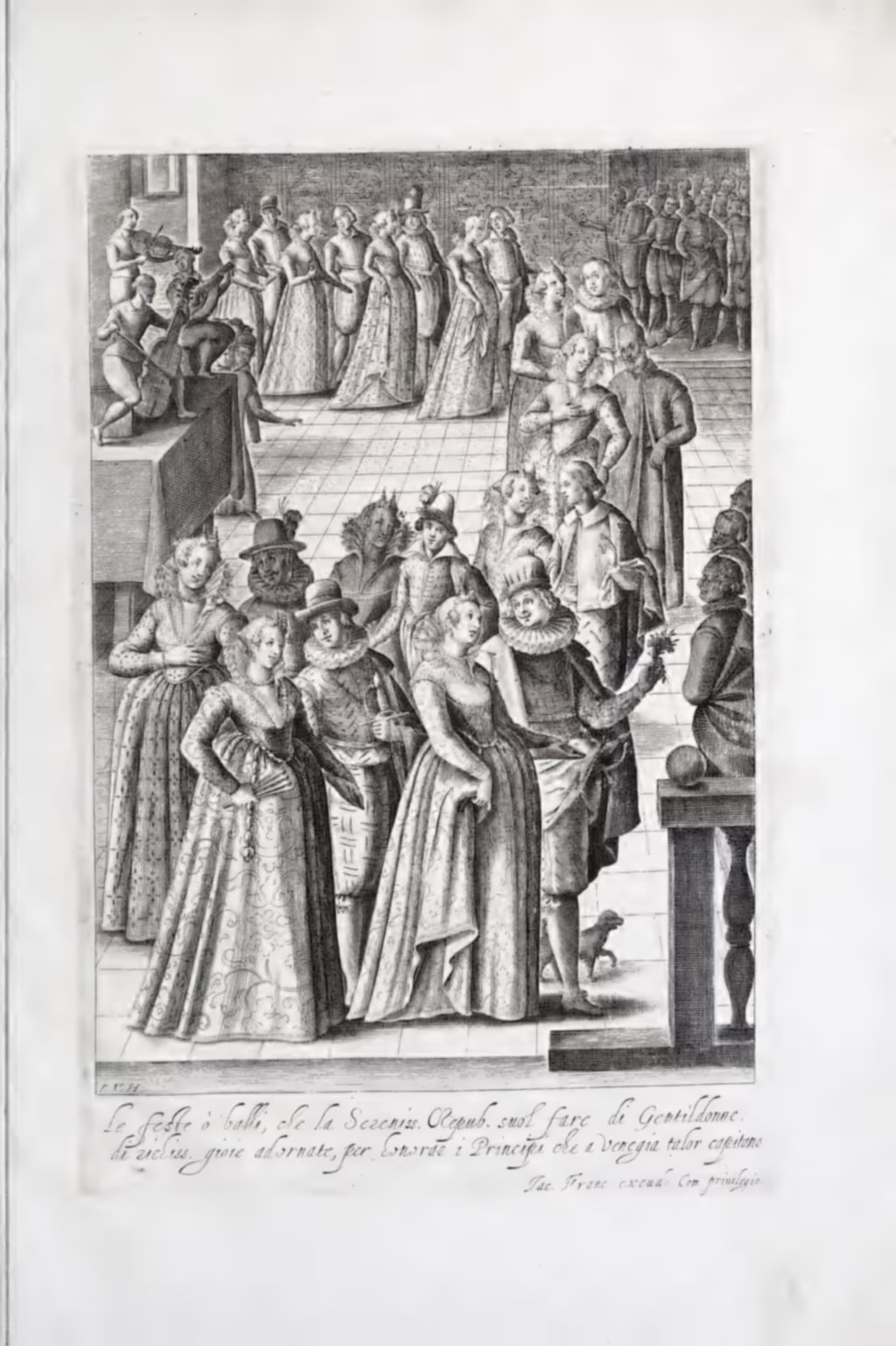
The Royal Academy has several prints online, in modest resolution. Here are some of those, which are missing in the collection above.
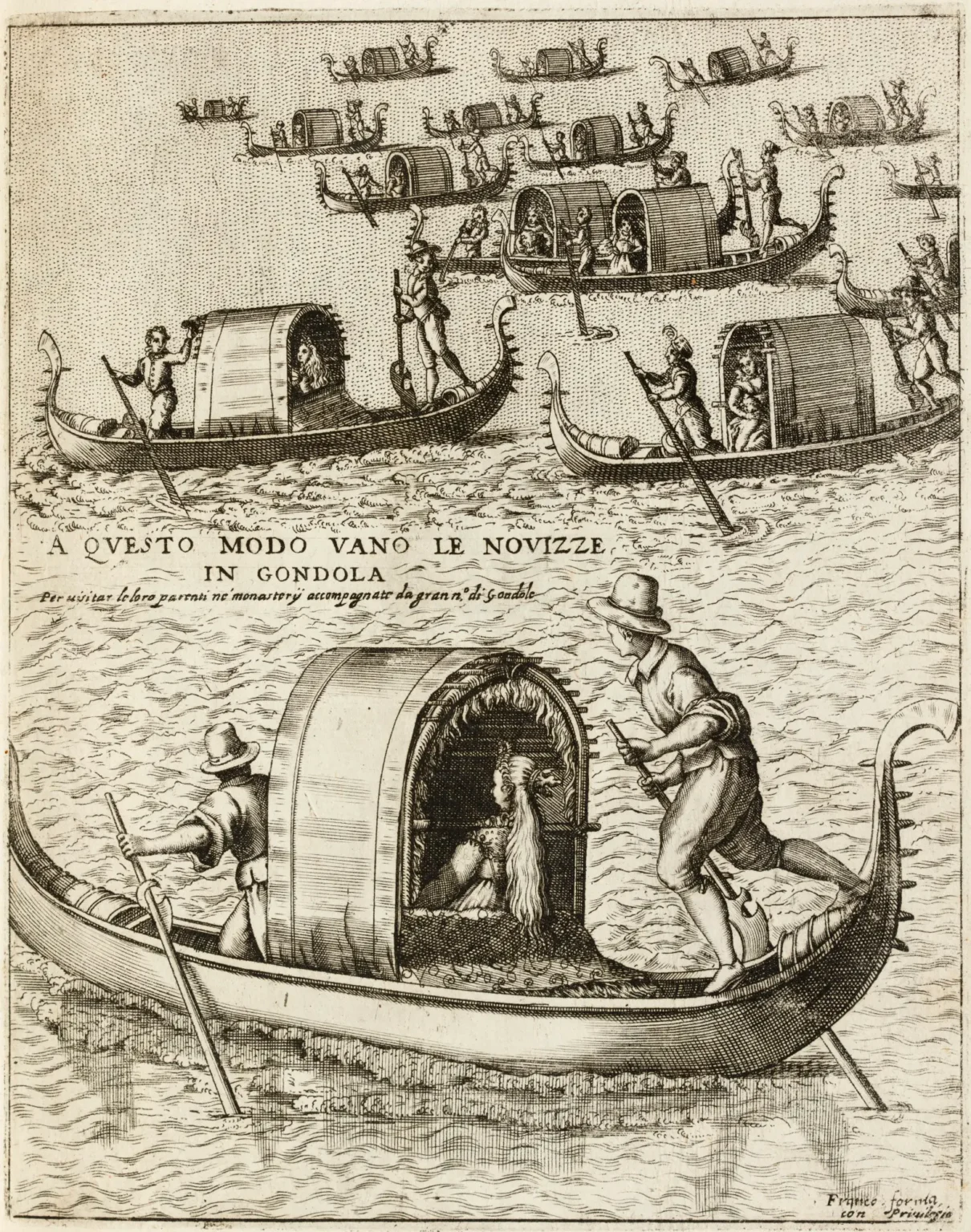
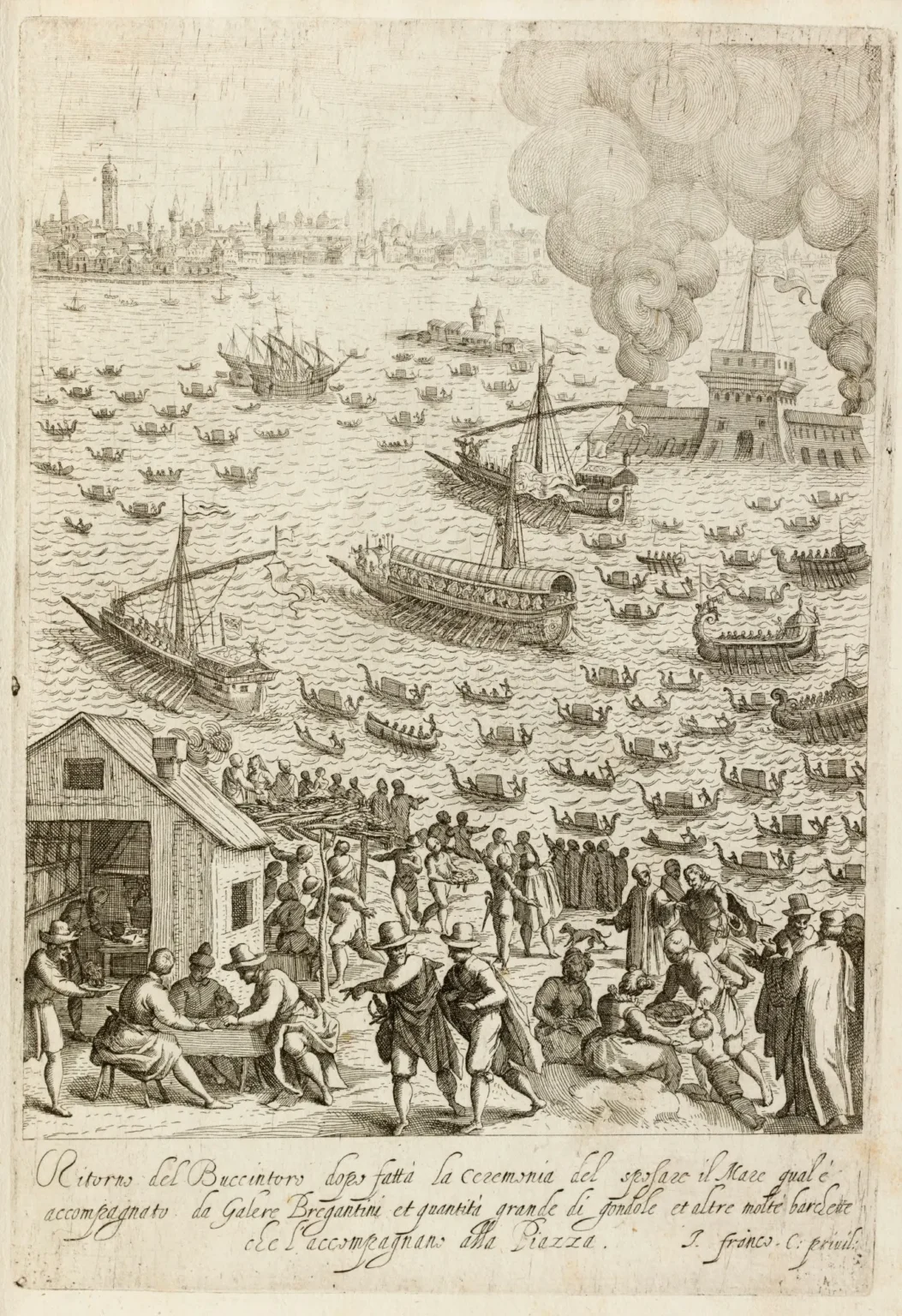
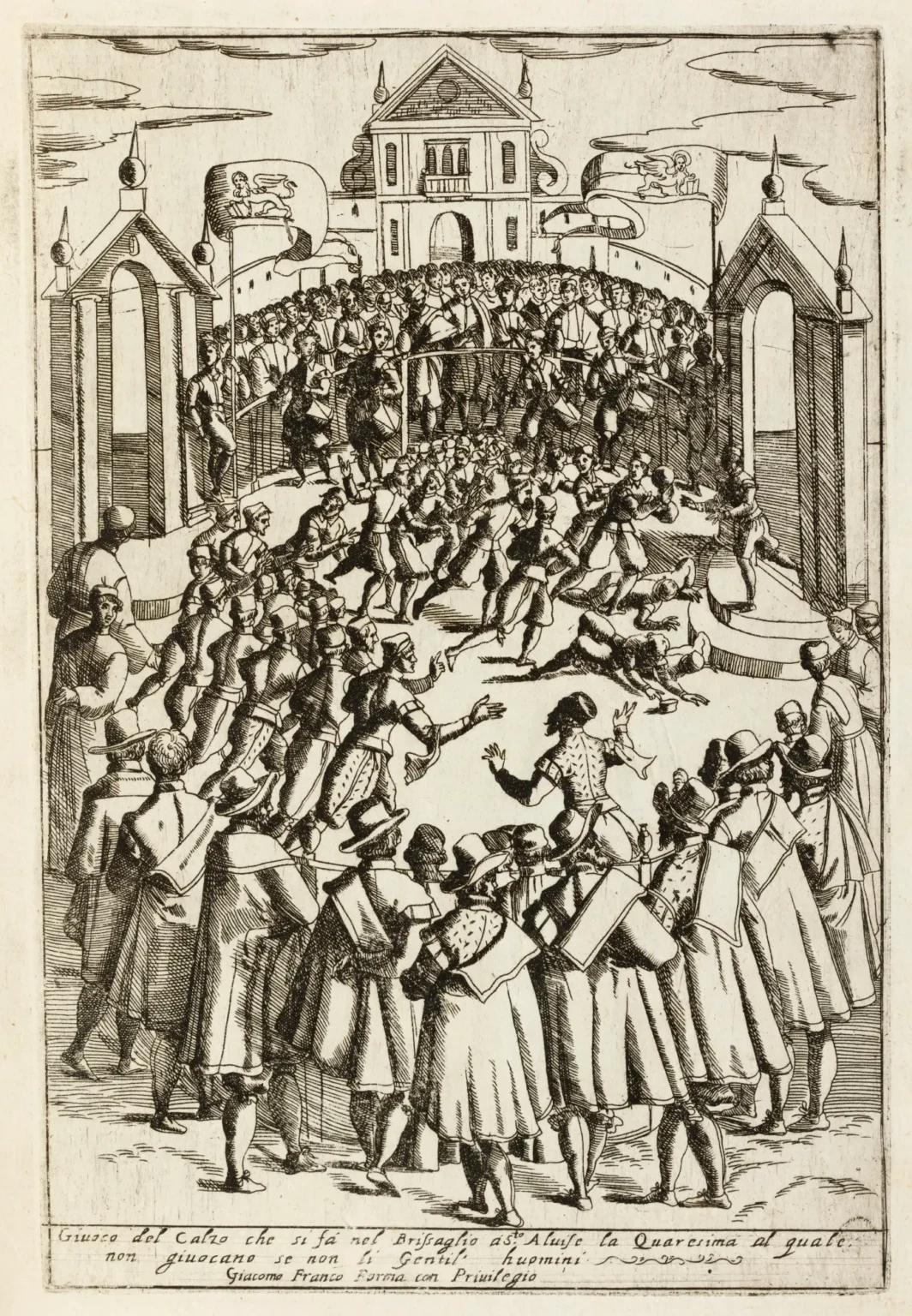
The dedication
The work was dedicated to the Duke of Mantua
AL SERENISS: SIGNOR D. VINCENZO GONZAGA
DVCA DI MANTOVA. E DI MONFERRATO:
Signore , & Patrone mio Colendiſſimo.IO dedicai prima il cuore, che i libri à V. Altez. Sereniſſ. ed hora; in teſtimonio di quella dedicatione: conſacro il preſente Volume, opera mia, & vſcita alla luce del Mondo dalle mie Stampe ſotto gli auſpici del famoſiſſimo ſuo nome. Quà dentro V. A. Sereniſs. vederà intagliate le fogie de gli habiti di queſta inclita Città, i publici Spettacoli, le Feſte più pompoſe della Sereniſs. Repub. le Gioſtre maritime, ed altri trattenimẽti reali, che ſi ſogliono fare à gran Prencipi, la maggior parte de’ quali furono già celebrati à gratificatione della Sereniſs. ſua perſona; e molt’altre coſe vi ſono rinchiuſe, che ſecondo i tempi, e le occaſioni ſi fanno in queſta Città, degne d’eſſer vedute con diletto; delle quali mi rendo certo, che ne prenderà particolar piacere non ſolo l’occhio, ma ancora l’animo di V. A. ricordandoſi di hauer ſcoperto in ſimil Feſte il ſingolariſſimo amore, che viue, per lunga ferie d’anni, tra queſta Eccelſa Patria, e la Sereniſs. ſua Caſa. Degniſi adunque l’Alt. V. di riceuere, e gradire benignamente queſto dono, picciolo, ſe ſi miſura col compaſſo del ſuo merito, ma grande ſe ſi peſa con la bilancia delle mie forze, e dell’animo mio diuotiſſimo all’Altezza Voſtra Sereniſſima: è pié della quale per fine con humiliſſima riuerenza m’inchino.
Di Venetia, adi 1. Gennaro 1610.
Di Voſtra Altezza Sereniſſima
Diuotiſs. & humiliſs. SeruitoreGiacomo Franco.
In my rushed translation:
To the Most Serene Lord D. VINCENZO GONZAGA
Duke of Mantua and of MonferratoLord, & my most esteemed Patron
I first dedicated my heart, rather than the books, to Your Serene Highness, and now, as a testimony of that dedication, I consecrate this present Volume, my work, published to the light of the World from my press under the auspices of your most famous name. Inside, Your Serene Highness will see illustrated the fashions of the attire of this renowned City, the public spectacles, the most pompous festivals of the Serene Republic, the maritime jousts, and other royal entertainments that are usually held for great Princes, most of which have already been celebrated for the gratification of Your Serene Person; and many other things are enclosed within that are worthy of being seen with delight according to the times and occasions held in this City, of which I am certain will bring particular pleasure not only to Your Eye but also to Your Soul, recalling the unique love that has long resided for many years between this Exalted Fatherland and Your Serene House during such Festivals. May Your Highness graciously receive and appreciate this gift, small when measured by the compass of its merit, but great when weighed with the scale of my strengths and my most devoted spirit to Your Most Serene Highness: to which, in the end, I bow with the utmost humility.In Venice, on the first day of January 1610.
The Most devoted and most humble servant
of your Most Serene Highness,Giacomo Franco.
Related articles
- Gli abiti de veneziani — by Giovanni Grevembroch
- Gaetano Zompini and the trades of Venice
- Il Gran teatro di Venezia — Domenico Lovisa
Bibliography
- Franco, Giacomo. Habiti d'huomeni et donne venetiane con la processione della ser.ma signoria et altri particolari cioe trionfi, feste et cerimonie publiche della nobilissima citta di Venetia. Giacomo Franco forma in Frezzaria all'insegna del sole, 1610. [more] 🔗
- Stefani, Chiara. FRANCO, Giacomo in Dizionario Biografico degli Italiani – Volume 50. Treccani, 1998. 🔗
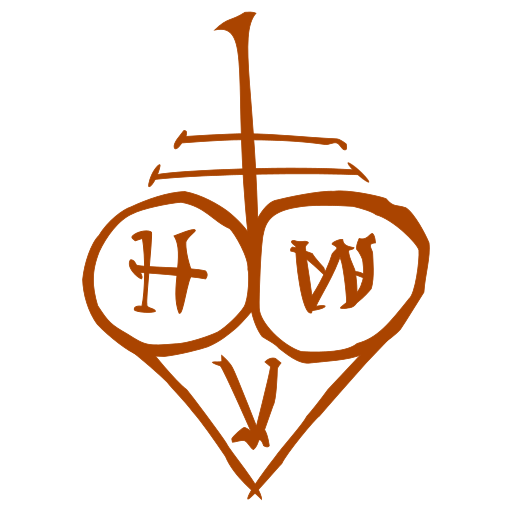
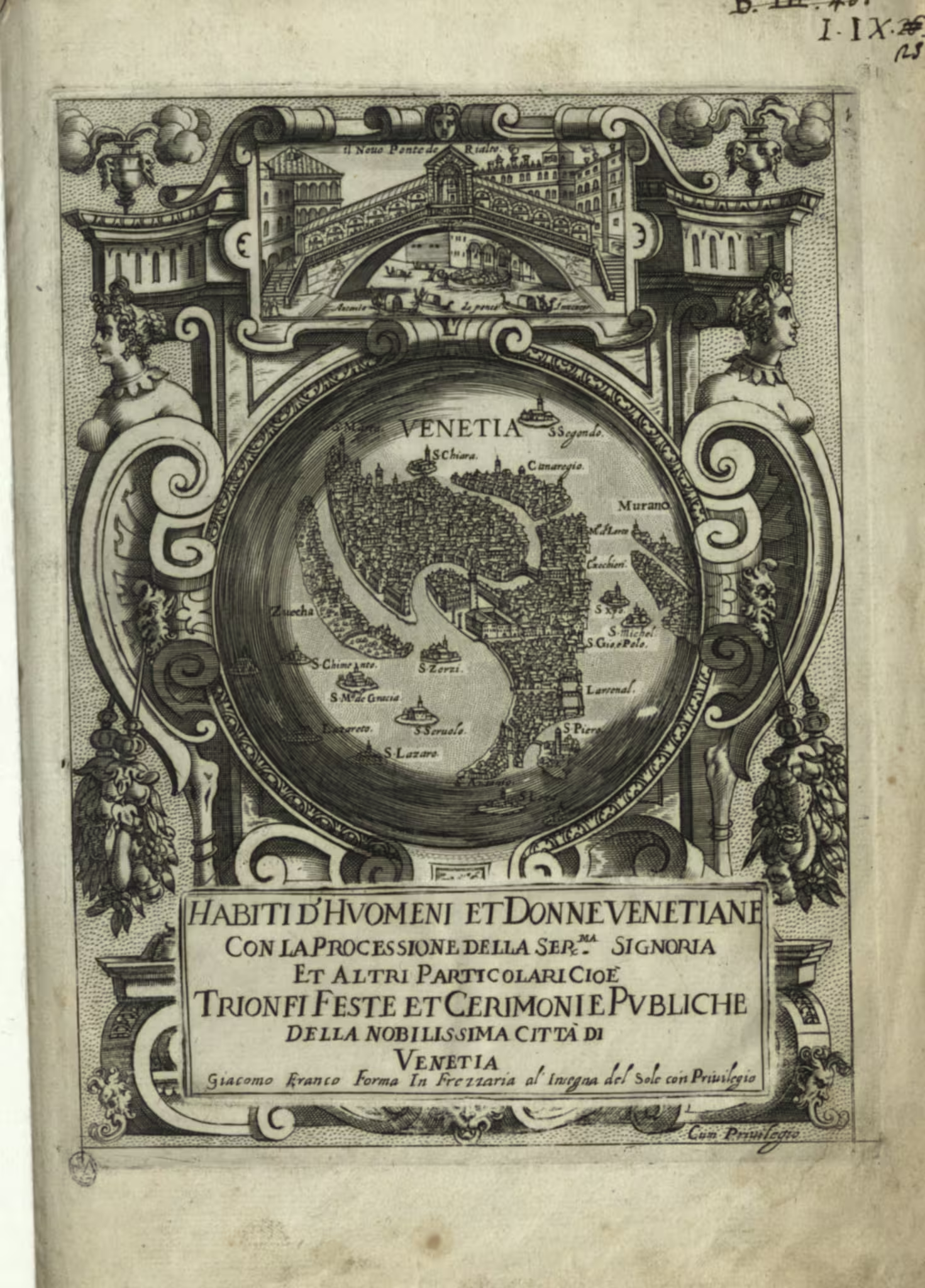
Leave a Reply